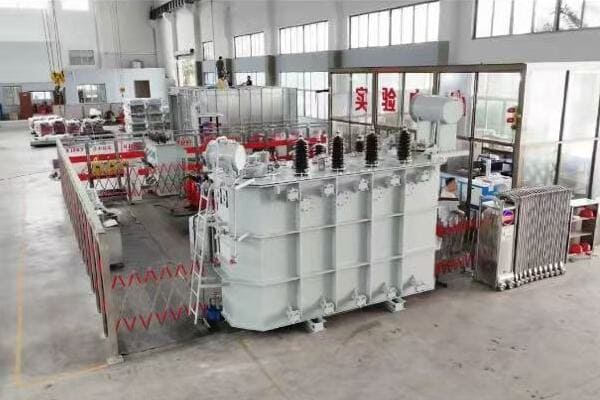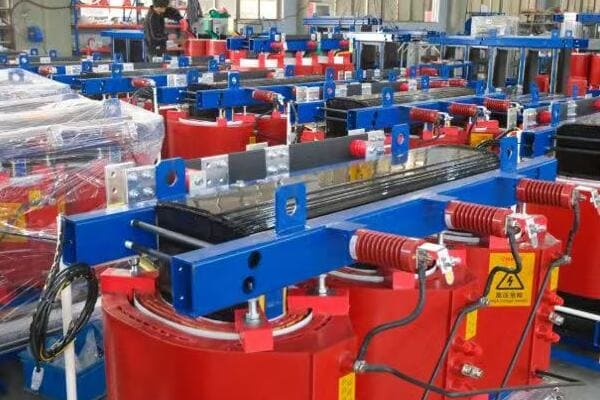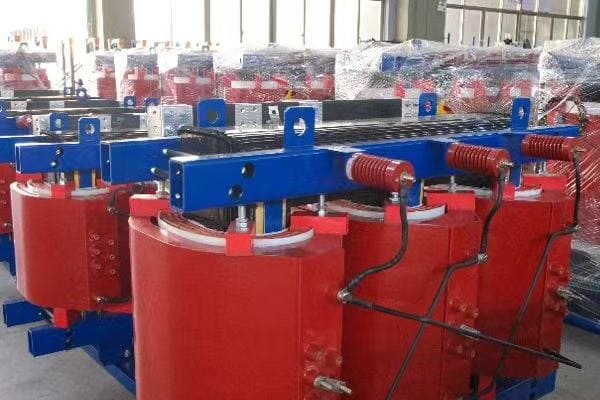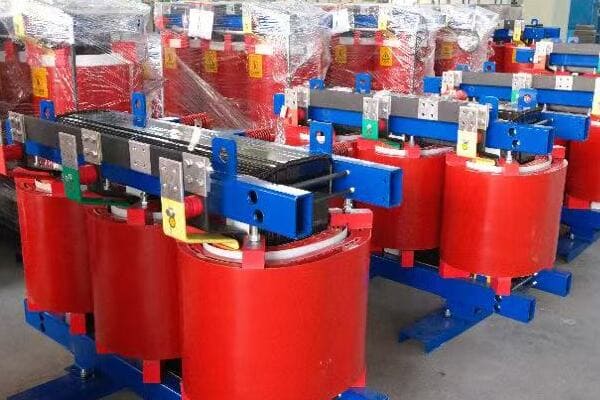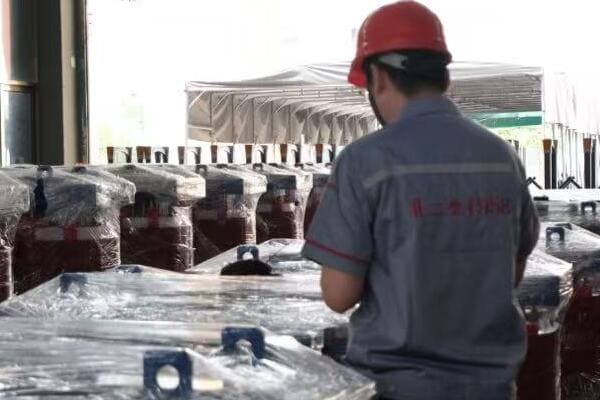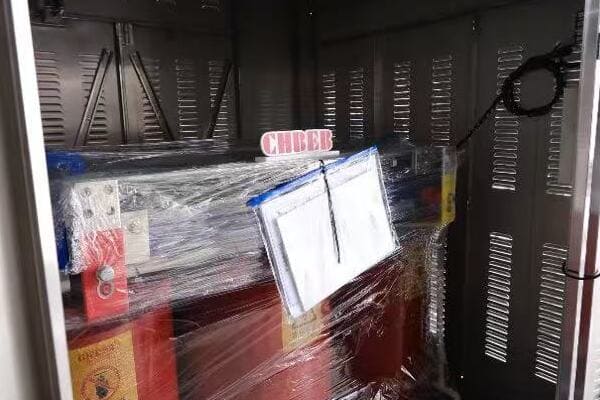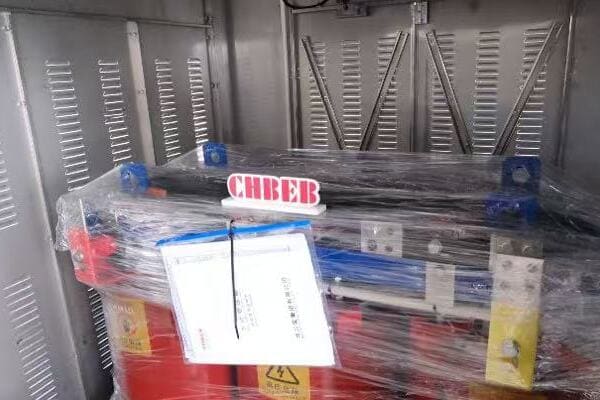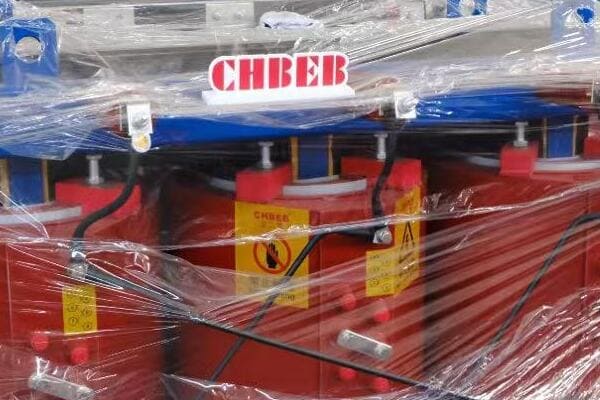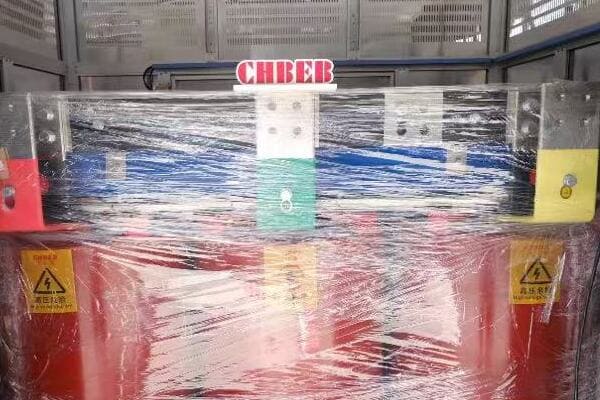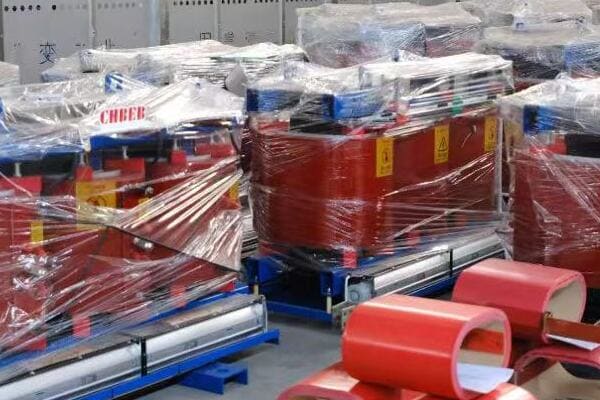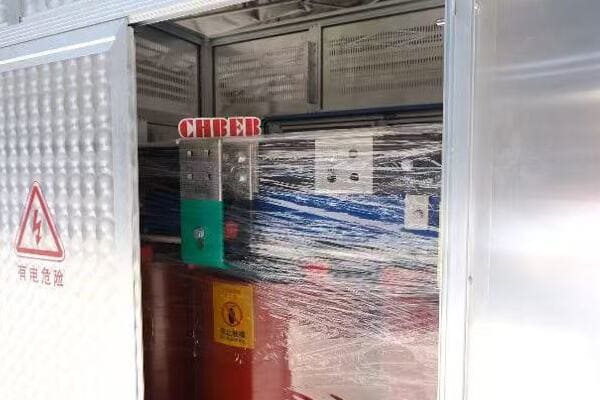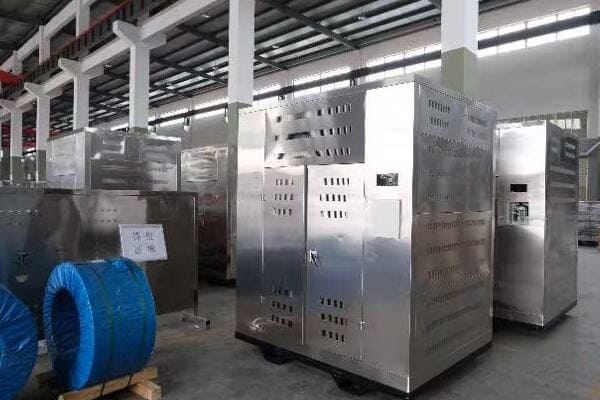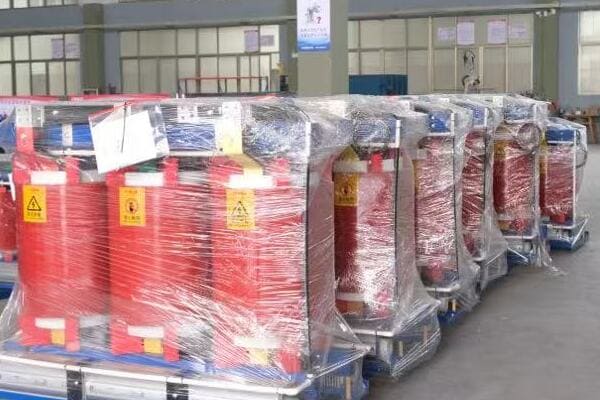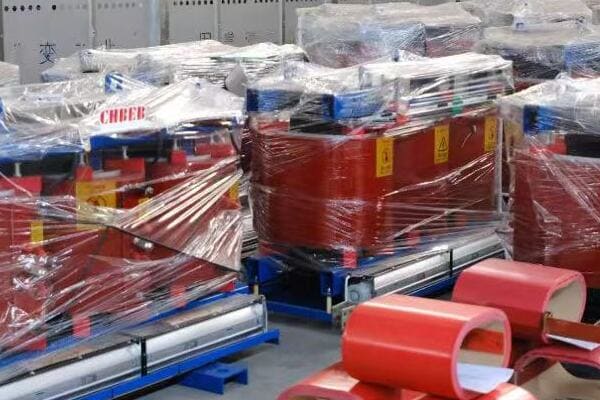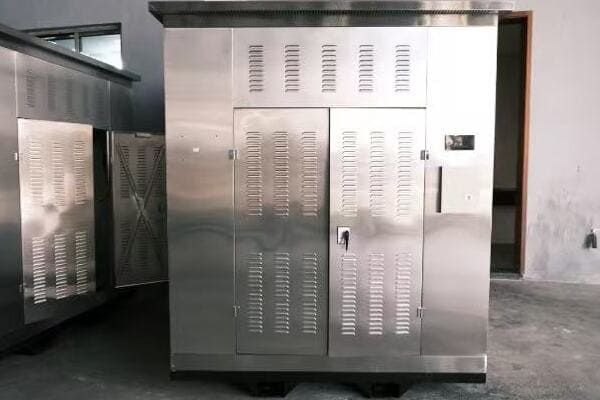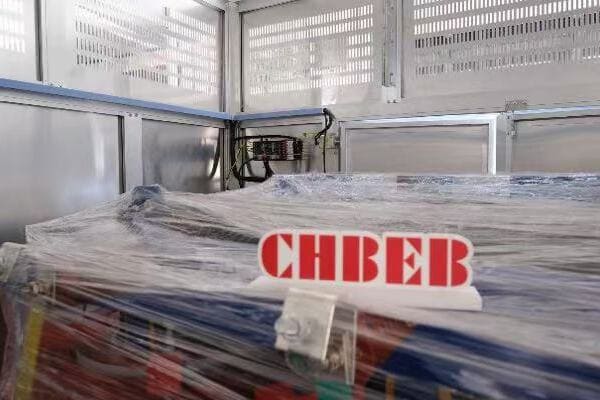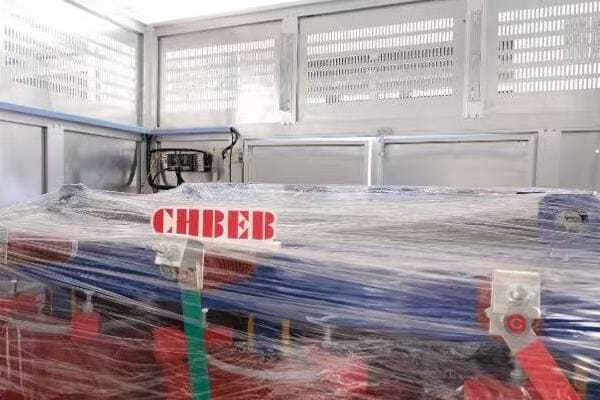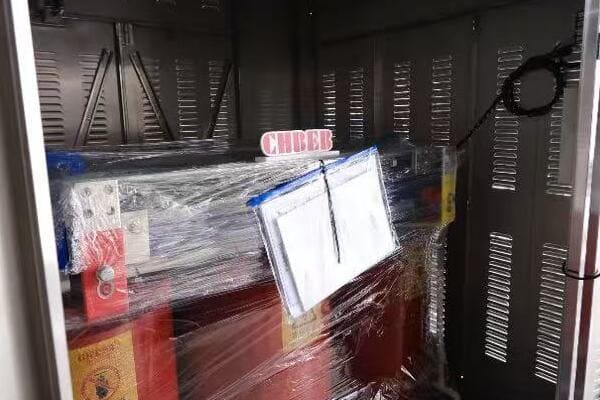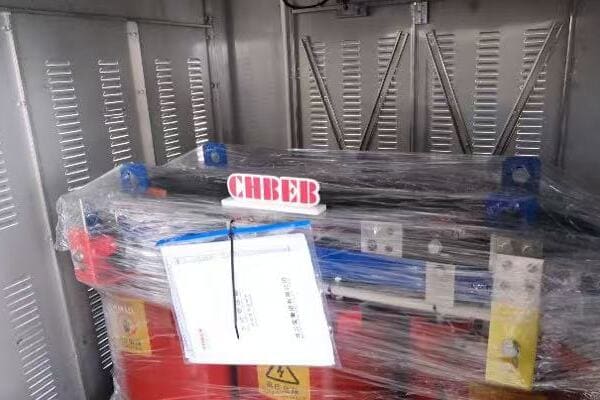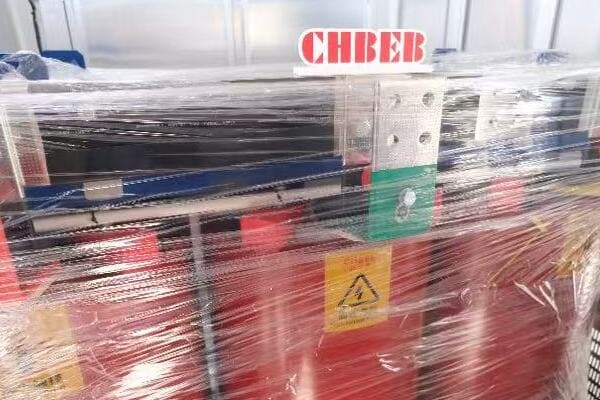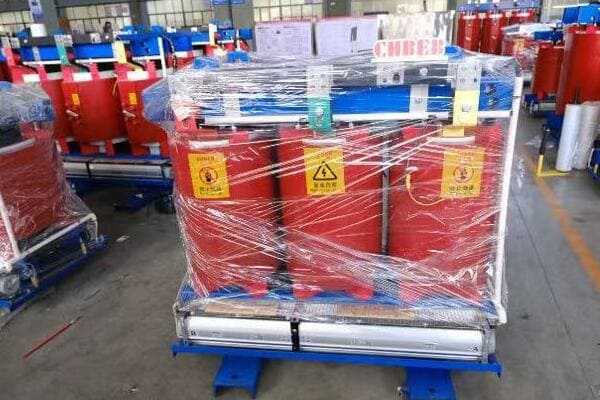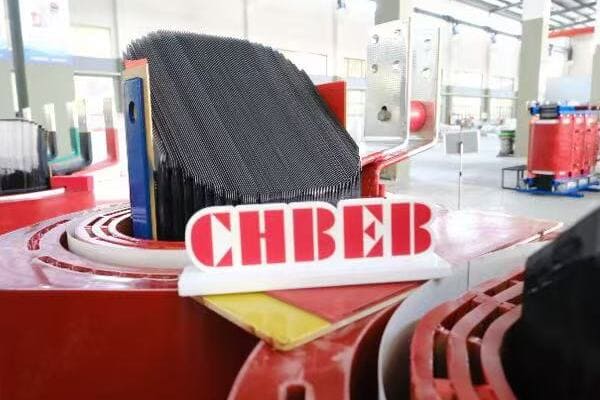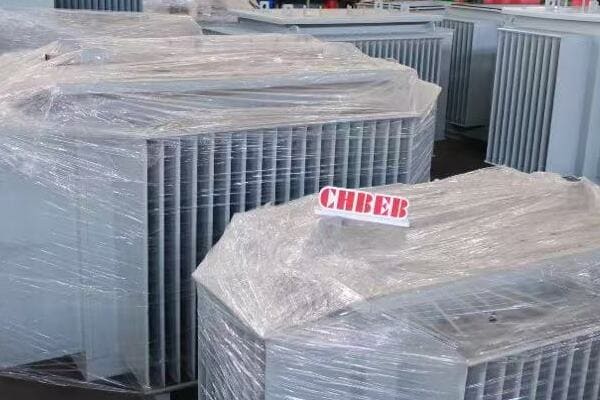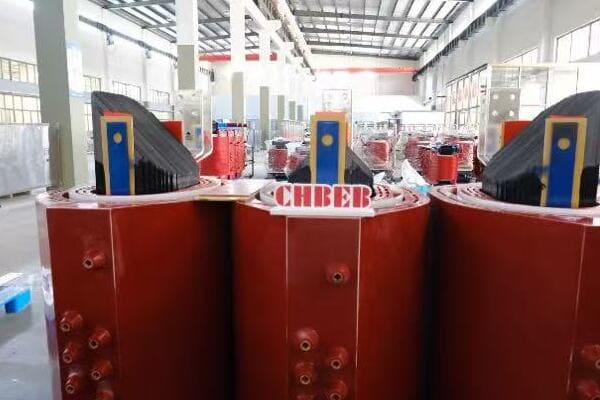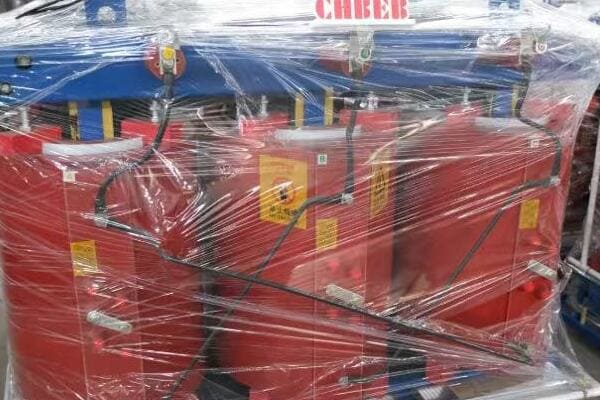Are you struggling to understand the differences between power and distribution transformers? You’re not alone. Many engineers and project managers find it challenging to choose the right transformer for their specific needs. But what if you could easily distinguish between these two crucial components of our electrical grid?
Power transformers handle high-voltage transmission over long distances, while distribution transformers step down voltage for local use. They differ in capacity, location, and load behavior. Understanding these differences is essential for selecting the right transformer in utility, commercial, or industrial projects.

In this comprehensive guide, I’ll walk you through the key differences between power and distribution transformers. Whether you’re working on a large-scale utility project or a local power distribution system, this article will equip you with the knowledge to make informed decisions about transformer selection.
What Is a Power Transformer?
Have you ever wondered how electricity from power plants reaches our cities over long distances? Power transformers play a crucial role in this process, but what exactly are they, and how do they function in our electrical grid?
A power transformer is a high-capacity, high-voltage device used in electrical transmission systems. It typically operates at voltages between 33kV and 765kV, handling large power capacities from 1000kVA to 1000MVA. Power transformers are essential in step-up applications at power plants and step-down operations at primary substations.

Understanding Power Transformers in Depth
Let’s explore the key aspects of power transformers:
- Voltage Levels and Capacity
- Functions and Applications
- Design and Cooling Systems
- Efficiency Characteristics
Voltage Levels and Capacity
Power transformers operate at the highest voltage levels in our electrical systems:
- Typical voltage range: 33kV to 765kV
- Capacity can range from 1000kVA to 1000MVA
I once worked on a project involving a 500kV power transformer for a major transmission line. The sheer size and complexity of the unit were awe-inspiring, highlighting the critical role these devices play in our power infrastructure.
Functions and Applications
Power transformers serve several crucial functions:
- Step-up transformers at power plants: Increase generator voltage for long-distance transmission
- Step-down transformers at primary substations: Reduce transmission voltages for sub-transmission or distribution networks
- Interconnection between different voltage levels in the grid
Design and Cooling Systems
The design of power transformers is optimized for high efficiency and reliability:
- Core: Often made of high-grade silicon steel to minimize losses
- Windings: Typically copper, designed for high current-carrying capacity
- Cooling: Usually oil-immersed with advanced cooling systems like ONAN (Oil Natural Air Natural) or OFAF (Oil Forced Air Forced)
During a recent substation upgrade, we implemented an OFAF cooling system for a large power transformer. This choice significantly improved its capacity to handle peak loads during hot summer months.
Efficiency Characteristics
Power transformers are designed for high efficiency under specific conditions:
- Optimized for constant, high loads
- Efficiency typically peaks at 80-90% of rated load
- Low load operation can lead to reduced efficiency
Here’s a quick overview of power transformer characteristics:
| Characteristic | Typical Range/Type |
|---|---|
| Voltage | 33kV – 765kV |
| Capacity | 1000kVA – 1000MVA |
| Efficiency | 99%+ at optimal load |
| Cooling System | ONAN, ONAF, OFAF |
| Load Profile | Constant, high load |
Understanding the characteristics of power transformers is crucial for grid planning and large-scale power distribution projects. In my experience, the selection of the right power transformer can significantly impact the overall efficiency and reliability of a transmission system. Whether you’re working on a new power plant connection or upgrading a major substation, considering these factors will help ensure your power transformer meets the demands of your high-voltage application.
What Is a Distribution Transformer?
Have you ever wondered how the high-voltage electricity in power lines is converted to the usable voltage in our homes and businesses? This is where distribution transformers come into play. But what exactly are these devices, and how do they differ from their larger counterparts?
A distribution transformer is a type of transformer used to convert medium-voltage power to lower voltages suitable for end-user consumption. Typically operating in the range of 11kV to 33kV on the primary side and stepping down to 400V/230V, these transformers are the final link in the electrical distribution chain before power reaches consumers.
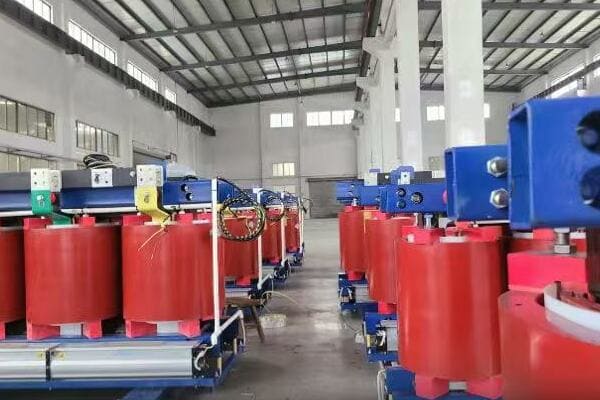
Diving Deeper into Distribution Transformers
Let’s explore the key aspects of distribution transformers:
- Voltage Levels and Capacity
- Functions and Applications
- Design Features
- Efficiency and Load Characteristics
Voltage Levels and Capacity
Distribution transformers operate at the lower end of the voltage spectrum:
- Primary voltage typically ranges from 11kV to 33kV
- Secondary voltage usually 400V/230V for three-phase and single-phase supply
- Capacity generally ranges from 25kVA to 2500kVA
I once worked on a project to upgrade the power supply in a small town. We installed several 500kVA distribution transformers to replace older, less efficient units. The improvement in power quality and reliability was immediately noticeable to the residents.
Functions and Applications
Distribution transformers serve several crucial functions:
- Step-down voltage for local power distribution
- Provide the final voltage transformation before end-user consumption
- Maintain voltage stability in local grids
Design Features
These transformers are designed for versatility and ease of maintenance:
- Often dry-type or filled with biodegradable oils for environmental safety
- Compact design to fit in space-constrained areas
- Built to withstand outdoor conditions (for pole and pad-mounted types)
During a recent project for a shopping center, we opted for a cast resin dry-type distribution transformer. This choice eliminated fire risks associated with oil-filled units and simplified the installation process in the confined electrical room.
Efficiency and Load Characteristics
Distribution transformers are optimized for variable loads:
- Designed to maintain good efficiency across a range of load conditions
- Often equipped with tap changers for voltage adjustment
- Efficiency is crucial as these units operate 24/7
Here’s a quick overview of distribution transformer characteristics:
| Characteristic | Typical Range/Type |
|---|---|
| Primary Voltage | 11kV – 33kV |
| Secondary Voltage | 400V/230V |
| Capacity | 25kVA – 2500kVA |
| Efficiency | 97-99% at varying loads |
| Cooling System | AN (Air Natural), ONAN |
| Load Profile | Fluctuating |
Understanding distribution transformers is essential for anyone involved in local power distribution or building electrical systems. In my experience, choosing the right distribution transformer can significantly impact energy efficiency and power quality for end-users. Whether you’re planning a new residential development or upgrading a commercial building’s power supply, considering these factors will help ensure your distribution transformer meets the diverse needs of modern power consumers.
Voltage Levels and Typical Capacity Comparison?
Are you finding it challenging to compare the voltage levels and capacities of power and distribution transformers? You’re not alone. Many professionals in the electrical industry struggle to clearly articulate these differences. But what if you had a clear, side-by-side comparison to help you understand and explain these crucial distinctions?
Power transformers typically operate at high voltages (33kV-765kV) with capacities ranging from 1000kVA to 1000MVA, optimized for efficiency under full load. Distribution transformers handle lower voltages (11kV-400V) with capacities between 25kVA and 2500kVA, designed for efficiency under variable loads. This difference in voltage and capacity reflects their distinct roles in the power system.
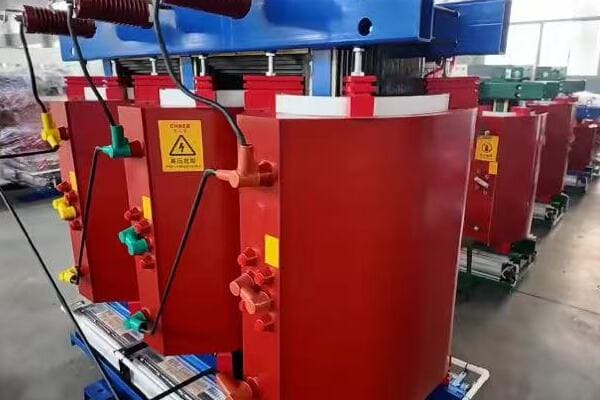
Detailed Comparison of Transformer Voltage and Capacity
Let’s break down the key differences in a comprehensive table:
| Parameter | Power Transformer | Distribution Transformer |
|---|---|---|
| Voltage Level | 33kV – 765kV | 11kV – 400V |
| Capacity Range | 1000kVA – 1000MVA | 25kVA – 2500kVA |
| Efficiency Focus | High under full load | High under partial load |
| Load Type | Constant | Variable |
Voltage Level Differences
The voltage levels handled by these transformers reflect their roles in the power system:
- Power Transformers: Handle bulk power at high voltages for transmission
- Distribution Transformers: Deliver power at usable voltages to end consumers
I once worked on a project that involved both types. We used a 230kV/66kV power transformer at the main substation and multiple 11kV/400V distribution transformers to supply a large industrial park. The contrast in voltage levels was striking and highlighted the distinct roles of each transformer type.
Capacity Range Comparison
The capacity ranges of these transformers are tailored to their applications:
- Power Transformers: Large capacities for handling bulk power
- Distribution Transformers: Smaller capacities suited for local distribution needs
During a recent grid modernization project, we had to carefully consider these capacity differences. The power transformers at the substation level were sized for the maximum expected load of the entire region, while the distribution transformers were selected based on the specific needs of individual neighborhoods or industrial zones.
Efficiency and Load Characteristics
The efficiency profiles of these transformers are optimized for their typical operating conditions:
- Power Transformers: Designed for high efficiency under constant, high loads
- Distribution Transformers: Optimized for good efficiency across varying load conditions
Here’s a more detailed look at efficiency characteristics:
| Aspect | Power Transformer | Distribution Transformer |
|---|---|---|
| Peak Efficiency | At 80-90% of rated load | Across a wider load range |
| Low Load Efficiency | Can be lower | Generally better |
| Load Fluctuation Handling | Less optimal | Designed for variability |
In my experience, understanding these voltage and capacity differences is crucial for proper system design and equipment selection. For instance, in a recent urban development project, we had to carefully balance the need for high power capacity with the requirement for flexible, efficient distribution. This led us to choose a high-capacity power transformer for the main substation, complemented by a network of smaller, more adaptable distribution transformers throughout the development.
These distinctions in voltage levels and capacities between power and distribution transformers are not just academic; they have real-world implications for system design, energy efficiency, and project costs. Whether you’re planning a large-scale power transmission project or a local distribution network, keeping these differences in mind will help you make informed decisions and ensure your power system is optimized for its specific requirements.
Installation Environments: Substations vs Local Sites?
Are you grappling with the challenge of choosing the right installation environment for your transformers? The stark contrast between power transformer substations and local distribution sites can be confusing. But what if you could clearly understand how these different environments impact transformer selection and performance?
Power transformers are typically installed in large, dedicated substations with controlled environments and extensive safety measures. Distribution transformers, on the other hand, are found in diverse local sites like pole mounts, pad mounts, or indoor electrical rooms. These different installation environments reflect the distinct roles and requirements of each transformer type in the power distribution chain.
Comparing Installation Environments
Let’s explore the key differences in installation environments:
- Power Transformer Substations
- Distribution Transformer Local Sites
- Environmental Considerations
- Safety and Access Requirements
Power Transformer Substations
Power transformers are typically installed in large, dedicated facilities:
- Extensive space requirements for equipment and safety clearances
- Controlled environment with advanced cooling and fire suppression systems
- High security measures due to critical nature of equipment
I once worked on a major substation project where the power transformer installation area alone was the size of a football field. The complexity of the site, with its extensive bus bars, circuit breakers, and control systems, highlighted the specialized nature of these installations.
Distribution Transformer Local Sites
Distribution transformers are found in diverse, often space-constrained locations:
- Pole-mounted in residential areas
- Pad-mounted in commercial zones or residential developments
- Indoor installations in basements or dedicated electrical rooms of buildings
During a recent urban renewal project, we faced the challenge of integrating distribution transformers into a densely populated area. We opted for a mix of pad-mounted units in small green spaces and compact indoor units in building basements, showcasing the flexibility required in distribution transformer siting.
Environmental Considerations
The installation environment significantly impacts transformer design and operation:
| Aspect | Power Transformer Substation | Distribution Transformer Site |
|---|---|---|
| Weather Exposure | Limited (often indoor or sheltered) | Often fully exposed |
| Temperature Control | Sophisticated cooling systems | Passive cooling or basic fans |
| Noise Considerations | Less critical (isolated locations) | Crucial (often near residential areas) |
| Flood Risk | Elevated installations, extensive drainage | Varied (pole-mounted safe, pad-mounted at risk) |
In a coastal substation project, we had to implement advanced corrosion protection for the power transformers due to the salt-laden air. Conversely, for distribution transformers in the same region, we opted for stainless steel enclosures for pad-mounted units to ensure longevity in the harsh environment.
Safety and Access Requirements
Safety considerations vary significantly between these installation types:
-
Power Transformer Substations:
- Restricted access with multiple security layers
- Extensive safety clearances and fire suppression systems
- Specialized maintenance procedures and equipment
-
Distribution Transformer Sites:
- Often in public areas, requiring tamper-resistant designs
- Emphasis on public safety (e.g., locked enclosures, warning signs)
- Designed for easier access for maintenance and replacement
I recall a project where we retrofitted an urban substation with advanced security systems, including biometric access controls and 24/7 video surveillance. In contrast, for a residential area distribution transformer upgrade, our focus was on creating child-proof enclosures and integrating the units aesthetically into the neighborhood landscape.
Understanding these installation environment differences is crucial for proper planning and design of power systems. In my experience, the key to successful transformer installation lies in carefully considering not just the electrical requirements, but also the physical, environmental, and safety aspects of the installation site. Whether you’re working on a large substation or a local distribution project, these factors will significantly impact your choice of transformer and the overall success of your power distribution system.
Maintenance and Lifespan Considerations?
Are you wondering about the long-term implications of choosing between power and distribution transformers? Maintenance requirements and lifespan can significantly impact the total cost of ownership and reliability of your power system. But how do these factors differ between the two transformer types?
Power transformers typically have longer lifespans (40-60 years) but require more complex, specialized maintenance. Distribution transformers generally have shorter lifespans (20-30 years) but need simpler, more frequent maintenance. The maintenance strategies and lifespan expectations for each type significantly influence long-term operational costs and system reliability planning.
Comparing Maintenance and Lifespan Factors
Let’s explore the key differences in maintenance and lifespan considerations:
- Maintenance Frequency and Complexity
- Lifespan Expectations
- Factors Affecting Longevity
- Cost Implications Over Time
Maintenance Frequency and Complexity
The maintenance needs of power and distribution transformers differ significantly:
| Aspect | Power Transformer | Distribution Transformer |
|---|---|---|
| Frequency | Less frequent, more intensive | More frequent, less complex |
| Oil Testing | Annual or bi-annual comprehensive tests | Basic tests, often during installation and periodically |
| Cooling System | Regular checks and maintenance | Minimal or no cooling system maintenance |
| Expertise Required | Highly specialized technicians | General electrical maintenance staff |
I once managed a maintenance program for a large power transformer at a key substation. The annual maintenance involved a team of specialists and took several days, including comprehensive oil analysis, winding resistance measurements, and detailed insulation tests. In contrast, the maintenance for distribution transformers in the same network was often as simple as visual inspections and basic electrical tests, which could be completed in a few hours.
Lifespan Expectations
The expected operational life of transformers varies:
- Power Transformers: Typically 40-60 years with proper maintenance
- Distribution Transformers: Generally 20-30 years, though some may last longer
During a recent grid modernization project, we had to factor in these lifespan differences when planning for long-term infrastructure needs. We designed the main substation with power transformers expected to serve for half a century, while planning for periodic replacements of distribution transformers throughout the network.
Factors Affecting Longevity
Several factors influence the lifespan of transformers:
-
Load Profile:
- Power Transformers: Often operate at steady, high loads
- Distribution Transformers: Subject to more variable loads, potentially impacting lifespan
-
Environmental Conditions:
- Power Transformers: Usually in controlled environments
- Distribution Transformers: Often exposed to weather extremes
-
Maintenance Quality:
- Power Transformers: Benefit significantly from rigorous maintenance
- Distribution Transformers: Simpler maintenance, but frequency is crucial
-
Design and Manufacturing Quality:
- Both types: Higher quality materials and construction lead to longer lifespans
In my experience, the impact of these factors can be substantial. I recall a case where a poorly maintained distribution transformer in a coastal area failed after just 12 years due to corrosion, while a well-maintained unit in a similar environment was still operating efficiently after 25 years.
Cost Implications Over Time
The long-term cost considerations differ between the two types:
| Aspect | Power Transformer | Distribution Transformer |
|---|---|---|
| Initial Cost | Higher | Lower |
| Maintenance Cost | Higher per instance, less frequent | Lower per instance, more frequent |
| Replacement Cost | Very high, significant project | Moderate, more manageable |
| Downtime Impact | Potentially severe, wide-ranging | Usually localized, shorter duration |
Here’s a simplified cost comparison over a 50-year period:
| Cost Factor | Power Transformer | Distribution Transformer |
|---|---|---|
| Initial Purchase | $1,000,000 | $50,000 x 5 units = $250,000 |
| Maintenance (annual avg) | $20,000 x 50 years = $1,000,000 | $2,000 x 50 years x 5 units = $500,000 |
| Replacement | None (assuming 50-year life) | $50,000 x 5 units x 1 replacement = $250,000 |
| Total | $2,000,000 | $1,000,000 |
Note: These figures are illustrative and can vary significantly based on specific circumstances.
In a recent long-term planning project for a utility company, we used a similar cost model to demonstrate that while power transformers had higher upfront and maintenance costs, their longer lifespan and the avoided costs of frequent replacements made them more economical for high-capacity, critical installations over a 50-year horizon.
Understanding these maintenance and lifespan considerations is crucial for effective long-term planning and budgeting in power systems. In my experience, the key to optimizing transformer lifecycle costs lies in:
- Implementing robust preventive maintenance programs
- Considering environmental factors in transformer selection and siting
- Balancing initial costs with long-term operational expenses
- Planning for eventual replacements, especially for distribution transformers
By carefully considering these factors, power system planners and operators can make informed decisions that balance reliability, cost-effectiveness, and long-term sustainability in their transformer choices and maintenance strategies.
Application Examples: Where Each Transformer Fits Best?
Are you unsure about which type of transformer is best suited for your specific project? The choice between power and distribution transformers can significantly impact the efficiency and reliability of your electrical system. But how do you know which one fits best in different scenarios?
Power transformers are ideal for high-voltage transmission systems, large industrial facilities, and utility-scale renewable energy projects. Distribution transformers excel in local power delivery for residential areas, commercial buildings, and small to medium-sized industrial applications. Understanding these application differences is crucial for optimal system design and performance.
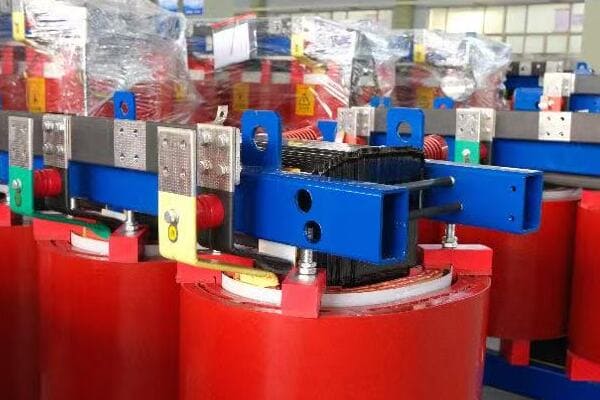
Exploring Ideal Applications for Each Transformer Type
Let’s examine specific scenarios where each transformer type shines:
- Power Transformer Applications
- Distribution Transformer Applications
- Hybrid Scenarios
- Emerging Application Trends
Power Transformer Applications
Power transformers are best suited for:
-
Utility-Scale Power Generation:
- Large power plants (coal, nuclear, hydroelectric)
- Example: A 500 MVA, 22kV/400kV transformer at a nuclear power plant
-
High-Voltage Transmission Systems:
- Long-distance power transmission
- Example: 400kV/220kV transformer at a major grid interconnection point
-
Large Industrial Facilities:
- Steel mills, large chemical plants
- Example: 100 MVA, 220kV/33kV transformer for an aluminum smelter
-
Utility-Scale Renewable Energy:
- Large solar farms, offshore wind farms
- Example: 200 MVA, 33kV/400kV transformer for a 500 MW solar farm
I once worked on a project for a major hydroelectric dam where we installed multiple 300 MVA, 13.8kV/500kV step-up transformers. These massive units were crucial in transmitting the generated power over hundreds of miles to urban load centers.
Distribution Transformer Applications
Distribution transformers are typically used in:
-
Residential Areas:
- Neighborhood power distribution
- Example: 500 kVA, 11kV/400V transformer serving a suburban block
-
Commercial Buildings:
- Office complexes, shopping centers
- Example: 2000 kVA, 33kV/400V transformer for a large office building
-
Small to Medium Industries:
- Manufacturing facilities, warehouses
- Example: 1500 kVA, 11kV/400V transformer for a food processing plant
-
Urban Infrastructure:
- Street lighting, traffic systems
- Example: 100 kVA, 11kV/400V transformer for a city block’s street lighting
During a recent smart city project, we deployed numerous 1000 kVA pad-mounted distribution transformers throughout the urban area. These units were crucial in powering everything from electric vehicle charging stations to smart traffic management systems.
Hybrid Scenarios
Some applications require a combination of both transformer types:
-
Large Data Centers:
- Power transformers for main supply
- Distribution transformers for internal power distribution
- Example: 50 MVA, 132kV/11kV power transformer feeding multiple 2500 kVA, 11kV/400V distribution units
-
University Campuses:
- Power transformer at campus substation
- Distribution transformers for individual buildings
- Example: 20 MVA, 66kV/11kV main transformer with various 11kV/400V units across campus
In a recent data center project, we implemented this hybrid approach. The main 40 MVA power transformer handled the incoming high voltage, while a network of 2000 kVA distribution transformers efficiently powered different sections of the facility, providing both the high capacity and the flexibility needed for this critical infrastructure.
Emerging Application Trends
New technologies are creating novel applications for both transformer types:
-
Renewable Energy Integration:
- Power transformers for large wind and solar farms
- Distribution transformers for local solar and small wind installations
-
Electric Vehicle Charging Infrastructure:
- Distribution transformers for local charging stations
- Power transformers for large-scale charging depots
-
Smart Grid Applications:
- Both types equipped with advanced monitoring and control capabilities
-
Energy Storage Systems:
- Integration with battery storage requiring both large and small-scale transformers
I recently consulted on a cutting-edge project combining a solar farm with grid-scale battery storage. We used a 100 MVA power transformer for the main grid connection, complemented by several 2500 kVA distribution transformers for the intricate power management system of the battery array.
Understanding these application scenarios is crucial for effective power system design. In my experience, the key to successful transformer application lies in:
- Carefully analyzing the specific power requirements of the project
- Considering future expansion and load growth
- Balancing efficiency, cost, and reliability needs
- Staying informed about emerging technologies and their impact on transformer applications
By thoughtfully matching transformer types to their ideal applications, engineers and project managers can ensure optimal performance, efficiency, and reliability in their power systems, whether for utility-scale projects or local distribution networks.
Summary Table: Power vs Distribution Transformer at a Glance?
Are you looking for a quick, comprehensive comparison between power and distribution transformers? It can be challenging to keep all the differences in mind, especially when making crucial decisions for your power system projects. But what if you had a clear, concise summary of all the key points we’ve discussed?
Power transformers handle high voltages (33kV-765kV) and large capacities (1000kVA-1000MVA) for transmission systems, while distribution transformers manage lower voltages (11kV-400V) and smaller capacities (25kVA-2500kVA) for local power delivery. They differ in efficiency focus, installation environments, maintenance needs, and lifespan, reflecting their distinct roles in the power grid.
Comprehensive Comparison Table
Let’s summarize the key differences in a detailed comparison table:
| Characteristic | Power Transformer | Distribution Transformer |
|---|---|---|
| Voltage Range | 33kV – 765kV | 11kV – 400V |
| Capacity | 1000kVA – 1000MVA | 25kVA – 2500kVA |
| Efficiency Focus | High under full load | High under partial load |
| Load Type | Constant, high load | Variable load |
| Installation Site | Large substations | Local sites (pole, pad, indoor) |
| Cooling System | ONAN, ONAF, OFAF | AN, ONAN |
| Maintenance | Complex, less frequent | Simpler, more frequent |
| Lifespan | 40-60 years | 20-30 years |
| Cost | High initial, high maintenance | Lower initial, moderate maintenance |
| Size and Weight | Large and heavy | Compact and lighter |
| Core Design | Larger, more complex | Simpler, standardized |
| Winding Material | Typically copper | Copper or aluminum |
| Insulation | Oil and paper (usually) | Various (oil, dry-type, resin) |
| Monitoring | Continuous, advanced | Basic, often manual checks |
| Typical Applications | Power plants, grid transmission | Residential, commercial distribution |
Key Insights from the Comparison
-
Voltage and Capacity:
The most obvious difference lies in the voltage and capacity ranges, reflecting their distinct roles in the power system. -
Efficiency and Load Profiles:
Power transformers are optimized for constant, high loads typical in transmission systems. Distribution transformers maintain efficiency under varying load conditions common in end-user applications. -
Installation and Environment:
Power transformers require large, specialized installations, while distribution transformers are more versatile in their placement options. -
Maintenance and Lifespan:
The longer lifespan of power transformers comes with more complex maintenance needs, contrasting with the simpler but more frequent maintenance of distribution transformers. -
Cost Considerations:
While power transformers have higher upfront and maintenance costs, their longer lifespan can make them more economical for high-capacity, critical installations over time.
In my experience, understanding these differences is crucial for proper system design and equipment selection. I recall a project where a client initially considered using multiple large distribution transformers for a high-capacity industrial application. After reviewing a comparison like this, we realized that a single power transformer would be more efficient and cost-effective in the long run, despite the higher initial investment.
This summary table serves as a quick reference guide, but remember that real-world applications often involve nuances that may not fit neatly into these categories. Always consider the specific requirements of your project and consult with experts when making final decisions on transformer selection.
By keeping these key differences in mind, you’ll be better equipped to make informed decisions in your power system designs, whether you’re working on large-scale transmission projects or local distribution networks.
Conclusion
Power and distribution transformers serve distinct roles in the electrical grid, differing in voltage levels, capacity, efficiency profiles, and application scenarios. Understanding these differences is crucial for selecting the right transformer for specific project needs, ensuring optimal performance, reliability, and cost-effectiveness in power system design and operation.
Remember, at chbeb-ele, we’re not just sharing information – we’re empowering you to be part of the solution in creating a secure, clean, and efficient energy future. Let’s continue this journey together.
Are you struggling to understand how power and distribution transformers fit into modern energy systems? You’re not alone. Many engineers and project managers find it challenging to visualize these crucial components in real-world scenarios. But what if you could see exactly how these transformers are applied across various industries?
Power and distribution transformers are essential across industries—from boosting voltage in solar farms to safely powering data centers and city substations. This article outlines seven real-world applications that show how each transformer type supports modern energy delivery in renewable, commercial, and urban projects.
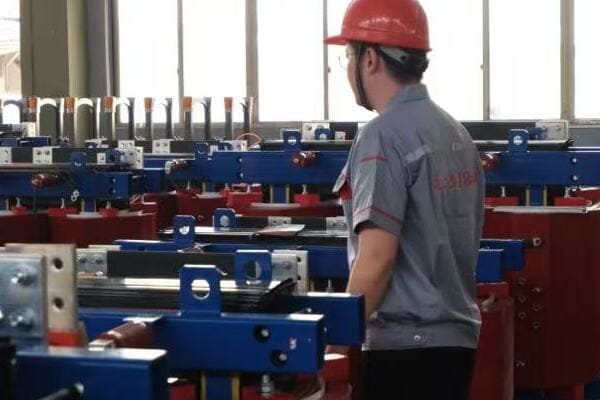
In this comprehensive guide, I’ll walk you through seven practical applications of power and distribution transformers. Whether you’re working on renewable energy projects, urban infrastructure, or industrial facilities, this article will provide you with concrete examples of how these transformers are used in the field.
Utility-Scale Solar Farms: Step-Up Power Transformers for Grid Injection?
Have you ever wondered how the massive amount of power generated by solar farms makes its way into the electrical grid? The key lies in step-up power transformers, but how exactly do they function in this critical role?
In utility-scale solar farms, step-up power transformers are essential for increasing the voltage of generated electricity to levels suitable for long-distance transmission. These transformers typically boost voltage from the 600V-1000V range produced by solar inverters to 33kV, 66kV, or higher, enabling efficient integration with the power grid.
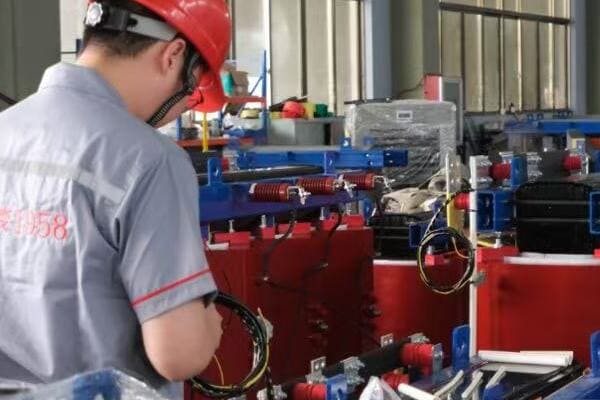
Deep Dive into Solar Farm Transformer Applications
Let’s explore the key aspects of power transformers in solar farm applications:
- Voltage Step-Up Process
- Transformer Specifications
- Challenges and Solutions
- Integration with Solar Farm Infrastructure
Voltage Step-Up Process
The process of integrating solar power into the grid involves several stages:
- Solar panels generate DC power
- Inverters convert DC to AC at low voltage (typically 600V-1000V)
- Step-up transformers increase voltage for transmission (33kV-66kV or higher)
I once worked on a 100MW solar farm project where we installed multiple 40MVA step-up transformers. These units were crucial in boosting the voltage from 1000V to 66kV, allowing the farm to feed power directly into the regional transmission network.
Transformer Specifications
Solar farm transformers have unique requirements:
- High efficiency to minimize energy losses
- Ability to handle variable loads due to fluctuating solar output
- Robust design to withstand outdoor conditions
Here’s a typical specification for a solar farm step-up transformer:
| Parameter | Typical Value |
|---|---|
| Capacity | 20-50 MVA |
| Primary Voltage | 600V-1000V |
| Secondary Voltage | 33kV-66kV |
| Cooling Type | ONAN/ONAF |
| Efficiency | >99% |
Challenges and Solutions
Solar farm transformers face several challenges:
- Harmonics from inverters
- Solution: Use of K-factor rated transformers
- Exposure to harsh environments
- Solution: Enhanced protective enclosures and coatings
- Fluctuating power output
- Solution: Intelligent load management systems
In a recent project in a desert environment, we implemented specially designed cooling systems and sand-resistant enclosures to ensure reliable operation under extreme conditions.
Integration with Solar Farm Infrastructure
Transformers play a central role in solar farm design:
- Located at the point of interconnection between the solar farm and grid
- Often paired with switchgear and protection equipment
- Integrated with SCADA systems for remote monitoring and control
During the design phase of a large solar project, we carefully positioned the step-up transformers to minimize cable runs from the inverter stations, reducing overall system losses by 0.5%.
In my experience, the successful implementation of step-up transformers in solar farms requires a holistic approach. It’s not just about selecting the right transformer; it’s about understanding how it fits into the broader solar farm ecosystem. Factors like future expansion plans, grid connection requirements, and environmental conditions all play crucial roles in the design and specification process.
By carefully considering these factors and leveraging the latest in transformer technology, solar farm developers can ensure efficient, reliable power delivery to the grid, maximizing the return on their renewable energy investments.
Wind Turbine Clusters: Collector and Pad-Mounted Distribution Transformers?
Are you puzzled by how wind farms manage to convert the variable output of multiple turbines into a steady supply of grid-ready power? The secret lies in a network of strategically placed transformers, but how exactly do they work together in this dynamic environment?
Wind turbine clusters utilize a combination of pad-mounted distribution transformers at each turbine base and larger collector transformers for grid connection. These transformers handle the challenging task of managing variable power output, stepping up voltage from 690V at the turbine to 33kV or higher for transmission, all while withstanding harsh outdoor conditions.
Understanding Transformer Applications in Wind Farms
Let’s break down the key aspects of transformer use in wind turbine clusters:
- Pad-Mounted Transformers at Turbine Base
- Collector Substation Transformers
- Unique Challenges in Wind Farm Environments
- Integration with Wind Farm Control Systems
Pad-Mounted Transformers at Turbine Base
Each wind turbine typically has its own transformer:
- Steps up voltage from turbine output (usually 690V) to collection system voltage (often 33kV)
- Typically oil-filled or dry-type, depending on environmental factors
- Rated for the maximum output of the turbine, often 2-4 MVA
I once worked on a project where we installed 120 pad-mounted transformers for a large offshore wind farm. These units were specially designed to withstand the corrosive sea environment, with enhanced insulation and corrosion-resistant exteriors.
Collector Substation Transformers
At the heart of the wind farm, larger transformers aggregate power:
- Step up voltage from collection system (33kV) to transmission levels (110kV+)
- Often larger capacity, ranging from 50-200 MVA depending on farm size
- Equipped with advanced monitoring and cooling systems
During a recent onshore wind project, we implemented a 150 MVA collector transformer that stepped up voltage from 33kV to 220kV. This single unit was crucial in efficiently transmitting power from a 300 MW wind farm to the regional grid.
Unique Challenges in Wind Farm Environments
Wind farm transformers face several specific challenges:
- Variable and intermittent power generation
- Exposure to extreme weather conditions
- Remote locations with limited access
Here’s how these challenges are typically addressed:
| Challenge | Solution |
|---|---|
| Variable Power | Use of tap changers and advanced voltage regulation |
| Weather Exposure | Enhanced insulation and protective enclosures |
| Remote Locations | Robust design with minimal maintenance requirements |
In an offshore project, we implemented a novel cooling system for the pad-mounted transformers that used the naturally cool sea air, reducing the need for active cooling and improving overall reliability.
Integration with Wind Farm Control Systems
Transformers play a crucial role in wind farm operations:
- Integrated with SCADA systems for real-time monitoring
- Part of the farm’s overall power quality management system
- Critical in managing reactive power and voltage stability
During the commissioning of a smart wind farm, we integrated the transformer monitoring systems with the farm’s central control. This allowed for dynamic load management and predictive maintenance, significantly improving overall farm efficiency.
In my experience, successful transformer implementation in wind farms requires a deep understanding of both electrical engineering and the unique challenges of wind power generation. It’s not just about handling power; it’s about managing variability, ensuring reliability in harsh conditions, and integrating seamlessly with sophisticated control systems.
By carefully selecting and implementing the right transformer solutions, wind farm operators can ensure efficient, reliable power delivery to the grid, maximizing the potential of this clean energy source. As wind technology continues to evolve, so too will the transformers that support it, playing a crucial role in our transition to a more sustainable energy future.
Data Centers: Cast Resin Transformers for Reliable Indoor Power Distribution?
Are you grappling with the challenge of ensuring uninterrupted power supply in data centers? The solution often lies in the choice of transformers, but why are cast resin transformers particularly suited for this critical application?
Data centers rely on cast resin transformers for their reliable indoor power distribution. These dry-type transformers offer superior fire safety, low maintenance, and high efficiency, crucial for the 24/7 operation of sensitive IT equipment. They typically step down voltage from 11kV/33kV to 400V/230V, providing clean, stable power in compact, environmentally friendly units.

Cast Resin Transformers in Data Center Applications
Let’s explore the key aspects of using cast resin transformers in data centers:
- Advantages of Cast Resin Technology
- Typical Specifications and Ratings
- Integration with Data Center Infrastructure
- Maintenance and Reliability Considerations
Advantages of Cast Resin Technology
Cast resin transformers offer several benefits crucial for data centers:
- Fire safety: Self-extinguishing properties, crucial in sensitive environments
- Low maintenance: No oil, reducing the risk of leaks and fire
- Compact design: Ideal for space-constrained data center environments
- Low noise: Important for worker comfort in data center operations
I once worked on a project upgrading a major data center’s power distribution system. By replacing old oil-filled units with modern cast resin transformers, we not only improved safety but also reduced the footprint of the electrical rooms by 30%, freeing up valuable space for additional IT equipment.
Typical Specifications and Ratings
Data center transformers have specific requirements:
- Capacity: Typically ranging from 500 kVA to 2500 kVA
- Voltage: Often 11kV/400V or 33kV/400V
- Efficiency: High efficiency units (>98%) to reduce heat generation and energy costs
- Overload capacity: Ability to handle short-term overloads common in IT environments
Here’s a typical specification for a data center cast resin transformer:
| Parameter | Typical Value |
|---|---|
| Capacity | 1000 kVA |
| Primary Voltage | 11 kV |
| Secondary Voltage | 400 V |
| Vector Group | Dyn11 |
| Efficiency | 98.5% |
| Temperature Rise | 80K (AN) |
Integration with Data Center Infrastructure
Cast resin transformers are integral to data center power architecture:
- Often used in N+1 or 2N redundancy configurations
- Integrated with UPS systems and emergency generators
- Equipped with advanced monitoring for integration with DCIM systems
During a recent hyperscale data center project, we implemented a modular power distribution system using multiple 1500 kVA cast resin transformers. This approach allowed for easy scaling of power capacity as the data center expanded, while maintaining high reliability through redundancy.
Maintenance and Reliability Considerations
Reliability is paramount in data center operations:
- Regular thermal imaging to detect potential hotspots
- Periodic insulation resistance tests
- Continuous monitoring of key parameters (temperature, load, etc.)
In my experience, the key to successful implementation of cast resin transformers in data centers lies in careful planning and integration. It’s not just about selecting the right transformer; it’s about understanding how it fits into the overall power distribution strategy of the data center.
Factors to consider include:
- Future expansion plans
- Energy efficiency goals
- Cooling system integration
- Emergency response procedures
By carefully considering these factors and leveraging the advantages of cast resin technology, data center operators can ensure a reliable, efficient, and safe power distribution system. This is crucial not only for maintaining uptime but also for optimizing operational costs and meeting stringent safety and environmental standards.
As data centers continue to grow in size and importance, the role of efficient, reliable transformers becomes ever more critical. Cast resin transformers, with their combination of safety, efficiency, and reliability, are well-positioned to meet these evolving needs, playing a vital role in powering the digital infrastructure that drives our modern world.
Urban Underground Substations: Compact Oil or Dry-Type Transformers?
Are you facing the challenge of integrating power substations into densely populated urban areas? The solution often lies in underground installations, but what type of transformers are best suited for these confined, sensitive environments?
Urban underground substations typically employ compact oil-filled or dry-type transformers to meet the unique challenges of limited space and stringent safety requirements. These transformers are designed for high efficiency, low noise, and minimal fire risk, often featuring advanced cooling systems and smart monitoring capabilities to ensure reliable operation in confined underground spaces.
Transformer Solutions for Urban Underground Substations
Let’s explore the key aspects of transformers used in urban underground substations:
- Compact Oil-Filled Transformers
- Dry-Type Transformers for Underground Use
- Unique Challenges of Underground Installations
- Safety and Environmental Considerations
Compact Oil-Filled Transformers
Despite space constraints, oil-filled transformers are still used underground:
- High efficiency and good cooling properties
- Compact designs with reduced oil volume
- Advanced safety features like tank rupture resistance
I once worked on a project in a major European city where we installed a 40 MVA compact oil-filled transformer in an underground substation. The unit was specially designed with a low-profile tank and integrated oil containment system, meeting strict urban safety regulations while providing high capacity in a limited space.
Dry-Type Transformers for Underground Use
Dry-type transformers are increasingly popular for urban underground applications:
- Eliminate risk of oil leaks or fires
- Reduced maintenance requirements
- Often preferred in environmentally sensitive areas
During a recent underground substation upgrade in a historic city center, we opted for 25 MVA cast resin transformers. These units provided the necessary power capacity while meeting stringent fire safety and environmental protection standards required by local authorities.
Unique Challenges of Underground Installations
Underground substations present several specific challenges:
- Limited space for installation and maintenance
- Heat dissipation in confined environments
- Potential for flooding or water ingress
- Noise and vibration concerns for nearby structures
Here’s how these challenges are typically addressed:
| Challenge | Solution |
|---|---|
| Space Constraints | Compact designs, vertical installations |
| Heat Dissipation | Advanced forced air or water cooling systems |
| Flood Risk | Waterproof enclosures, pumping systems |
| Noise/Vibration | Sound-absorbing materials, vibration isolators |
In a challenging project beneath a busy urban square, we implemented a novel cooling system that utilized groundwater for heat dissipation, significantly reducing the substation’s footprint and improving overall efficiency.
Safety and Environmental Considerations
Safety is paramount in urban underground installations:
- Fire detection and suppression systems
- Gas and oil leak detection for oil-filled units
- Continuous monitoring and remote operation capabilities
- Environmentally friendly insulation and coolant materials
Typical specifications for an underground substation transformer:
| Parameter | Oil-Filled | Dry-Type |
|---|---|---|
| Capacity | 20-63 MVA | 5-40 MVA |
| Voltage | 110kV/11kV | 33kV/11kV |
| Cooling | ONAN/ONAF | AN/AF |
| Noise Level | <60 dB | <65 dB |
| Fire Safety | K-class fluid | F1 class |
In my experience, successful implementation of transformers in urban underground substations requires a holistic approach. It’s not just about fitting a transformer into a confined space; it’s about creating a safe, efficient, and reliable power distribution node that integrates seamlessly with the urban environment above.
Key considerations include:
- Long-term urban development plans
- Emergency access and evacuation procedures
- Integration with smart grid technologies
- Public safety and perception
By carefully balancing these factors and leveraging advanced transformer technologies, urban planners and power engineers can create underground substations that meet the growing energy needs of cities while minimizing impact on urban life and landscapes. As our cities continue to grow and evolve, these hidden yet crucial installations will play an increasingly important role in powering our urban future.
Commercial Complexes: Pad-Mounted Distribution Transformers for Safe Outdoor Use?
Are you struggling with power distribution in commercial areas where aesthetics and safety are as important as reliability? Pad-mounted distribution transformers offer a solution, but how do they fit into the complex landscape of commercial power needs?
Pad-mounted distribution transformers are ideal for commercial complexes, offering a safe, compact, and visually unobtrusive solution for outdoor power distribution. These units typically step down voltage from 11kV or 33kV to 400V/230V, providing reliable power for retail centers, office buildings, and mixed-use developments. Their tamper-resistant design and low-profile appearance make them perfect for installation in parking lots, landscaped areas, or near buildings.
Pad-Mounted Transformers in Commercial Applications
Let’s explore the key aspects of using pad-mounted transformers in commercial complexes:
- Design and Safety Features
- Typical Specifications and Ratings
- Installation and Maintenance Considerations
- Integration with Commercial Infrastructure
Design and Safety Features
Pad-mounted transformers are designed with safety and aesthetics in mind:
- Tamper-resistant enclosures to prevent unauthorized access
- Low-profile design to blend with landscaping
- Oil-filled or dry-type options available, depending on location and requirements
- Built-in safety features like internal fusing and lightning arresters
I once worked on a project for a large shopping mall where we installed multiple 1000 kVA pad-mounted transformers around the perimeter. Their low-profile design allowed them to be seamlessly integrated into the landscaping, maintaining the aesthetic appeal of the property while providing robust power distribution.
Typical Specifications and Ratings
Commercial pad-mounted transformers come in various sizes to meet diverse needs:
- Capacity: Typically ranging from 100 kVA to 2500 kVA
- Primary Voltage: Often 11 kV or 33 kV
- Secondary Voltage: Usually 400V/230V for three-phase distribution
- Efficiency: High-efficiency units (>98%) to reduce operational costs
Here’s a typical specification for a commercial pad-mounted transformer:
| Parameter | Typical Value |
|---|---|
| Capacity | 1000 kVA |
| Primary Voltage | 11 kV |
| Secondary Voltage | 400V/230V |
| Impedance | 5% |
| Efficiency | 98.5% |
| Cooling | ONAN |
Installation and Maintenance Considerations
Proper installation and maintenance are crucial for longevity and safety:
- Concrete pad foundation with proper drainage
- Clearance around the unit for ventilation and maintenance access
- Regular inspections for oil leaks, rust, or signs of tampering
- Periodic testing of insulation and transformer oil (for oil-filled units)
During a recent office park development, we implemented a modular approach to pad-mounted transformer installation. This allowed for easy expansion as new buildings were added to the complex, ensuring scalability of the power distribution system.
Integration with Commercial Infrastructure
Pad-mounted transformers play a vital role in commercial power systems:
- Often part of a loop feed system for improved reliability
- Integrated with building management systems for load monitoring
- Strategically placed to minimize voltage drop and cable runs
In my experience, successful implementation of pad-mounted transformers in commercial complexes requires careful planning and coordination. It’s not just about placing transformers; it’s about creating an efficient, safe, and scalable power distribution network that meets current needs and future growth.
Key considerations include:
- Load growth projections
- Aesthetic requirements of the property
- Environmental factors (flood plains, corrosive environments)
- Local electrical codes and safety regulations
By carefully considering these factors, commercial property developers and electrical engineers can create a power distribution system that is reliable, efficient, and unobtrusive. Pad-mounted transformers, with their combination of safety, efficiency, and aesthetic appeal, are an excellent choice for modern commercial complexes.
As commercial areas continue to evolve, with increasing power demands from electric vehicle charging stations, smart building technologies, and more, the role of these transformers becomes even more critical. Their flexibility and scalability make them well-suited to meet the changing needs of commercial power distribution, ensuring that businesses have the reliable power they need to thrive.
Industrial Manufacturing Zones: High-Capacity Power Transformers for Heavy Loads?
Are you grappling with the challenge of powering large-scale industrial operations with their demanding and often unpredictable power needs? High-capacity power transformers are the backbone of industrial power distribution, but how do they manage the unique demands of manufacturing environments?
Industrial manufacturing zones rely on high-capacity power transformers to handle heavy, often fluctuating loads. These transformers, typically oil-immersed and ranging from 5 MVA to 100+ MVA, step down high voltage (often 110kV or 220kV) to medium voltage levels (11kV, 33kV) for factory distribution. They are designed for high efficiency, robust overload capacity, and reliability under harsh industrial conditions.

High-Capacity Transformers in Industrial Applications
Let’s explore the key aspects of using high-capacity power transformers in industrial manufacturing zones:
- Transformer Specifications and Design Features
- Load Management and Efficiency Considerations
- Cooling Systems and Environmental Adaptations
- Integration with Industrial Power Systems
Transformer Specifications and Design Features
Industrial power transformers are built to handle demanding conditions:
- High capacity: Typically 5 MVA to 100+ MVA
- Voltage ratings: Often 110kV/11kV or 220kV/33kV
- Robust construction to withstand electrical and mechanical stresses
- Advanced tap changing capabilities for voltage regulation
I once worked on a project for a large steel mill where we installed a 75 MVA, 220kV/33kV transformer. This unit was specially designed with additional mechanical strengthening to withstand the vibrations from nearby heavy machinery and had an advanced cooling system to handle the high ambient temperatures of the steel-making process.
Load Management and Efficiency Considerations
Industrial transformers must handle variable and often harsh load conditions:
- High overload capacity to manage peak production demands
- Efficiency optimization across a wide load range
- Ability to handle non-linear loads from large motor drives and arc furnaces
Here’s a typical specification for an industrial power transformer:
| Parameter | Typical Value |
|---|---|
| Capacity | 50 MVA |
| Primary Voltage | 220 kV |
| Secondary Voltage | 33 kV |
| Impedance | 12.5% |
| Efficiency at Full Load | 99.5% |
| Cooling System | ONAN/ONAF |
Cooling Systems and Environmental Adaptations
Effective cooling is crucial for industrial transformers:
- ONAN/ONAF cooling systems are common, with OFAF for larger units
- Specialized cooling for high ambient temperature environments
- Dust and pollution-resistant designs for harsh industrial atmospheres
During a recent project in a chemical manufacturing plant, we implemented a transformer with a closed-loop cooling system. This design prevented the ingress of corrosive atmospheric pollutants, significantly extending the transformer’s lifespan in the aggressive environment.
Integration with Industrial Power Systems
High-capacity transformers are key components in industrial power systems:
- Often part of on-site substations in large manufacturing facilities
- Integrated with power factor correction and harmonic filtering systems
- Equipped with advanced monitoring for predictive maintenance
In my experience, successful implementation of high-capacity transformers in industrial settings requires a deep understanding of both the electrical requirements and the manufacturing processes they support. It’s not just about providing power; it’s about ensuring that power delivery is optimized for the specific needs of the industrial operation.
Key considerations include:
- Load profile analysis and future expansion plans
- Power quality requirements of sensitive manufacturing equipment
- Environmental factors specific to the industrial process
- Energy efficiency goals and regulations
By carefully considering these factors, industrial planners and electrical engineers can design power systems that not only meet current needs but are also flexible enough to adapt to changing production requirements. High-capacity power transformers, with their combination of robust design, efficiency, and adaptability, are crucial in creating reliable and efficient power distribution systems for industrial manufacturing zones.
As industries continue to evolve, with increasing automation and the adoption of Industry 4.0 technologies, the role of these transformers becomes even more critical. Their ability to provide stable, efficient power under demanding conditions is essential for maintaining productivity and competitiveness in modern manufacturing environments.
Smart Grid Projects: Dual Role of Power and Distribution Transformers?
Are you puzzled by how transformers fit into the complex world of smart grids? As power systems evolve to become more intelligent and responsive, transformers are taking on new roles. But how exactly do power and distribution transformers contribute to the smart grid revolution?
In smart grid projects, both power and distribution transformers play dual roles: they not only transform voltage levels but also act as key nodes for data collection and system control. These smart transformers are equipped with advanced monitoring systems, communication capabilities, and often include on-load tap changers for real-time voltage regulation. They enable bidirectional power flow, crucial for integrating renewable energy sources and managing dynamic load profiles.
Transformers in Smart Grid Applications
Let’s explore how power and distribution transformers contribute to smart grid functionality:
- Advanced Monitoring and Communication
- Voltage Regulation and Power Quality Management
- Integration with Renewable Energy Sources
- Data Analytics and Predictive Maintenance
Advanced Monitoring and Communication
Smart transformers are equipped with various sensors and communication systems:
- Real-time monitoring of load, temperature, oil condition (for oil-filled units)
- Integration with SCADA systems for remote monitoring and control
- Communication protocols like IEC 61850 for seamless grid integration
I recently worked on a city-wide smart grid project where we retrofitted existing transformers with advanced monitoring systems. This upgrade allowed the utility to track load patterns in real-time, enabling more efficient power distribution and faster response to potential issues.
Voltage Regulation and Power Quality Management
Smart transformers play a crucial role in maintaining grid stability:
- On-load tap changers for dynamic voltage regulation
- Power factor correction capabilities
- Harmonic mitigation to improve power quality
During a recent industrial park smart grid implementation, we installed distribution transformers with on-load tap changers. These units automatically adjusted voltage levels based on real-time demand, significantly improving power quality and reducing energy losses across the park.
Integration with Renewable Energy Sources
Transformers in smart grids must handle bidirectional power flow:
- Ability to manage variable inputs from solar and wind sources
- Support for energy storage systems integration
- Adaptive control systems to balance distributed generation with demand
Here’s a comparison of traditional vs. smart transformer features:
| Feature | Traditional Transformer | Smart Transformer |
|---|---|---|
| Voltage Regulation | Fixed taps | On-load tap changing |
| Monitoring | Basic | Advanced real-time monitoring |
| Communication | None | Two-way communication with grid |
| Power Flow | Unidirectional | Bidirectional |
| Data Analytics | None | Integrated analytics capabilities |
Data Analytics and Predictive Maintenance
Smart transformers generate valuable data for grid optimization:
- Load profile analysis for better capacity planning
- Predictive maintenance based on real-time condition monitoring
- Fault prediction and prevention through data analytics
In my experience, the successful implementation of smart transformers in grid projects requires a holistic approach. It’s not just about upgrading the transformers themselves; it’s about creating an integrated system where transformers act as intelligent nodes in a larger, more responsive grid.
Key considerations include:
- Cybersecurity measures to protect critical infrastructure
- Scalability of communication and data management systems
- Integration with existing grid infrastructure
- Training for utility personnel to manage new technologies
By carefully considering these factors, utilities and grid operators can leverage smart transformer technology to create more efficient, reliable, and flexible power distribution systems. As we move towards a future with more distributed energy resources and dynamic load profiles, the role of these intelligent transformers becomes increasingly critical in maintaining grid stability and efficiency.
The dual role of power and distribution transformers in smart grids represents a significant evolution in power system technology. These smart transformers are not just passive components but active participants in grid management, enabling the responsive, efficient, and sustainable power systems of the future.
Conclusion
Power and distribution transformers play crucial roles across various applications, from renewable energy integration to urban power distribution and industrial manufacturing. Their diverse applications in solar farms, wind turbines, data centers, urban substations, commercial complexes, industrial zones, and smart grids showcase their versatility and importance in modern power systems.
Remember, at chbeb-ele, we’re not just sharing information – we’re empowering you to be part of the solution in creating a secure, clean, and efficient energy future. Let’s continue this journey together.
Are you struggling to understand why your power grid isn’t as efficient as you expected? You’re not alone. Many engineers and grid operators grapple with the hidden energy losses in their systems. But what if you could pinpoint the main culprits and significantly improve your grid’s performance?
Power and distribution transformers contribute differently to grid losses. Power transformers lose energy mainly under full load, while distribution units often suffer from standby and partial-load inefficiencies. Understanding these losses is key to improving overall grid efficiency and reducing long-term energy costs.
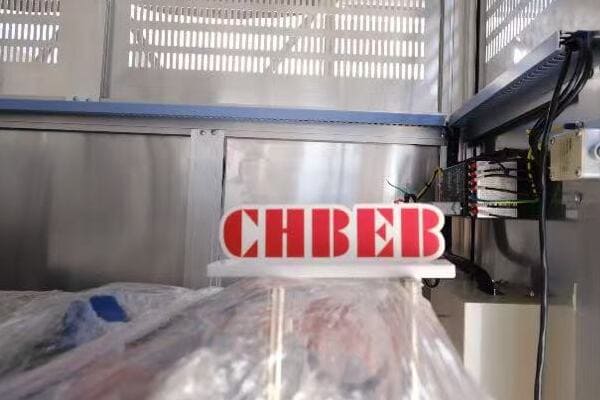
In this comprehensive guide, I’ll walk you through the intricacies of transformer losses, comparing power and distribution transformers, and provide actionable insights to enhance your grid’s efficiency. Whether you’re managing a large utility network or optimizing an industrial power system, this article will equip you with the knowledge to make informed decisions and reduce energy waste.
What Are Transformer Losses and Why They Matter?
Have you ever wondered why transformers heat up even when they’re not fully loaded? This heat is a direct result of transformer losses, but why should you care about these seemingly small energy leaks?
Transformer losses are energy dissipations that occur within transformers, primarily as no-load (core) losses and load (copper) losses. These losses matter because they directly impact energy efficiency, operational costs, and transformer lifespan. Understanding and minimizing these losses is crucial for optimizing grid performance and reducing long-term energy expenses.
Diving Deeper into Transformer Losses
Let’s break down the two main types of transformer losses and their implications:
- No-Load Losses (Core Losses)
- Load Losses (Copper Losses)
No-Load Losses (Core Losses)
These losses occur constantly, even when the transformer is energized but not supplying power:
- Caused by the magnetization and demagnetization of the core
- Present 24/7 as long as the transformer is connected to the grid
- Typically range from 0.2% to 0.5% of the transformer’s rated capacity
I once worked on a project where we replaced old transformers with modern, low-loss units. The reduction in no-load losses alone saved the facility thousands of dollars annually in energy costs, highlighting the significant impact of these seemingly small losses.
Load Losses (Copper Losses)
These losses occur when the transformer is under load:
- Caused by the resistance in the windings
- Increase with the square of the load current (I²R losses)
- Can vary significantly based on the transformer’s load profile
During a recent industrial plant upgrade, we focused on optimizing the load profile of their transformers. By better matching transformer capacity to actual load requirements, we reduced load losses by 15%, resulting in substantial energy savings.
Why Transformer Losses Matter
Understanding and minimizing transformer losses is crucial for several reasons:
- Energy Efficiency: Losses directly reduce the overall efficiency of power transmission and distribution.
- Operational Costs: Energy lost in transformers must be paid for but provides no useful output.
- Environmental Impact: Reduced losses mean less energy generation and lower carbon emissions.
- Transformer Lifespan: Lower losses often correlate with reduced heat generation, potentially extending transformer life.
Here’s a quick overview of how losses impact different aspects of grid operation:
| Aspect | Impact of Losses |
|---|---|
| Energy Bills | Direct increase in operational costs |
| Grid Capacity | Reduced effective power delivery |
| Carbon Footprint | Increased emissions due to wasted energy |
| Equipment Lifespan | Potential reduction due to heat stress |
| Voltage Regulation | Can affect power quality delivered to end-users |
In my experience, many organizations underestimate the cumulative effect of transformer losses. I recall a utility company that initially balked at the higher cost of low-loss transformers. After we conducted a comprehensive loss evaluation study, they realized that the premium would be recovered in just three years through energy savings, with continued benefits for decades.
Understanding transformer losses is not just about technical specifications; it’s about recognizing their real-world impact on your operations, finances, and environmental footprint. As we delve deeper into specific losses in power and distribution transformers, keep in mind that every percentage point of efficiency gained can translate to significant long-term benefits for your grid system.
Power Transformer Losses Explained?
Are you puzzled by the complexities of power transformer losses? You’re not alone. Many engineers struggle to grasp the full impact of these losses on large-scale power systems. But what if you could break down these losses into clear, manageable components?
Power transformer losses primarily consist of core losses (no-load losses) and copper losses (load losses). Core losses occur constantly due to the magnetization of the core, while copper losses vary with load. Additional losses come from cooling systems and voltage regulation processes. In industrial settings like power plants or transmission substations, these losses can significantly impact overall efficiency.
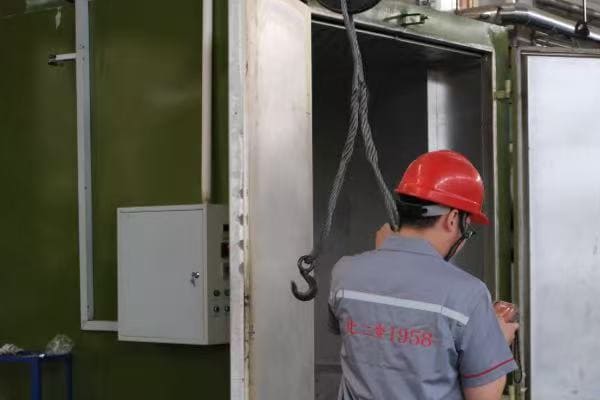
Understanding Power Transformer Losses in Detail
Let’s break down the main components of power transformer losses:
- Core Losses (No-Load Losses)
- Copper Losses (Load Losses)
- Cooling System Losses
- Regulation Losses
Core Losses (No-Load Losses)
These losses occur as long as the transformer is energized:
- Caused by hysteresis and eddy currents in the core
- Typically range from 0.04% to 0.1% of rated capacity in modern designs
- Present even when the transformer is not supplying power
I once worked on a project upgrading a major substation. By replacing old transformers with modern units using advanced core materials, we reduced no-load losses by 30%, resulting in significant energy savings given the 24/7 operation of these units.
Copper Losses (Load Losses)
These losses vary with the load on the transformer:
- Caused by resistance in the windings (I²R losses)
- Increase quadratically with load current
- Can be substantial at high loads, often 0.2% to 0.5% of rated capacity at full load
During a recent power plant transformer replacement, we focused on optimizing winding design. This reduced full-load copper losses by 20%, improving overall plant efficiency, especially during peak generation periods.
Cooling System Losses
Often overlooked, but significant in large power transformers:
- Energy consumed by cooling fans and oil pumps
- Can account for 0.05% to 0.1% of transformer capacity
- Varies based on load and ambient conditions
In a hot climate project, we implemented an advanced cooling control system. This reduced cooling-related losses by 40% compared to traditional systems, showcasing the importance of considering environmental factors in loss reduction strategies.
Regulation Losses
These losses occur during voltage regulation:
- Associated with on-load tap changers (OLTC)
- Can include both electrical and mechanical losses
- Often small but cumulative over time
Here’s a typical breakdown of losses in a large power transformer:
| Loss Type | Percentage of Rated Capacity | Notes |
|---|---|---|
| Core Loss | 0.04% – 0.1% | Constant, regardless of load |
| Copper Loss | 0.2% – 0.5% | At full load, varies with load squared |
| Cooling Loss | 0.05% – 0.1% | Varies with load and ambient temperature |
| Regulation Loss | 0.01% – 0.03% | Depends on tap changer operations |
Real-World Impact in Industrial Settings
In power plants and transmission substations, these losses have significant implications:
- Energy Production: In power plants, transformer losses directly reduce net energy output.
- Transmission Efficiency: Losses in substation transformers affect the overall efficiency of power transmission.
- Operational Costs: Continuous losses translate to ongoing operational expenses.
I recall a project at a 1000 MW power plant where optimizing the main step-up transformer reduced losses by 0.1% of the plant’s output. This seemingly small improvement translated to an additional 1 MW of sellable power, worth millions annually.
Understanding and minimizing these losses is crucial for several reasons:
- Economic Impact: Every bit of loss reduction translates to significant cost savings over time.
- Grid Stability: More efficient transformers contribute to a more stable and reliable grid.
- Environmental Considerations: Reduced losses mean less wasted energy and lower carbon emissions.
In my experience, addressing power transformer losses requires a holistic approach. It’s not just about choosing a transformer with the lowest losses on paper. Factors like load profile, ambient conditions, and long-term operational strategy all play crucial roles. By carefully considering these factors and leveraging the latest in transformer technology, significant improvements in efficiency and performance can be achieved in large-scale power systems.
Distribution Transformer Losses in Real-World Grids?
Are you aware of the hidden energy drains in your distribution network? Many grid operators overlook the cumulative impact of losses in distribution transformers, but these can significantly affect overall system efficiency. So, how do these losses manifest in real-world grids, and why should you pay attention to them?
Distribution transformer losses, while smaller per unit than power transformers, have a substantial cumulative effect due to their large numbers in the grid. They suffer from both no-load losses during light load periods and load losses during peak times. In real-world grids, these losses are exacerbated by varying load profiles in commercial and residential areas, leading to significant energy waste and increased operational costs.
Understanding Distribution Transformer Losses in Practice
Let’s explore the key aspects of distribution transformer losses in real-world scenarios:
- Standby Losses (No-Load Losses)
- Variable Load Losses
- Impact of Load Profiles
- Cumulative Effect in Large Networks
Standby Losses (No-Load Losses)
These losses are particularly significant in distribution transformers:
- Present 24/7, even during low demand periods
- Can account for a large portion of total losses in lightly loaded transformers
- Often overlooked but crucial in overall efficiency calculations
I once conducted an audit for a suburban power network and found that no-load losses in distribution transformers accounted for over 60% of total transformer losses. This revelation led to a systematic replacement program with low-loss units, significantly improving overall grid efficiency.
Variable Load Losses
Distribution transformers face highly variable loads:
- Load losses fluctuate dramatically throughout the day
- Peak efficiency often doesn’t align with typical load profiles
- Challenges in sizing transformers for optimal efficiency
During a recent smart grid project, we implemented dynamic load management. This approach allowed us to better match transformer loading to their peak efficiency points, reducing overall losses by 15% compared to traditional fixed-capacity systems.
Impact of Load Profiles
Different areas have distinct load characteristics:
- Residential areas: Evening peaks, low daytime loads
- Commercial districts: Daytime peaks, low nighttime demand
- Mixed-use zones: Complex, varying load patterns
Here’s a typical daily loss profile for a distribution transformer in a residential area:
| Time | Load (% of Capacity) | Total Losses (% of Rated Capacity) |
|---|---|---|
| 12 AM – 6 AM | 20% | 0.3% (mostly no-load) |
| 6 AM – 12 PM | 40% | 0.5% |
| 12 PM – 6 PM | 60% | 0.8% |
| 6 PM – 12 AM | 80% | 1.2% (peak losses) |
Cumulative Effect in Large Networks
The true impact of distribution transformer losses becomes apparent at the network level:
- Thousands of units in a typical utility grid
- Small individual losses add up to significant total energy waste
- Potential for substantial cost savings through efficiency improvements
I worked on a city-wide efficiency upgrade project where replacing just 20% of the oldest distribution transformers with high-efficiency models reduced overall distribution losses by 5%, saving millions in energy costs annually.
Real-World Challenges and Solutions
-
Aging Infrastructure:
- Many grids still use older, less efficient transformers
- Gradual replacement programs can yield significant benefits
-
Sizing Dilemmas:
- Oversized transformers lead to high no-load losses
- Undersized units suffer from excessive load losses and reduced lifespan
-
Smart Grid Integration:
- Modern monitoring systems can help optimize transformer loading
- Data-driven approaches to loss reduction and maintenance
In my experience, addressing distribution transformer losses requires a multi-faceted approach:
- Strategic replacement of older units with high-efficiency models
- Careful sizing based on detailed load analysis
- Implementation of smart monitoring and load management systems
- Consideration of amorphous core transformers for areas with high energy costs
By focusing on these aspects, utilities and industrial users can significantly reduce their energy losses, improve grid efficiency, and reduce operational costs. The key is to view distribution transformer efficiency not as a one-time decision but as an ongoing process of optimization and improvement.
Comparison Table: Power vs Distribution Transformer Losses?
Are you finding it challenging to compare the losses between power and distribution transformers? You’re not alone. Many engineers struggle to grasp the nuances of how these losses differ and their respective impacts on grid efficiency. But what if you had a clear, side-by-side comparison to help you understand these crucial differences?
Power and distribution transformers exhibit different loss characteristics due to their distinct roles and operating conditions. Power transformers typically have lower no-load losses but higher load losses at peak capacity. Distribution transformers often face higher relative no-load losses due to extended periods of light loading. Understanding these differences is crucial for optimizing overall grid efficiency.
Comprehensive Comparison of Transformer Losses
Let’s break down the key differences in losses between power and distribution transformers:
| Loss Type | Power Transformer | Distribution Transformer |
|---|---|---|
| No-Load Loss | Low (optimized core) | Moderate (high standby) |
| Load Loss | High at peak load | Varies with user profile |
| Efficiency Range | 98.5–99.4% | 96.5–98.5% |
| Typical Operating Hours | 24/7 constant | Variable daily profile |
| Cooling Overhead | Higher | Lower |
Detailed Analysis of Loss Differences
-
No-Load Losses:
- Power Transformers: Typically 0.04% to 0.1% of rated capacity
- Distribution Transformers: Often 0.1% to 0.3% of rated capacity
Power transformers generally have lower relative no-load losses due to more optimized core designs and materials. However, their larger size means the absolute value of these losses can be significant.
I once worked on a project comparing a 100 MVA power transformer with fifty 2 MVA distribution transformers. Despite the power transformer’s lower percentage no-load loss, its absolute no-load loss was equivalent to about 20 of the distribution units, highlighting the importance of considering both relative and absolute losses.
-
Load Losses:
- Power Transformers: Can reach 0.2% to 0.5% of rated capacity at full load
- Distribution Transformers: Typically 0.5% to 1.5% of rated capacity at full load
Power transformers often operate closer to their rated capacity, making load losses a significant factor. Distribution transformers frequently operate below capacity, reducing the impact of load losses but increasing the relative importance of no-load losses.
-
Efficiency Range:
- Power Transformers: Higher peak efficiency, often above 99%
- Distribution Transformers: Lower peak efficiency, typically 97-98%
The efficiency difference is partly due to the scale and partly due to design priorities. In a recent grid modernization project, we found that upgrading to high-efficiency distribution transformers could bring their performance closer to that of power transformers, significantly impacting overall system efficiency.
-
Operating Profile:
- Power Transformers: Often run at high, constant loads
- Distribution Transformers: Face highly variable loads
This difference in operating profile means that power transformers are often optimized for full-load efficiency, while distribution transformers need to balance efficiency across a wide load range.
-
Cooling Overhead:
- Power Transformers: Significant cooling systems (fans, pumps)
- Distribution Transformers: Often rely on passive cooling
The additional energy used for cooling in power transformers can be substantial. In a recent substation upgrade, implementing advanced cooling controls reduced the cooling-related losses by 30%, showcasing the importance of considering these auxiliary losses.
Implications for Grid Efficiency
Understanding these differences is crucial for several reasons:
- System Design: Proper transformer selection and sizing based on expected load profiles
- Loss Evaluation: Accurate assessment of total losses in the grid
- Efficiency Improvement Strategies: Targeted approaches for different transformer types
- Economic Considerations: Balancing initial costs with long-term efficiency gains
In my experience, the key to optimizing grid efficiency lies in recognizing and addressing the unique loss characteristics of both power and distribution transformers. For instance, in a recent smart grid project, we implemented different strategies for each:
- For power transformers, we focused on advanced core materials and optimized cooling systems, reducing both no-load and load losses.
- For distribution transformers, we implemented a dynamic load management system to keep units operating closer to their peak efficiency points, significantly reducing overall losses.
This tailored approach led to a 3% improvement in overall grid efficiency, translating to substantial energy and cost savings.
Remember, while individual transformer efficiencies are important, the cumulative effect across the entire grid is what truly impacts overall efficiency. A holistic approach, considering both power and distribution transformer losses, is essential for creating a truly efficient and sustainable power system.
How Transformer Losses Impact Overall Grid Efficiency?
Are you wondering why your grid efficiency isn’t meeting expectations despite using modern equipment? The answer might lie in the often-overlooked impact of transformer losses. But how exactly do these losses affect the bigger picture of grid efficiency?
Transformer losses significantly impact overall grid efficiency by reducing the amount of usable power delivered to end-users. These losses, both in power and distribution transformers, accumulate across the network, leading to increased energy generation requirements, higher operational costs, and greater environmental impact. Understanding and minimizing these losses is crucial for optimizing grid performance and sustainability.

The Ripple Effect of Transformer Losses on Grid Efficiency
Let’s explore how transformer losses impact various aspects of grid operation:
- Energy Generation Requirements
- Operational Costs
- Environmental Impact
- Grid Stability and Reliability
- Long-term Infrastructure Planning
Energy Generation Requirements
Transformer losses directly increase the amount of power that needs to be generated:
- Every kWh lost in transformers must be compensated by additional generation
- This leads to a cascading effect, as increased generation also incurs transmission and distribution losses
I once worked on a project analyzing a regional grid where transformer losses accounted for 3% of total energy generation. By implementing a comprehensive loss reduction strategy, we were able to reduce this to 2%, effectively freeing up a significant amount of generation capacity.
Operational Costs
Losses translate directly into increased operational expenses:
- Higher fuel consumption in power plants
- Increased wear and tear on generation equipment
- Additional costs for maintaining and replacing transformers due to heat stress
Here’s a simplified breakdown of how losses impact costs:
| Loss Percentage | Annual Energy Loss (MWh) | Estimated Annual Cost ($) |
|---|---|---|
| 1% | 87,600 | 8,760,000 |
| 2% | 175,200 | 17,520,000 |
| 3% | 262,800 | 26,280,000 |
*Assuming a 1000 MW grid and $100/MWh energy cost
Environmental Impact
Increased energy generation to compensate for losses has significant environmental consequences:
- Higher carbon emissions from fossil fuel plants
- Increased water consumption for cooling in thermal power plants
- Greater land use for renewable energy sources to meet additional demand
During an environmental impact assessment for a utility, we found that reducing transformer losses by 1% across their grid was equivalent to removing 50,000 cars from the road in terms of CO2 emissions reduction.
Grid Stability and Reliability
Transformer losses can affect grid stability and reliability:
- Voltage drops due to losses can impact power quality
- Heat generated by losses can lead to premature transformer failure
- Uneven loss distribution can create grid imbalances
In a recent smart grid project, implementing advanced monitoring and loss reduction techniques improved voltage stability by 15%, significantly enhancing overall grid reliability.
Long-term Infrastructure Planning
Understanding and projecting transformer losses is crucial for future grid planning:
- Accurate loss forecasting helps in sizing future generation capacity
- Influences decisions on grid expansion and reinforcement
- Impacts the integration of renewable energy sources
During a 10-year grid modernization plan I worked on, factoring in projected reductions in transformer losses allowed us to downsize several planned substations, resulting in significant capital cost savings.
Strategies for Mitigating the Impact of Losses
-
Regular Efficiency Audits:
- Conduct comprehensive assessments of transformer losses across the grid
- Identify hotspots and prioritize upgrades
-
Strategic Replacement Programs:
- Gradually replace older, less efficient transformers with modern, low-loss units
- Focus on high-impact areas first for maximum benefit
-
Smart Grid Technologies:
- Implement advanced monitoring and control systems
- Use data analytics to optimize transformer loading and efficiency
-
Load Management:
- Encourage load balancing to keep transformers operating near their peak efficiency points
- Implement demand response programs to reduce peak loads
-
Policy and Regulation:
- Advocate for and implement stringent efficiency standards for new transformer installations
- Consider lifecycle costs, not just initial purchase price, in procurement decisions
In my experience, addressing transformer losses requires a holistic approach. It’s not just about improving individual transformer efficiency, but about understanding and optimizing the entire power delivery system. By focusing on reducing these losses, utilities and grid operators can significantly improve overall grid efficiency, reduce costs, and contribute to a more sustainable energy future.
Remember, while the impact of losses from a single transformer might seem small, the cumulative effect across thousands of units in a grid is substantial. Every percentage point of efficiency gained can translate to millions in savings and significant environmental benefits over time.
How to Reduce Losses in Power and Distribution Transformers?
Are you struggling to improve the efficiency of your power system? The key might lie in reducing transformer losses, but where do you start? Many engineers find this task daunting, but with the right approach, significant improvements are possible. So, how can you effectively reduce losses in both power and distribution transformers?
Reducing transformer losses involves optimizing core materials, improving winding designs, implementing efficient cooling systems, and employing smart load management. For power transformers, focus on advanced core materials and optimized cooling. For distribution transformers, consider amorphous cores and smart loading strategies. Both types benefit from regular maintenance and strategic replacement of older units.
Strategies for Reducing Transformer Losses
Let’s explore effective methods to minimize losses in both power and distribution transformers:
- Advanced Core Materials
- Improved Winding Design
- Efficient Cooling Systems
- Smart Load Management
- Regular Maintenance and Monitoring
- Strategic Replacement of Older Units
Advanced Core Materials
Utilizing cutting-edge materials can significantly reduce core losses:
- Amorphous metal cores for distribution transformers
- High-grade, grain-oriented silicon steel for power transformers
I once worked on a project where replacing standard silicon steel cores with amorphous metal in distribution transformers reduced no-load losses by up to 70%. While the initial cost was higher, the energy savings paid back the investment in just three years.
Improved Winding Design
Optimizing winding design can minimize load losses:
- Use of larger conductor cross-sections to reduce resistance
- Advanced winding geometries to minimize eddy currents
In a recent power transformer upgrade project, implementing a novel winding design reduced load losses by 15% compared to the conventional design, significantly improving efficiency under high load conditions.
Efficient Cooling Systems
Proper cooling is crucial, especially for power transformers:
- Implement advanced oil circulation systems
- Use of more efficient fans and pumps
- Smart cooling controls based on load and ambient conditions
During a substation modernization project, we installed an intelligent cooling system that adjusted its operation based on real-time transformer loading and ambient temperature. This reduced cooling-related energy consumption by 25% while improving overall transformer efficiency.
Smart Load Management
Optimizing transformer loading can significantly reduce overall losses:
- Implement load balancing across multiple transformers
- Use of on-load tap changers for efficient voltage regulation
- Dynamic load management in distribution networks
Here’s a comparison of losses under different loading scenarios:
| Loading Scenario | No-Load Loss | Load Loss | Total Loss |
|---|---|---|---|
| Single Transformer at 80% | 0.1% | 0.8% | 0.9% |
| Two Transformers at 40% each | 0.2% | 0.4% | 0.6% |
This table illustrates how smart load distribution can reduce overall losses.
Regular Maintenance and Monitoring
Proactive maintenance is key to maintaining efficiency:
- Regular oil testing and filtration for oil-filled transformers
- Thermal imaging to detect hotspots
- Continuous monitoring of key parameters (temperature, load, etc.)
I recall a case where implementing a comprehensive monitoring system on a fleet of distribution transformers allowed us to identify and address efficiency issues proactively, resulting in a 2% overall improvement in distribution efficiency.
Strategic Replacement of Older Units
Replacing older, less efficient transformers can yield significant benefits:
- Prioritize replacement based on age, efficiency, and loading
- Consider total cost of ownership, not just initial purchase price
In a recent grid modernization project, we developed a strategic replacement plan for distribution transformers. By prioritizing the replacement of the oldest 20% of units with high-efficiency models, we achieved a 5% reduction in overall distribution losses.
Implementation Strategies
- Conduct a comprehensive loss audit of your transformer fleet
- Develop a prioritized action plan focusing on high-impact areas
- Consider both short-term improvements and long-term strategies
- Leverage smart grid technologies for real-time monitoring and management
- Stay informed about the latest advancements in transformer technology
Remember, reducing transformer losses is not a one-time effort but an ongoing process. It requires a combination of technological upgrades, smart management strategies, and regular maintenance. By implementing these strategies, you can significantly improve the efficiency of your power system, reduce operational costs, and contribute to a more sustainable energy future.
In my experience, the key to success in reducing transformer losses lies in taking a holistic approach. It’s not just about focusing on individual transformers but understanding how they interact within the broader power system. By considering factors like load profiles, environmental conditions, and long-term grid development plans, you can make informed decisions that lead to substantial and lasting efficiency improvements.
Final Takeaway: Choosing Efficient Transformers for Your Grid
Are you ready to make a significant impact on your grid’s efficiency but unsure where to start? Choosing the right transformers is a critical decision that can have long-lasting effects on your system’s performance and operational costs. But how do you navigate this complex decision-making process to ensure you’re selecting the most efficient transformers for your specific needs?
Selecting efficient transformers for your grid requires a comprehensive approach considering voltage levels, load profiles, environmental factors, and long-term operational costs. For power transformers, prioritize advanced core materials and cooling systems. For distribution transformers, focus on amorphous cores and smart loading capabilities. Always consider total cost of ownership, including lifetime energy losses, not just initial purchase price.
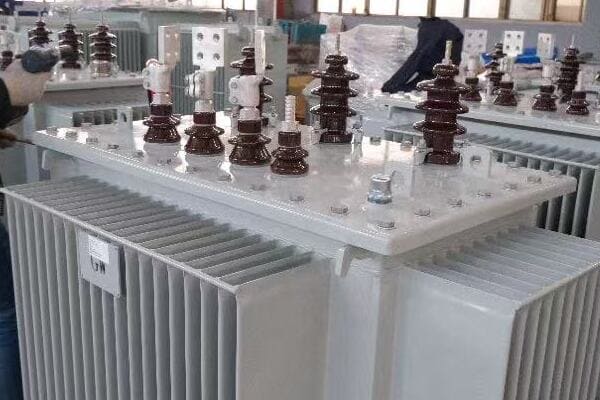
Key Considerations for Choosing Efficient Transformers
Let’s break down the essential factors to consider when selecting efficient transformers for your grid:
- Assess Your System Requirements
- Evaluate Efficiency Standards and Ratings
- Consider Total Cost of Ownership
- Factor in Environmental Conditions
- Plan for Future Grid Evolution
- Implement a Decision Checklist
Assess Your System Requirements
Start by thoroughly understanding your specific needs:
- Voltage levels required
- Expected load profiles and peak demands
- Space constraints and installation environment
I once worked with a utility that initially overspecified their distribution transformers based on peak loads. By carefully analyzing actual load profiles, we were able to select more appropriately sized, higher-efficiency units that reduced overall losses by 10%.
Evaluate Efficiency Standards and Ratings
Familiarize yourself with relevant efficiency standards:
- Look for transformers that meet or exceed minimum efficiency standards
- Consider units with premium efficiency ratings for critical applications
During a recent grid modernization project, we found that specifying transformers exceeding the minimum efficiency standards by 20% resulted in a 15-year ROI, factoring in energy savings and reduced maintenance.
Consider Total Cost of Ownership
Look beyond the initial purchase price:
- Calculate lifetime energy losses
- Factor in maintenance costs and expected lifespan
- Consider potential future energy price increases
Here’s a simplified TCO comparison for a 1000 kVA transformer over 30 years:
| Transformer Type | Initial Cost | Energy Loss Cost | Total Cost |
|---|---|---|---|
| Standard Efficiency | $30,000 | $150,000 | $180,000 |
| High Efficiency | $40,000 | $90,000 | $130,000 |
This example illustrates how a higher upfront cost can lead to significant long-term savings.
Factor in Environmental Conditions
Consider the specific conditions where the transformer will operate:
- Ambient temperature ranges
- Humidity and altitude
- Exposure to corrosive elements or pollution
In a coastal project, we specified transformers with enhanced corrosion protection and cooling systems designed for high humidity. This increased upfront costs by 15% but extended the expected lifespan by 40%, significantly improving long-term efficiency and reliability.
Plan for Future Grid Evolution
Think ahead to future grid developments:
- Potential load growth
- Integration of renewable energy sources
- Smart grid capabilities
During a recent distribution network upgrade, we selected transformers with built-in smart monitoring capabilities. This foresight allowed for seamless integration with future smart grid initiatives, avoiding costly retrofits.
Implement a Decision Checklist
Use this checklist to guide your transformer selection process:
- [ ] Accurately defined voltage and capacity requirements
- [ ] Evaluated and compared efficiency ratings of available options
- [ ] Calculated Total Cost of Ownership for top contenders
- [ ] Considered environmental factors and special protection needs
- [ ] Assessed compatibility with future grid modernization plans
- [ ] Verified compliance with relevant efficiency standards and regulations
- [ ] Evaluated manufacturer’s track record and after-sales support
- [ ] Considered ease of maintenance and availability of spare parts
- [ ] Factored in space constraints and installation requirements
- [ ] Assessed noise levels and environmental impact
In my experience, the key to selecting efficient transformers lies in taking a holistic, long-term view. It’s not just about meeting current needs but anticipating future challenges and opportunities. By carefully considering all these factors, you can make informed decisions that will enhance your grid’s efficiency, reliability, and sustainability for years to come.
Remember, choosing efficient transformers is an investment in your grid’s future. While it may require more upfront consideration and potentially higher initial costs, the long-term benefits in terms of reduced losses, lower operational costs, and improved system performance are substantial. As you embark on this selection process, don’t hesitate to consult with experts and leverage the latest in transformer technology to ensure you’re making the best choice for your specific grid requirements.
Conclusion
Transformer losses significantly impact grid efficiency, with both power and distribution transformers playing crucial roles. By understanding these losses and implementing targeted strategies for each transformer type, grid operators can substantially improve overall system efficiency, reduce operational costs, and enhance sustainability. Choosing the right transformers is a critical step towards a more efficient and reliable power grid.
Remember, at chbeb-ele, we’re not just sharing information – we’re empowering you to be part of the solution in creating a secure, clean, and efficient energy future. Let’s continue this journey together.
Are you struggling to decide between a power transformer and a distribution transformer for your project? You’re not alone. Many engineers and project managers find this choice challenging, especially when dealing with complex industrial or utility applications. But what if you could make this decision with confidence, knowing you’ve considered all the crucial factors?
Choosing between power and distribution transformers depends on voltage level, load profile, and installation context. Power transformers suit high-voltage transmission, while distribution units serve end-users. This guide compares both types and helps engineers select the right transformer for industrial or utility applications.

In this comprehensive guide, I’ll walk you through the key differences between power and distribution transformers, provide real-world examples, and offer a practical checklist to help you make the right choice for your specific needs. Whether you’re working on an industrial facility or a utility project, this article will equip you with the knowledge to select the optimal transformer solution.
Power vs Distribution Transformers: Quick Comparison?
Are you finding it difficult to quickly differentiate between power and distribution transformers? You’re not alone. Many professionals in the field struggle to articulate these differences concisely. But what if you had a clear, side-by-side comparison to reference at a glance?
Power transformers handle high voltages and large capacities in transmission systems, while distribution transformers manage lower voltages for end-user supply. Power units typically operate above 69 kV with capacities over 10 MVA, whereas distribution transformers work below 36 kV, usually up to 3000 kVA. Their design, efficiency, and application contexts differ significantly.
Detailed Comparison Table
Let’s break down the key differences in a comprehensive table:
| Feature | Power Transformer | Distribution Transformer |
|---|---|---|
| Voltage Range | 69 kV – 765 kV | 480 V – 36 kV |
| Capacity | 10 MVA – 1000 MVA | 5 kVA – 3000 kVA |
| Primary Use | Transmission systems | End-user power supply |
| Efficiency | Highest at full load | Optimized for variable loads |
| Size | Large, often custom-built | Smaller, more standardized |
| Cooling System | ONAN, ONAF, OFAF | AN, ONAN |
| Load Profile | Constant, high load | Fluctuating loads |
| Location | Substations | Pole-mounted, pad-mounted, or indoor |
| Maintenance | Complex, scheduled | Simpler, less frequent |
| Cost | High | Lower |
Key Insights from the Comparison
-
Voltage and Capacity:
The most obvious difference lies in the voltage and capacity ranges. Power transformers handle the heavy lifting in transmission systems, while distribution transformers manage the final step-down for consumer use. -
Efficiency and Load Profiles:
Power transformers are optimized for constant, high loads, typical in transmission systems. Distribution transformers, however, are designed to maintain efficiency under varying load conditions, which is common in end-user applications. -
Size and Installation:
Power transformers are generally much larger and require specialized installation in substations. Distribution transformers are more compact and versatile in their installation options. -
Cooling and Maintenance:
The cooling systems for power transformers are often more complex, reflecting their higher capacity and constant operation. This also translates to more intensive maintenance requirements.
In my experience, understanding these differences is crucial for proper system design and equipment selection. I recall a project where a client initially requested a power transformer for what was clearly a distribution application. By explaining these differences, we were able to guide them towards a more suitable and cost-effective solution using a distribution transformer.
This comparison serves as a quick reference guide, but remember that real-world applications often involve nuances that may not fit neatly into these categories. In the following sections, we’ll explore when to use each type of transformer and the key factors to consider in your selection process.
When to Use Power Transformers in Industrial or Utility Settings?
Are you wondering if your project requires a power transformer? This decision can significantly impact your system’s efficiency, reliability, and cost. But how do you know when a power transformer is the right choice for your industrial or utility application?
Power transformers are essential in high-voltage transmission systems and large-scale industrial settings. They’re ideal for applications requiring voltages above 69 kV and capacities exceeding 10 MVA. Use power transformers in utility substations, power plants, and heavy industries like steel mills or large chemical plants where high power demands and voltage step-up or step-down are crucial.
Key Scenarios for Power Transformer Use
Let’s explore the primary situations where power transformers are the optimal choice:
- Utility Transmission Systems
- Power Generation Plants
- Large Industrial Facilities
- Grid Interconnections
- Renewable Energy Integration
Utility Transmission Systems
Power transformers are the backbone of electricity transmission:
- Step-up transformers at generating stations increase voltage for long-distance transmission
- Step-down transformers at substations reduce voltage for further distribution
I once worked on a project upgrading a major transmission substation. We installed a 500 MVA, 345 kV/138 kV power transformer. This single unit was crucial in efficiently stepping down voltage from the main transmission line to the sub-transmission system, showcasing the critical role of power transformers in utility networks.
Power Generation Plants
In power plants, power transformers are essential:
- They step up generator voltage (typically 15-25 kV) to transmission levels (69 kV and above)
- Handle the full output capacity of large generators
During a recent combined cycle power plant project, we used a 300 MVA power transformer to step up the voltage from the generator’s 18 kV to the grid’s 230 kV. This transformation was vital for efficiently integrating the plant’s output into the transmission system.
Large Industrial Facilities
Some industries require power transformer-level capacity:
- Steel mills, large chemical plants, and other energy-intensive industries
- Often connected directly to high-voltage transmission lines
I recall a project for a major aluminum smelter where we installed multiple 100 MVA power transformers. These units were necessary to handle the enormous power demands and to step down the incoming 230 kV to the plant’s operating voltage of 33 kV.
Grid Interconnections
Power transformers play a crucial role in connecting different grid systems:
- They manage voltage differences between interconnected grids
- Essential for regional and international power exchanges
Renewable Energy Integration
Large-scale renewable projects often require power transformers:
- Solar farms and wind parks use them to step up voltage for grid connection
- Offshore wind farms use specialized power transformers designed for marine environments
Here’s a quick reference table for power transformer applications:
| Application | Typical Voltage Range | Common Capacities |
|---|---|---|
| Utility Transmission | 138 kV – 765 kV | 100 MVA – 1000 MVA |
| Power Generation | 69 kV – 345 kV | 50 MVA – 500 MVA |
| Large Industry | 69 kV – 230 kV | 30 MVA – 200 MVA |
| Grid Interconnection | 230 kV – 500 kV | 200 MVA – 1000 MVA |
| Renewable Integration | 69 kV – 345 kV | 50 MVA – 300 MVA |
In my experience, the decision to use a power transformer often comes down to the scale of power handling required. If your project involves high voltages, large power capacities, or serves as a critical node in a broader power system, a power transformer is likely the appropriate choice. However, it’s crucial to conduct a thorough analysis of your specific needs, considering factors like future expansion plans and system reliability requirements.
Remember, while power transformers offer unparalleled capacity and efficiency at high voltages, they also come with significant costs and complex installation requirements. Always consult with experienced engineers and consider the long-term implications of your choice in the context of your overall power system design.
When Distribution Transformers Are the Better Fit?
Are you unsure whether your project needs a distribution transformer instead of a power transformer? This decision can significantly impact your project’s cost, efficiency, and overall success. But how do you determine if a distribution transformer is the right choice for your application?
Distribution transformers are ideal for lower voltage applications, typically below 36 kV, with capacities up to 3000 kVA. They’re best suited for final voltage step-down in power distribution networks, serving residential areas, commercial buildings, and smaller industrial facilities. Choose distribution transformers when you need to supply end-users directly or for localized power distribution within a facility.
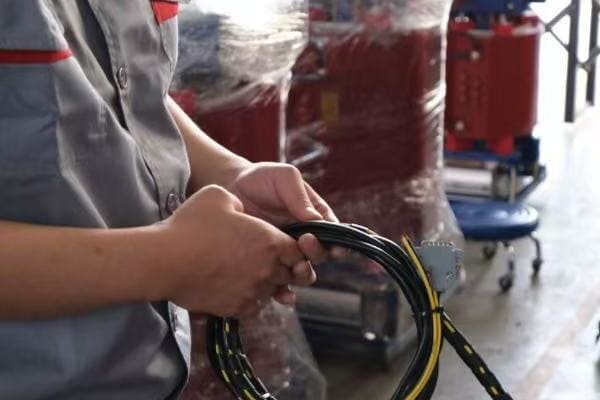
Key Scenarios for Distribution Transformer Use
Let’s explore the primary situations where distribution transformers are the optimal choice:
- Residential Power Supply
- Commercial Buildings
- Light to Medium Industrial Applications
- Urban Power Distribution
- Renewable Energy Systems (Small Scale)
Residential Power Supply
Distribution transformers are crucial in residential areas:
- They step down medium voltage (typically 11 kV or 33 kV) to household voltage (400V/230V)
- Often seen as pole-mounted or pad-mounted units in neighborhoods
I once worked on a suburban development project where we installed multiple 500 kVA pad-mounted distribution transformers. These units efficiently supplied power to clusters of homes, balancing capacity with the fluctuating demands typical of residential areas.
Commercial Buildings
For office buildings, shopping centers, and other commercial spaces:
- Handle the diverse load profiles of commercial environments
- Often installed in basements or dedicated electrical rooms
During a recent shopping mall renovation, we replaced old transformers with modern, energy-efficient 2000 kVA dry-type distribution transformers. These units not only improved power quality but also reduced energy losses, showcasing the importance of choosing the right distribution transformer for commercial applications.
Light to Medium Industrial Applications
Many industrial facilities are well-served by distribution transformers:
- Suitable for factories, workshops, and processing plants with moderate power needs
- Can handle motor loads and variable frequency drives common in industrial settings
I recall a project for a food processing plant where we used several 1500 kVA oil-filled distribution transformers. These units provided the necessary power for production equipment while offering the flexibility to handle varying loads throughout the day.
Urban Power Distribution
In cities, distribution transformers are essential for local power delivery:
- Used in network transformers for underground distribution systems
- Crucial for maintaining reliable power in densely populated areas
Renewable Energy Systems (Small Scale)
Smaller renewable energy projects often use distribution transformers:
- Solar installations on commercial rooftops
- Small wind turbines for local power generation
Here’s a quick reference table for distribution transformer applications:
| Application | Typical Voltage Range | Common Capacities |
|---|---|---|
| Residential | 11 kV/400V – 33 kV/400V | 25 kVA – 500 kVA |
| Commercial | 11 kV/400V – 33 kV/400V | 500 kVA – 2500 kVA |
| Light Industrial | 11 kV/400V – 33 kV/400V | 750 kVA – 3000 kVA |
| Urban Distribution | 11 kV/400V – 33 kV/400V | 500 kVA – 2000 kVA |
| Small Renewables | 400V – 33 kV | 50 kVA – 1000 kVA |
In my experience, the decision to use a distribution transformer often comes down to the scale and nature of the power distribution required. If your project involves supplying power directly to end-users, managing diverse load profiles, or distributing power within a localized area, a distribution transformer is likely the appropriate choice.
Distribution transformers offer several advantages in these scenarios:
- More compact and easier to install than power transformers
- Better suited for handling fluctuating loads common in end-user applications
- Often more cost-effective for lower voltage and capacity needs
- Available in a variety of types (dry-type, oil-filled, pad-mounted, pole-mounted) to suit different installation requirements
Remember, while distribution transformers are versatile and widely used, it’s crucial to select the right capacity and type for your specific application. Factors like load growth, environmental conditions, and maintenance requirements should all be considered in your decision-making process. Always consult with experienced electrical engineers to ensure your choice aligns with both current needs and future expansion plans.
5 Key Factors to Guide Your Selection?
Are you feeling overwhelmed by the numerous considerations in choosing between power and distribution transformers? You’re not alone. Many engineers and project managers struggle with this decision, given the long-term implications it can have on system performance and cost. But what if you had a clear set of key factors to guide your selection process?
Selecting between power and distribution transformers involves considering voltage level, load capacity, efficiency requirements, installation constraints, and long-term maintenance needs. These factors help determine whether your application requires the high-voltage, high-capacity capabilities of a power transformer or the more localized, end-user-focused features of a distribution transformer.

Essential Factors for Transformer Selection
Let’s explore the five critical factors that should guide your decision:
- Voltage Level Required
- Load Capacity and Variability
- Efficiency Expectations
- Installation Constraints
- Maintenance and Budget Considerations
1. Voltage Level Required
The voltage level is often the primary determining factor:
- Power Transformers: Typically for voltages above 69 kV
- Distribution Transformers: Usually below 36 kV
I once consulted on a project where the client initially requested a power transformer for a 33 kV application. After analyzing their needs, we determined that a robust distribution transformer was more appropriate and cost-effective for their voltage level.
2. Load Capacity and Variability
Consider both the total capacity needed and how the load might fluctuate:
- Power Transformers: Suit constant, high-load applications
- Distribution Transformers: Better for variable loads typical in end-user scenarios
In a recent industrial park development, we chose multiple distribution transformers over a single large power transformer. This decision provided better load management flexibility as different businesses moved in and out of the park.
3. Efficiency Expectations
Efficiency requirements can vary based on application and regulatory standards:
- Power Transformers: Highest efficiency at full load
- Distribution Transformers: Optimized for efficiency across varying load conditions
4. Installation Constraints
Physical limitations of the installation site play a crucial role:
- Power Transformers: Require large, secure substations
- Distribution Transformers: More flexible, can be pole-mounted, pad-mounted, or installed indoors
During an urban renewal project, space constraints led us to choose compact pad-mounted distribution transformers instead of a larger power transformer, allowing for more efficient use of limited real estate.
5. Maintenance and Budget Considerations
Long-term operational costs and maintenance requirements are critical:
- Power Transformers: Higher initial cost, complex maintenance
- Distribution Transformers: Lower cost, simpler maintenance
Here’s a decision matrix to help guide your choice:
| Factor | Choose Power Transformer If | Choose Distribution Transformer If |
|---|---|---|
| Voltage | ≥ 69 kV | < 36 kV |
| Load | High, constant | Variable, lower capacity |
| Efficiency | Critical at full load | Important across load range |
| Installation | Substation space available | Limited space, various mounting options |
| Maintenance | Specialized team available | Simpler, less frequent maintenance needed |
In my experience, balancing these factors is crucial for making the right choice. For instance, in a large data center project, despite the high power demands, we opted for multiple large distribution transformers instead of a single power transformer. This decision was driven by the need for redundancy, the variable load profile of the facility, and the ability to perform maintenance without complete shutdown.
Remember, these factors should not be considered in isolation. The interplay between them often leads to the optimal solution. For example, a slightly oversized distribution transformer might be preferable to a small power transformer if it offers better efficiency across expected load variations and easier maintenance.
Always consider your project’s specific context, including future expansion plans, local regulations, and environmental factors. Consulting with experienced electrical engineers and transformer manufacturers can provide valuable insights tailored to your unique situation. By carefully weighing these five key factors, you’ll be well-equipped to make an informed decision that ensures the best performance, reliability, and cost-effectiveness for your power system.
Common Mistakes to Avoid in Transformer Selection?
Are you worried about making a costly error in choosing between power and distribution transformers? You’re right to be cautious. Many projects have been derailed by incorrect transformer selection, leading to inefficiencies, increased costs, and even system failures. But what are the most common pitfalls, and how can you avoid them?
Common mistakes in transformer selection include underestimating future load growth, neglecting efficiency considerations, overlooking installation constraints, ignoring environmental factors, and focusing solely on initial costs. Avoiding these errors ensures optimal performance, longevity, and cost-effectiveness of your power system, whether you choose a power or distribution transformer.

Key Mistakes to Avoid in Transformer Selection
Let’s explore the most common errors and how to prevent them:
- Underestimating Future Load Requirements
- Neglecting Efficiency Considerations
- Overlooking Installation and Space Constraints
- Ignoring Environmental Factors
- Focusing Solely on Initial Costs
1. Underestimating Future Load Requirements
This is perhaps the most critical mistake:
- Failing to account for potential load growth can lead to premature transformer replacement
- Overestimating can result in unnecessary expenses and inefficiencies
I once consulted on a project where a manufacturing plant chose a transformer based solely on their current needs. Within two years, they had to replace it due to rapid expansion, incurring significant costs and downtime. Always factor in realistic growth projections when sizing your transformer.
2. Neglecting Efficiency Considerations
Efficiency impacts long-term operational costs:
- Choosing a less efficient transformer to save on upfront costs often leads to higher energy bills
- Failing to consider part-load efficiency in applications with variable loads
In a recent data center project, we opted for a slightly more expensive but highly efficient transformer. The energy savings over just five years more than justified the initial cost difference.
3. Overlooking Installation and Space Constraints
Physical limitations can derail your transformer choice:
- Failing to consider access for installation and maintenance
- Not accounting for weight limitations or required clearances
I recall a renovation project where the selected transformer couldn’t fit through the building’s access points. This oversight led to costly modifications and delays. Always conduct a thorough site survey before finalizing your transformer selection.
4. Ignoring Environmental Factors
Environmental conditions significantly impact transformer performance and lifespan:
- Neglecting to consider ambient temperature, humidity, or altitude
- Failing to account for corrosive or polluted environments
During a coastal industrial project, we initially overlooked the corrosive effects of salt air. This led to premature degradation of the transformer enclosure. We resolved the issue by specifying a transformer with enhanced corrosion protection, but it was a costly lesson.
5. Focusing Solely on Initial Costs
The cheapest option upfront isn’t always the most cost-effective:
- Neglecting to calculate Total Cost of Ownership (TCO)
- Failing to consider maintenance costs and potential downtime
Here’s a comparison table to illustrate the impact of these mistakes:
| Mistake | Potential Consequences | Prevention Strategy |
|---|---|---|
| Underestimating Load | Premature replacement, system overload | Conduct thorough load analysis, include growth projections |
| Neglecting Efficiency | Higher operational costs | Calculate long-term energy costs, consider part-load efficiency |
| Overlooking Space Constraints | Installation delays, additional costs | Perform detailed site survey, consider future maintenance access |
| Ignoring Environment | Reduced lifespan, increased maintenance | Assess environmental conditions, specify appropriate protection |
| Focus on Initial Cost | Higher TCO, potential reliability issues | Calculate TCO, consider long-term benefits of quality equipment |
In my experience, avoiding these mistakes often comes down to thorough planning and a holistic approach to transformer selection. I always advise clients to:
- Conduct a comprehensive needs assessment, including future projections
- Calculate Total Cost of Ownership over the expected life of the transformer
- Perform a detailed site survey and environmental assessment
- Consult with experienced engineers and reputable manufacturers
- Consider the long-term implications of their choice on system reliability and efficiency
Remember, the goal is not just to select a transformer that meets your current needs, but one that will serve your system efficiently and reliably for decades to come. By avoiding these common mistakes, you’ll be well on your way to making an informed decision that balances performance, cost, and long-term reliability, whether you choose a power or distribution transformer.
Real-World Examples: Industrial vs Utility Project Use Cases?
Are you struggling to visualize how power and distribution transformers fit into real-world scenarios? You’re not alone. Many engineers and project managers find it challenging to translate theoretical knowledge into practical applications. But what if you had concrete examples to illustrate how these transformers are used in actual industrial and utility projects?
Real-world applications demonstrate clear distinctions between power and distribution transformer use. In industrial settings, power transformers often serve large facilities like steel mills, while distribution transformers are common in diverse manufacturing environments. Utility projects typically use power transformers in substations and distribution transformers for local power delivery. These examples highlight the importance of proper transformer selection based on specific project requirements.
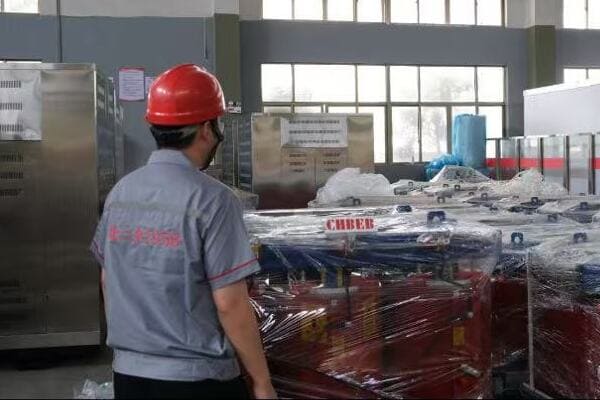
Case Studies: Industrial and Utility Transformer Applications
Let’s explore real-world examples of transformer applications in both industrial and utility settings:
- Steel Mill (Industrial – Power Transformer)
- Automotive Manufacturing Plant (Industrial – Distribution Transformer)
- Grid Substation (Utility – Power Transformer)
- Urban Power Distribution (Utility – Distribution Transformer)
1. Steel Mill (Industrial – Power Transformer)
Project Overview:
- Large-scale steel production facility
- High power demand for electric arc furnaces
Transformer Solution:
- Multiple 100 MVA, 230kV/33kV power transformers
- Oil-immersed with forced oil and air cooling (OFAF)
I once worked on a project for a major steel mill where we installed three 100 MVA power transformers. These units were crucial in stepping down the incoming 230 kV transmission voltage to the 33 kV used within the plant. The high capacity was necessary to handle the enormous power demands of the electric arc furnaces, which could draw up to 80 MW during peak operation.
Key Considerations:
- High continuous load capacity
- Ability to handle frequent load fluctuations
- Robust design to withstand harsh industrial environment
2. Automotive Manufacturing Plant (Industrial – Distribution Transformer)
Project Overview:
- Modern car assembly facility
- Diverse power needs for assembly lines, robotic systems, and facility operations
Transformer Solution:
- Multiple 2500 kVA, 33kV/400V distribution transformers
- Dry-type with forced air cooling (AF)
In a recent automotive plant project, we implemented a network of 2500 kVA distribution transformers throughout the facility. These units were strategically placed to serve different production areas, providing the necessary voltage step-down from the plant’s 33 kV internal distribution to the 400 V used by most equipment.
Key Considerations:
- Flexibility to handle varying loads across different production shifts
- Compact design for installation within the factory
- Low maintenance requirements to minimize production disruptions
3. Grid Substation (Utility – Power Transformer)
Project Overview:
- Major transmission substation upgrade
- Part of a grid modernization initiative
Transformer Solution:
- 500 MVA, 345kV/138kV power transformer
- Oil-immersed with forced oil and forced air cooling (OFAF)
I was involved in a significant grid upgrade project where we installed a 500 MVA power transformer at a key substation. This transformer played a critical role in stepping down voltage from the 345 kV main transmission line to the 138 kV sub-transmission system, effectively bridging the gap between long-distance power transmission and regional distribution.
Key Considerations:
- Ultra-high reliability requirements
- Advanced monitoring and control systems integration
- Designed for decades of continuous operation
4. Urban Power Distribution (Utility – Distribution Transformer)
Project Overview:
- City-wide power distribution network upgrade
- Focus on improving reliability and capacity in a growing urban area
Transformer Solution:
- Numerous 1000 kVA, 11kV/400V distribution transformers
- Mix of pad-mounted and vault-type installations
During a comprehensive urban power infrastructure modernization, we deployed hundreds of 1000 kVA distribution transformers across the city. These units were the final step in bringing power from the medium-voltage distribution lines to end-users, providing the necessary voltage transformation for residential and commercial customers.
Key Considerations:
- Compact design for urban installation constraints
- Low noise operation for residential areas
- Smart grid compatibility for future network enhancements
Here’s a comparison table summarizing these real-world applications:
| Project Type | Transformer Type | Capacity | Voltage | Key Features |
|---|---|---|---|---|
| Steel Mill | Power | 100 MVA | 230kV/33kV | High capacity, load fluctuation handling |
| Auto Plant | Distribution | 2500 kVA | 33kV/400V | Flexible, compact, low maintenance |
| Grid Substation | Power | 500 MVA | 345kV/138kV | Ultra-reliable, advanced monitoring |
| Urban Distribution | Distribution | 1000 kVA | 11kV/400V | Compact, low noise, smart grid ready |
These real-world examples illustrate the distinct applications of power and distribution transformers in industrial and utility settings. Power transformers excel in high-voltage, high-capacity scenarios typical in large industrial facilities and utility substations. Distribution transformers shine in their versatility and ability to handle the final voltage step-down in various settings, from factories to urban neighborhoods.
In my experience, understanding these practical applications is crucial for making informed decisions in transformer selection. Each project has unique requirements, and the right choice depends on a thorough analysis of power needs, environmental factors, and long-term operational considerations. Whether you’re working on an industrial facility or a utility project, these examples provide a solid foundation for understanding how to apply transformer technology effectively in real-world scenarios.
Final Checklist – Which Transformer Is Right for Your Project?
Are you ready to make the final decision on whether to use a power or distribution transformer for your project? This choice can be daunting, given the long-term implications for your system’s performance and cost-effectiveness. But what if you had a comprehensive checklist to ensure you’ve considered all crucial factors before making your decision?
Selecting the right transformer involves assessing voltage requirements, load capacity, efficiency needs, installation constraints, and long-term operational factors. This final checklist guides you through key considerations for both power and distribution transformers, helping ensure your choice aligns with your project’s specific needs, whether in industrial or utility applications.
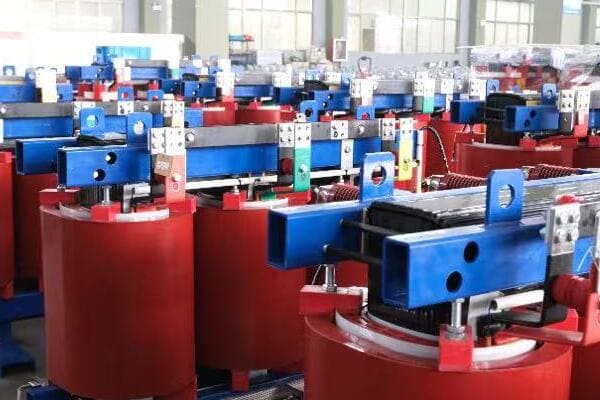
Comprehensive Transformer Selection Checklist
Use this checklist to guide your final decision between power and distribution transformers:
-
Voltage Requirements
- [ ] Primary voltage level: __ kV
- [ ] Secondary voltage level: __ kV
- [ ] Does the voltage range fall within power transformer territory (≥69 kV)? Yes/No
-
Load Capacity
- [ ] Maximum load requirement: __ MVA
- [ ] Expected load growth over next 10 years: __ %
- [ ] Is the capacity beyond typical distribution transformer range (>10 MVA)? Yes/No
-
Load Profile
- [ ] Constant high load or variable load?
- [ ] Frequency of peak loads: __
- [ ] Does the load profile match power transformer characteristics (constant high load)? Yes/No
-
Efficiency Requirements
- [ ] Minimum efficiency at full load: __ %
- [ ] Importance of part-load efficiency: High/Medium/Low
- [ ] Are there specific energy efficiency regulations to meet? Yes/No
-
Installation Environment
- [ ] Indoor or outdoor installation?
- [ ] Available space dimensions: __ m x __ m
- [ ] Any weight restrictions? Yes/No
- [ ] Ambient temperature range: __ °C to __ °C
- [ ] Special environmental considerations (e.g., corrosive, high altitude): __
-
Maintenance and Operational Factors
- [ ] Availability of specialized maintenance personnel: Yes/No
- [ ] Acceptable frequency of maintenance: __
- [ ] Budget for long-term maintenance: $__
- [ ] Expected lifespan of the installation: __ years
-
System Integration
- [ ] Compatibility with existing infrastructure: Yes/No
- [ ] Smart grid integration requirements: Yes/No
- [ ] Special protection or monitoring systems needed: Yes/No
-
Regulatory and Safety Considerations
- [ ] Applicable local or industry-specific regulations: __
- [ ] Fire safety requirements: __
- [ ] Noise level restrictions: __ dB
-
Cost Considerations
- [ ] Initial budget for transformer: $__
- [ ] Estimated annual operational costs: $__
- [ ] Expected Return on Investment period: __ years
-
Future-Proofing
- [ ] Potential for system expansion: Yes/No
- [ ] Anticipated changes in power requirements: __
- [ ] Flexibility needed for future modifications: High/Medium/Low
Final Decision:
Based on the above considerations, the recommended transformer type is:
[ ] Power Transformer
[ ] Distribution Transformer
Justification for selection:
In my experience, going through this checklist systematically can reveal important factors that might otherwise be overlooked. I recall a project where initially a power transformer seemed necessary due to high load requirements. However, after completing this checklist, we realized that the variable load profile and space constraints made a set of high-capacity distribution transformers a more suitable choice.
Remember, while this checklist is comprehensive, it’s not exhaustive. Each project may have unique considerations. I always recommend consulting with experienced electrical engineers and transformer manufacturers to validate your decision. They can provide valuable insights based on similar projects and the latest technological advancements.
By thoroughly completing this checklist, you’ll be well-equipped to make an informed decision that ensures your transformer choice aligns perfectly with your project’s needs, whether you’re working on an industrial facility or a utility project. This careful consideration will contribute to the long-term success, efficiency, and reliability of your power system.
Conclusion
Choosing between power and distribution transformers requires careful consideration of voltage levels, load requirements, efficiency needs, and installation constraints. By understanding the unique characteristics of each type and avoiding common selection mistakes, you can ensure optimal performance and cost-effectiveness for your industrial or utility project. Always consider long-term factors and consult experts for the best results.
Remember, at chbeb-ele, we’re not just sharing information – we’re empowering you to be part of the solution in creating a secure, clean, and efficient energy future. Let’s continue this journey together.
Are you confused about the differences between power and distribution transformers? You’re not alone. Many engineers and project managers struggle to distinguish between these two crucial components of our electrical grid. But what if you could easily understand their unique roles and make informed decisions for your power system?
Power and distribution transformers differ in voltage levels, applications, and installation methods. Power transformers operate at high voltages in transmission systems, while distribution transformers reduce voltage for local use. Understanding these differences helps engineers select the right transformer for grid design, industrial, or commercial power delivery.
In this comprehensive guide, I’ll walk you through the key differences between power and distribution transformers. Whether you’re designing a new electrical system or upgrading an existing one, this article will equip you with the knowledge to choose the right transformer for your specific needs.
What Is a Power Transformer?
Have you ever wondered how electricity from power plants reaches our cities? Power transformers play a crucial role in this process, but what exactly are they, and how do they function in our electrical grid?
A power transformer is a high-voltage, high-capacity device used in electrical transmission systems. It typically operates at voltages between 66 kV and 765 kV, handling large power capacities. Power transformers are essential in step-up applications at power plants and step-down operations at primary substations.
Understanding Power Transformers in Depth
Let’s explore the key aspects of power transformers:
- Voltage Levels and Capacity
- Applications and Locations
- Design and Cooling Systems
- Efficiency and Load Characteristics
Voltage Levels and Capacity
Power transformers operate at the highest voltage levels in our electrical systems:
- Typical voltage range: 66 kV to 765 kV
- Capacity can range from tens to hundreds of MVA
I once worked on a project involving a 500 kV power transformer for a major transmission line. The sheer size and complexity of the unit were awe-inspiring, highlighting the critical role these devices play in our power infrastructure.
Applications and Locations
Power transformers are found at key points in the electrical grid:
- Step-up transformers at power plants: Increase generator voltage for long-distance transmission
- Step-down transformers at primary substations: Reduce transmission voltages for sub-transmission or distribution networks
Design and Cooling Systems
The design of power transformers is optimized for high efficiency and reliability:
- Core: Often made of high-grade silicon steel to minimize losses
- Windings: Typically copper, designed for high current-carrying capacity
- Cooling: Usually oil-immersed with advanced cooling systems like ONAN (Oil Natural Air Natural) or OFAF (Oil Forced Air Forced)
During a recent substation upgrade, we implemented an OFAF cooling system for a large power transformer. This choice significantly improved its capacity to handle peak loads during hot summer months.
Efficiency and Load Characteristics
Power transformers are designed for high efficiency under specific conditions:
- Optimized for constant, high loads
- Efficiency typically peaks at 80-90% of rated load
- Low load operation can lead to reduced efficiency
Here’s a quick overview of power transformer characteristics:
| Characteristic | Typical Range/Type |
|---|---|
| Voltage | 66 kV – 765 kV |
| Capacity | 10 MVA – 1000 MVA |
| Efficiency | 99%+ at optimal load |
| Cooling System | ONAN, ONAF, OFAF |
| Load Profile | Constant, high load |
Understanding the characteristics of power transformers is crucial for grid planning and large-scale power distribution projects. In my experience, the selection of the right power transformer can significantly impact the overall efficiency and reliability of a transmission system. Whether you’re working on a new power plant connection or upgrading a major substation, considering these factors will help ensure your power transformer meets the demands of your high-voltage application.
What Is a Distribution Transformer?
Have you ever wondered how the high-voltage electricity in power lines is converted to the usable voltage in our homes and businesses? This is where distribution transformers come into play. But what exactly are these devices, and how do they differ from their larger counterparts?
A distribution transformer is a type of transformer used to convert medium-voltage power to lower voltages suitable for end-user consumption. Typically operating in the range of 11 kV to 33 kV on the primary side and stepping down to 400V/230V, these transformers are the final link in the electrical distribution chain before power reaches consumers.
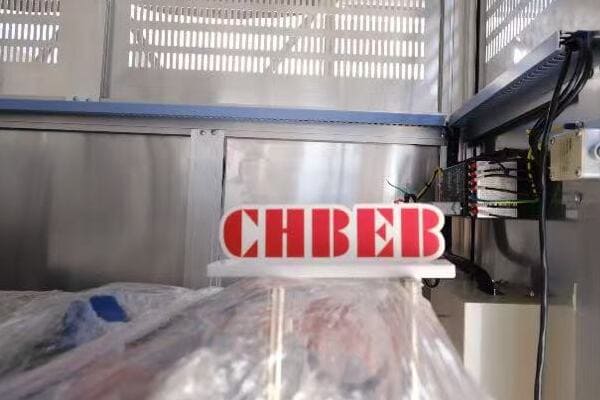
Diving Deeper into Distribution Transformers
Let’s explore the key aspects of distribution transformers:
- Voltage Levels and Capacity
- Applications and Locations
- Design Features
- Efficiency and Load Characteristics
Voltage Levels and Capacity
Distribution transformers operate at the lower end of the voltage spectrum:
- Primary voltage typically ranges from 11 kV to 33 kV
- Secondary voltage usually 400V/230V for three-phase and single-phase supply
- Capacity generally ranges from 5 kVA to 3000 kVA
I once worked on a project to upgrade the power supply in a small town. We installed several 500 kVA distribution transformers to replace older, less efficient units. The improvement in power quality and reliability was immediately noticeable to the residents.
Applications and Locations
Distribution transformers are found in various settings:
- Pole-mounted in residential areas
- Pad-mounted in commercial and light industrial zones
- Underground in urban areas with high aesthetic requirements
Design Features
These transformers are designed for versatility and ease of maintenance:
- Often dry-type or filled with biodegradable oils for environmental safety
- Compact design to fit in space-constrained areas
- Built to withstand outdoor conditions (for pole and pad-mounted types)
During a recent project for a shopping center, we opted for a cast resin dry-type distribution transformer. This choice eliminated fire risks associated with oil-filled units and simplified the installation process in the confined electrical room.
Efficiency and Load Characteristics
Distribution transformers are optimized for variable loads:
- Designed to maintain good efficiency across a range of load conditions
- Often equipped with tap changers for voltage adjustment
- Efficiency is crucial as these units operate 24/7
Here’s a quick overview of distribution transformer characteristics:
| Characteristic | Typical Range/Type |
|---|---|
| Primary Voltage | 11 kV – 33 kV |
| Secondary Voltage | 400V/230V |
| Capacity | 5 kVA – 3000 kVA |
| Efficiency | 97-99% at varying loads |
| Cooling System | AN (Air Natural), ONAN |
| Load Profile | Fluctuating |
Understanding distribution transformers is essential for anyone involved in local power distribution or building electrical systems. In my experience, choosing the right distribution transformer can significantly impact energy efficiency and power quality for end-users. Whether you’re planning a new residential development or upgrading a commercial building’s power supply, considering these factors will help ensure your distribution transformer meets the diverse needs of modern power consumers.
Key Differences Between Power and Distribution Transformers?
Are you finding it challenging to distinguish between power and distribution transformers? You’re not alone. Many professionals in the electrical industry struggle to clearly articulate the differences between these two crucial types of transformers. But what if you had a clear, side-by-side comparison to help you understand and explain these differences?
Power and distribution transformers differ significantly in voltage ranges, load handling, efficiency profiles, and installation locations. Power transformers operate at high voltages (66 kV – 765 kV) in transmission systems, while distribution transformers work at lower voltages (11 kV – 33 kV) near end-users. Their design, cooling systems, and maintenance requirements also vary to suit their specific roles in the power grid.

Comprehensive Comparison of Power and Distribution Transformers
Let’s break down the key differences in a detailed comparison table:
| Feature | Power Transformer | Distribution Transformer |
|---|---|---|
| Voltage Range | 66 kV – 765 kV | 11 kV – 33 kV |
| Load Variation | Constant | Fluctuating |
| Efficiency | Higher at full load | Optimized for variable load |
| Location | Transmission substation | Near end-user |
| Cooling | Oil-cooled / ONAN, OFAF | Often AN / ONAN |
| Maintenance | Scheduled, complex | Minimal, simpler |
| Size and Weight | Large and heavy | Compact and lighter |
| Cost | High | Lower |
| Capacity | 10 MVA – 1000 MVA | 5 kVA – 3000 kVA |
| Core Design | Larger, more complex | Simpler, standardized |
| Winding Material | Typically copper | Copper or aluminum |
| Insulation | Oil and paper (usually) | Various (oil, dry-type, resin) |
| Monitoring | Continuous, advanced | Basic, often manual checks |
| Lifespan | 30-40 years | 20-30 years |
Voltage and Capacity Differences
The most obvious distinction lies in the voltage levels and power handling capacity:
- Power Transformers: Handle bulk power at high voltages
- Distribution Transformers: Deliver power at usable voltages to end consumers
I once worked on a project that involved both types. We used a 230 kV/66 kV power transformer at the main substation and multiple 11 kV/400V distribution transformers to supply a large industrial park. The contrast in size and complexity was striking.
Load Handling and Efficiency
The load profiles these transformers are designed for differ significantly:
- Power Transformers: Optimized for constant, high loads
- Distribution Transformers: Designed to handle fluctuating loads efficiently
During a recent grid modernization project, we had to carefully consider these load characteristics. The power transformers at the substation level were sized for the maximum expected load, while the distribution transformers in residential areas were selected to maintain efficiency across varying daily load patterns.
Cooling and Maintenance
Cooling systems and maintenance requirements reflect their different applications:
- Power Transformers: Often use sophisticated cooling systems and require regular, specialized maintenance
- Distribution Transformers: Typically have simpler cooling (often air-natural) and need less frequent maintenance
Location and Installation
The physical placement of these transformers in the power system varies:
- Power Transformers: Found in large substations, often in secure, controlled environments
- Distribution Transformers: Located closer to end-users, often in public spaces or on utility poles
In my experience, understanding these differences is crucial for proper system design and equipment selection. For instance, in a recent urban development project, we had to carefully balance the need for high power capacity with space constraints and aesthetic considerations. This led us to choose compact, pad-mounted distribution transformers for local power delivery, while relying on larger power transformers at the district substation level.
These distinctions between power and distribution transformers are not just academic; they have real-world implications for system design, energy efficiency, and project costs. Whether you’re planning a large-scale power transmission project or a local distribution network, keeping these differences in mind will help you make informed decisions and ensure your power system is optimized for its specific requirements.
How to Choose Between Power and Distribution Transformers?
Are you struggling to decide whether you need a power transformer or a distribution transformer for your project? This choice can be daunting, especially when you consider the significant differences in cost, size, and application. But what if you had a clear decision-making framework to guide your selection process?
Choosing between power and distribution transformers depends on your project’s voltage requirements, power capacity needs, and the transformer’s position in the electrical system. Power transformers are suitable for high-voltage, high-capacity applications in transmission systems, while distribution transformers are ideal for lower voltage, end-user power delivery. Consider factors like load profile, location, and future expansion plans in your decision.
Key Factors in Choosing the Right Transformer
Let’s explore the critical considerations for selecting between power and distribution transformers:
- Voltage Requirements
- Power Capacity Needs
- System Position
- Load Profile
- Location and Environment
- Future Expansion Plans
Voltage Requirements
The primary factor in your decision should be the voltage levels you’re working with:
- Power Transformers: Choose for voltages 66 kV and above
- Distribution Transformers: Suitable for voltages up to 33 kV
I once consulted on a project where the client initially requested a power transformer for a 33 kV application. After analyzing their needs, we determined that a robust distribution transformer was more appropriate and cost-effective for their voltage level.
Power Capacity Needs
Consider the amount of power you need to transform:
- Power Transformers: Typically for capacities above 10 MVA
- Distribution Transformers: Generally up to 3000 kVA
System Position
Where in the electrical system will the transformer be placed?
- Power Transformers: Used in transmission systems and primary substations
- Distribution Transformers: Employed in the final step of power delivery to consumers
During a recent grid upgrade project, we used this criterion to clearly delineate where power transformers ended and distribution transformers began in the system layout.
Load Profile
The expected load characteristics should influence your choice:
- Power Transformers: Ideal for constant, high loads
- Distribution Transformers: Better suited for fluctuating loads
Location and Environment
Consider the installation site and environmental factors:
- Power Transformers: Often in dedicated substations with controlled environments
- Distribution Transformers: Can be pole-mounted, pad-mounted, or installed in varied locations
In an urban renewal project, we opted for compact, low-noise distribution transformers to fit within the aesthetic and space constraints of a densely populated area.
Future Expansion Plans
Think about potential future needs:
- Power Transformers: Choose if you anticipate significant load growth or voltage upgrades
- Distribution Transformers: More easily replaceable as needs change
Here’s a decision matrix to help guide your choice:
| Factor | Choose Power Transformer If | Choose Distribution Transformer If |
|---|---|---|
| Voltage | ≥ 66 kV | < 33 kV |
| Capacity | > 10 MVA | ≤ 3000 kVA |
| System Position | Transmission/Primary Substation | Local Distribution |
| Load Profile | Constant, High Load | Fluctuating Load |
| Location | Dedicated Substation | Various (Pole, Pad, Building) |
| Future Plans | Major Expansion Expected | Gradual Growth or Stable Needs |
Remember, these guidelines are not absolute. In my experience, there can be overlap and exceptions based on specific project requirements. For instance, in a large industrial facility, we once used a power transformer-grade unit for what would typically be a distribution application due to unique power quality and reliability needs.
The key to making the right choice is to thoroughly analyze your current needs, consider future scenarios, and consult with experts if you’re unsure. By carefully weighing these factors, you can ensure that you select the transformer type that best fits your project’s requirements, balancing performance, cost, and long-term flexibility.
Common Installation Scenarios and Tips?
Are you feeling uncertain about how to properly install power or distribution transformers in various scenarios? You’re not alone. Many engineers and project managers find the installation process challenging, especially when dealing with different environments and requirements. But what if you had a guide to common installation scenarios and expert tips to ensure a smooth and safe setup?
Transformer installation varies significantly between power and distribution types. Power transformers often require large, secure substations with specialized foundations and cooling systems. Distribution transformers can be pole-mounted, pad-mounted, or installed in buildings, each with unique considerations for accessibility, safety, and environmental protection. Proper installation is crucial for performance, safety, and longevity.
Key Installation Scenarios and Best Practices
Let’s explore common installation scenarios and tips for both power and distribution transformers:
- Power Transformer Substation Installation
- Pole-Mounted Distribution Transformer
- Pad-Mounted Distribution Transformer
- Indoor Distribution Transformer Installation
- General Installation Tips
Power Transformer Substation Installation
Installing a power transformer in a substation requires careful planning:
- Foundation: Must be robust enough to support the transformer’s weight
- Oil Containment: Requires a pit or bund to contain potential oil leaks
- Cooling Systems: Ensure adequate space for radiators or fans
- Safety Clearances: Maintain proper distances from other equipment and structures
I once oversaw the installation of a230 kV power transformer in a new substation. The foundation alone took weeks to prepare, requiring specialized concrete and reinforcement to support the 150-ton unit. We had to carefully coordinate the delivery and installation with a 500-ton crane, highlighting the complexity of power transformer installations.
Pole-Mounted Distribution Transformer
Pole-mounted transformers are common in rural and suburban areas:
- Pole Strength: Ensure the pole can support the transformer’s weight
- Mounting Height: Install at a safe height to prevent unauthorized access
- Wildlife Protection: Use guards to prevent animal-caused outages
- Accessibility: Consider maintenance access for bucket trucks
During a rural electrification project, we faced challenges with wildlife interfering with pole-mounted transformers. We implemented innovative wildlife guards, which significantly reduced outages and improved system reliability.
Pad-Mounted Distribution Transformer
Pad-mounted transformers are popular in urban and commercial settings:
- Foundation Pad: Must be level and able to support the transformer’s weight
- Flood Considerations: Install above potential flood levels
- Ventilation: Ensure adequate airflow around the unit
- Security: Implement tamper-resistant enclosures and locks
I recently worked on a shopping center development where we installed several pad-mounted transformers. We had to carefully plan their locations to balance accessibility for maintenance with aesthetics and pedestrian safety.
Indoor Distribution Transformer Installation
Installing transformers indoors presents unique challenges:
- Ventilation: Ensure proper air circulation to prevent overheating
- Fire Safety: Use dry-type transformers or implement strict fire protection measures for oil-filled units
- Noise Considerations: Install sound-dampening materials if necessary
- Access: Plan for equipment replacement and maintenance
In a hospital renovation project, we installed cast resin dry-type transformers in the basement. The challenge was managing ventilation and noise levels while ensuring easy access for future maintenance.
General Installation Tips
Regardless of the scenario, keep these tips in mind:
- Follow manufacturer guidelines and local regulations
- Ensure proper grounding and bonding
- Use appropriate personal protective equipment (PPE)
- Conduct thorough pre-energization checks
- Document the installation process for future reference
Here’s a quick reference table for installation considerations:
| Scenario | Key Considerations | Common Challenges |
|---|---|---|
| Substation | Foundation, oil containment, cooling | Space constraints, environmental impact |
| Pole-Mounted | Pole strength, accessibility | Wildlife interference, storm resilience |
| Pad-Mounted | Flooding, security, aesthetics | Vandalism, heat dissipation |
| Indoor | Ventilation, fire safety, noise | Space limitations, weight restrictions |
In my experience, successful transformer installations require careful planning and attention to detail. I recall a project where we had to retrofit a distribution transformer into an old building. The space constraints and the need to maintain the building’s historical facade presented unique challenges. We ended up designing a custom compact substation that fit within the existing structure while meeting all safety and performance requirements.
Remember, proper installation is not just about following a checklist; it’s about understanding the specific needs of your site and the transformer you’re installing. Always consult with experts and local authorities if you’re unsure about any aspect of the installation process. A well-installed transformer will operate efficiently, safely, and reliably for decades, making the extra effort in the installation phase well worth it.
Summary: Which One Fits Your Power System?
Are you still unsure whether a power transformer or a distribution transformer is the right choice for your power system? This final decision can be daunting, especially when considering the long-term implications for your project. But what if you had a clear, concise guide to help you make this crucial choice?
Choosing between power and distribution transformers depends on your system’s voltage level, capacity requirements, and position in the power grid. Power transformers are ideal for high-voltage (≥66 kV), high-capacity (>10 MVA) applications in transmission systems. Distribution transformers suit lower voltage (<33 kV), lower capacity (≤3000 kVA) needs closer to end-users. Consider load profile, location, and future expansion plans in your decision.
Final Decision-Making Guide
Let’s summarize the key factors to consider when choosing between power and distribution transformers:
- Voltage Level
- Capacity Requirements
- System Position
- Load Profile
- Installation Environment
- Future Expansion
Quick Reference Table
Use this table as a quick guide for your decision:
| Factor | Power Transformer | Distribution Transformer |
|---|---|---|
| Voltage | ≥66 kV | <33 kV |
| Capacity | >10 MVA | ≤3000 kVA |
| System Position | Transmission, Primary Substations | Local Distribution |
| Load Profile | Constant, High Load | Fluctuating Load |
| Installation | Large Substations | Pole, Pad, or Building |
| Typical Applications | Power Plants, Grid Interconnections | Residential, Commercial, Light Industrial |
Scenario-Based Recommendations
-
Large Industrial Facility:
- If connected directly to high-voltage grid: Power Transformer
- If supplied by medium-voltage line: Large Distribution Transformer
-
Residential Development:
- Typically requires Distribution Transformers
- Consider pad-mounted or pole-mounted based on aesthetics and space
-
Renewable Energy Plant:
- Solar Farm: Often requires Power Transformer for grid connection
- Small Wind Farm: May use large Distribution Transformer
-
Commercial Building:
- Usually served by Distribution Transformer
- Consider dry-type for indoor installation
-
Data Center:
- May require Power Transformer if directly connected to high-voltage grid
- Multiple Distribution Transformers for redundancy and load management
In my career, I’ve encountered numerous situations where the choice between power and distribution transformers wasn’t immediately clear. For instance, in a recent project for a large manufacturing plant, we initially considered a power transformer due to the high energy demands. However, after analyzing the local grid infrastructure and future expansion plans, we opted for multiple large distribution transformers. This decision provided greater flexibility and redundancy while still meeting the plant’s substantial power needs.
Remember, the right choice depends on your specific circumstances. Don’t hesitate to consult with experts or reach out to transformer manufacturers for guidance. The goal is to select a transformer that not only meets your current needs but also provides the flexibility to adapt to future changes in your power system.
By carefully considering these factors and understanding the strengths of each transformer type, you can make an informed decision that ensures efficient, reliable, and cost-effective power distribution for your project.
Conclusion
Choosing between power and distribution transformers requires understanding their distinct roles, voltage levels, and applications in the electrical system. Power transformers excel in high-voltage, high-capacity scenarios, while distribution transformers are ideal for local, lower-voltage power delivery. Consider your specific needs, future plans, and installation environment to make the best choice for your power system.
Are you struggling to choose the most efficient transformer for your project in China? With so many brands and conflicting claims, it’s easy to feel overwhelmed. But what if you could easily compare the top manufacturers and make an informed decision?
Transformer electrical efficiency plays a key role in energy savings and operational reliability. In China, leading transformer brands like ABB, TBEA, and SUNTEN offer varying performance levels. This guide compares the top 10 manufacturers based on efficiency, loss control, and application suitability to help engineers choose the best solution.
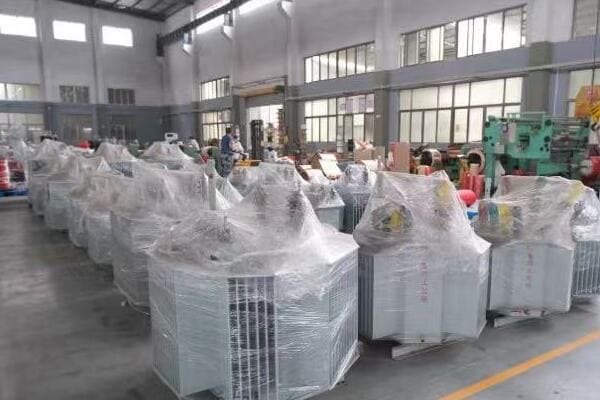
In this comprehensive guide, I’ll walk you through the key aspects of transformer efficiency, compare the top Chinese manufacturers, and provide insights to help you select the best high-efficiency transformer for your needs. Whether you’re an engineer, project manager, or buyer, this article will equip you with the knowledge to make a smart choice in the Chinese transformer market.
What Is Transformer Electrical Efficiency?
Have you ever wondered why some transformers consume more energy than others, even when they’re not under load? The answer lies in transformer efficiency. But what exactly does this term mean, and why is it so crucial for your power system?
Transformer electrical efficiency is the ratio of output power to input power, expressed as a percentage. It accounts for various losses including no-load loss, load loss, and stray loss. Higher efficiency means lower energy consumption, reduced operational costs, and often a longer equipment lifespan.
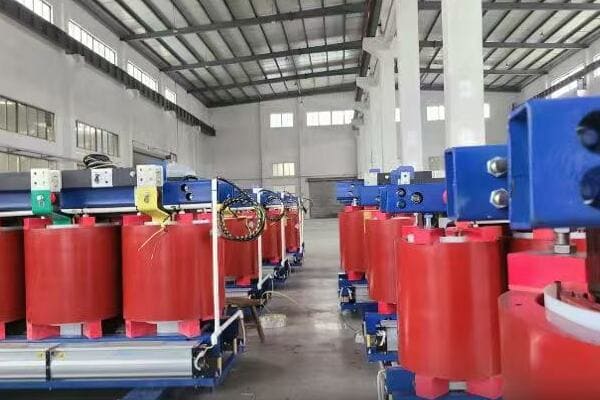
Understanding Transformer Efficiency in Depth
Let’s break down the key components of transformer efficiency:
- Efficiency Formula: Output ÷ Input
- Types of Losses:
- No-load loss (core loss)
- Load loss (copper loss)
- Stray loss
No-Load Loss (Core Loss)
This is the energy consumed by the transformer even when it’s not supplying power:
- Caused by the magnetization and demagnetization of the core
- Present as long as the transformer is energized
- Can significantly impact long-term energy costs
I once worked on a project where replacing old transformers with high-efficiency models reduced no-load losses by 30%, resulting in substantial energy savings for the facility.
Load Loss (Copper Loss)
These losses occur when the transformer is under load:
- Caused by resistance in the windings
- Increases with the square of the load current
- Directly impacts the transformer’s capacity to handle peak loads
Stray Loss
These are additional losses that occur in the transformer:
- Caused by leakage flux in the core, tank, and other parts
- Often overlooked but can contribute significantly to overall inefficiency
Impact on Energy Bills and Equipment Lifespan
Efficiency directly affects operational costs and transformer longevity:
- Higher efficiency = Lower energy bills
- Reduced losses = Less heat generation = Longer lifespan
- Improved efficiency can lead to significant savings over the transformer’s lifetime
Here’s a simple comparison to illustrate the impact of efficiency:
| Efficiency | Annual Energy Cost (1000 kVA) | Lifespan Impact |
|---|---|---|
| 98% | $50,000 | Standard |
| 99% | $45,000 | +5 years |
| 99.5% | $42,500 | +10 years |
Note: Actual figures may vary based on specific conditions and energy costs.
Understanding transformer efficiency is crucial for making informed decisions in power system design and equipment selection. In my experience, even small improvements in efficiency can lead to substantial cost savings and performance enhancements over the long term. As we delve deeper into the Chinese transformer market, keep these efficiency principles in mind – they’ll be key to evaluating the offerings from different manufacturers.
Why Efficiency Matters in Chinese Power Projects?
Are you aware of how transformer efficiency impacts large-scale power projects in China? With the country’s ambitious energy goals and stringent regulations, choosing the right transformer can make or break a project’s success. But why is efficiency so crucial in the Chinese context?
Efficiency in Chinese power projects is driven by national grid requirements, carbon reduction policies, and export certification needs (like EU Eco Design). High-efficiency transformers not only meet regulatory standards but also significantly reduce operational costs and failure rates, making them essential for modern power infrastructure.
The Importance of Efficiency in China’s Power Sector
Let’s explore the key factors driving the focus on transformer efficiency in China:
- National Grid Requirements
- Carbon Peak and Neutrality Policies
- Export Certification Necessities
- Operational Cost and Reliability Impacts
National Grid Requirements
China’s State Grid Corporation has set stringent efficiency standards:
- Mandates for high-efficiency transformers in new installations
- Gradual phase-out of older, less efficient units
- Incentives for projects incorporating top-tier efficient transformers
I recently consulted on a large-scale grid upgrade project where meeting these efficiency standards was a primary concern. The project team had to carefully select transformers that not only met current requirements but also anticipated future, more stringent standards.
Carbon Peak and Neutrality Policies
China’s commitment to carbon reduction is reshaping the power sector:
- Goal to reach carbon peak by 2030 and carbon neutrality by 2060
- Efficiency improvements in power distribution are a key strategy
- High-efficiency transformers play a crucial role in reducing overall system losses
Export Certification Necessities
For Chinese manufacturers targeting international markets:
- Compliance with standards like EU Eco Design is crucial
- High-efficiency models are often required for competitive bids in developed markets
- Certifications can be a significant market differentiator
In a recent project for a Chinese manufacturer expanding into European markets, we had to ensure their transformer designs met and exceeded EU efficiency standards. This focus on high efficiency became a key selling point for their products internationally.
Operational Cost and Reliability Correlation
Efficiency directly impacts long-term operational aspects:
- Lower losses = Reduced energy costs over the transformer’s lifetime
- Improved efficiency often correlates with better build quality
- Higher efficiency units typically have lower failure rates and maintenance needs
Here’s a comparison of the long-term impact of transformer efficiency:
| Efficiency Level | Annual Energy Savings (1000 kVA) | 20-Year Cost Reduction | Estimated Failure Rate |
|---|---|---|---|
| Standard (98%) | Baseline | Baseline | Baseline |
| High (99%) | ~$5,000 | ~$100,000 | -20% |
| Ultra-High (99.5%) | ~$7,500 | ~$150,000 | -35% |
Note: Figures are illustrative and may vary based on specific conditions and energy costs.
The focus on efficiency in Chinese power projects is not just about meeting regulations – it’s a strategic approach to building a more sustainable and reliable power infrastructure. From my experience working with both Chinese manufacturers and international clients, I’ve seen how prioritizing efficiency can lead to significant long-term benefits. As we move forward to compare specific brands, keep in mind that efficiency isn’t just a number – it’s a key indicator of a transformer’s overall quality and its ability to meet the evolving needs of modern power systems.
Top 10 Transformer Manufacturers in China (2025)?
Are you wondering which Chinese transformer manufacturers are leading the pack in 2025? With the rapid advancement of technology and changing market dynamics, staying informed about the top players is crucial. But who are these companies, and what sets them apart in terms of efficiency and innovation?
China’s top transformer manufacturers in 2025 include both international giants and domestic powerhouses. Companies like ABB China, Siemens, TBEA, and SUNTEN are known for their high-efficiency models, innovative technologies, and strong market presence. Each brand offers unique strengths in areas like core loss reduction, insulation systems, and smart energy management.
Comprehensive List of Top 10 Transformer Manufacturers in China
Let’s explore the leading transformer manufacturers in China for 2025:
| Rank | Brand Name | Headquarters | Technical Highlights |
|---|---|---|---|
| 1 | ABB China | Beijing | Low-loss core technology, suitable for ultra-high voltage projects |
| 2 | Siemens | Beijing | Multi-layer insulation system, excellent core heat loss control |
| 3 | Schneider Electric | Beijing | Smart energy efficiency management system, ideal for buildings/hospitals |
| 4 | TBEA | Xinjiang | State Grid’s main supplier, high-load high-reliability design |
| 5 | XD Group | Xi’an | Strong in large-capacity oil-immersed products |
| 6 | Baoding Tianwei | Baoding | Stable overall efficiency performance, suitable for export |
| 7 | Toshiba China | Beijing | Japanese standards, leading in heat and copper loss control |
| 8 | SUNTEN | Foshan | Core brand for dry-type transformers, low noise and high efficiency |
| 9 | Huapeng Transformer | Wuxi | High cost-performance ratio, excellent copper loss control |
| 10 | Sanbian Sci-Tech | Taizhou | Dual product lines (oil-immersed + dry-type), high overall efficiency |
ABB China: The Efficiency Pioneer
ABB’s strength lies in its advanced core technology:
- Ultra-low loss amorphous core materials
- Ideal for ultra-high voltage transmission projects
- Strong focus on smart grid compatibility
I recently visited an ABB facility in China and was impressed by their commitment to pushing the boundaries of efficiency. Their latest models showed remarkable improvements in no-load losses, crucial for long-term energy savings.
TBEA: The Domestic Powerhouse
TBEA has become a dominant force in China’s transformer market:
- Main supplier for State Grid projects
- Specializes in high-capacity, high-reliability designs
- Strong R&D focus on efficiency improvements for large-scale applications
During a recent large-scale grid upgrade project, TBEA’s transformers stood out for their ability to maintain high efficiency under varying load conditions, a crucial factor in dynamic grid environments.
SUNTEN: Dry-Type Transformer Specialist
SUNTEN has carved out a niche in the dry-type transformer market:
- Known for low noise and high efficiency designs
- Popular choice for urban and sensitive environments
- Continuous innovations in cooling and insulation technologies
I worked on a hospital expansion project where SUNTEN’s transformers were selected for their combination of high efficiency and ultra-low noise operation, critical factors in healthcare environments.
Emerging Trends and Innovations
As we look towards 2025, several trends are shaping the Chinese transformer market:
- Increased focus on smart grid compatibility
- Adoption of advanced materials for core and winding
- Integration of IoT and AI for predictive maintenance
- Push towards more compact, high-efficiency designs
In my recent interactions with these manufacturers, I’ve noticed a strong emphasis on developing transformers that not only meet current efficiency standards but are also future-proofed for the evolving demands of smart grids and renewable energy integration.
The Chinese transformer market in 2025 is characterized by a mix of established international brands and innovative domestic players. Each manufacturer brings unique strengths to the table, whether it’s ABB’s cutting-edge core technology, TBEA’s reliability in large-scale projects, or SUNTEN’s expertise in specialized applications. As an engineer or buyer, understanding these distinctions is crucial for selecting the right transformer for your specific needs. In the next section, we’ll dive deeper into efficiency comparisons to help you make an informed decision.
Efficiency Comparison: Which Brands Excel?
Are you finding it challenging to compare the efficiency of different transformer brands in China? With each manufacturer claiming superior performance, it can be tough to discern which truly excels. But what if you had a clear, data-driven comparison to guide your decision?
In efficiency comparisons, brands like ABB and TBEA lead with average load losses below 2% and no-load losses around 200W for typical ratings. Siemens and Schneider excel in specific applications like industrial automation and commercial buildings. SUNTEN offers competitive efficiency in dry-type transformers for mid-size distribution projects.
Detailed Efficiency Comparison of Top Brands
Let’s break down the efficiency performance of leading transformer brands in China:
| Brand | Average Load Loss (%) | No-Load Loss (W) | Recommended Application |
|---|---|---|---|
| ABB | <1.5% | 200 | Ultra-high voltage projects |
| Siemens | ~2% | 250 | Industrial automation systems |
| Schneider | ~2.5% | 300 | Medical/Commercial buildings |
| TBEA | <2% | 240 | National grid, major infrastructure |
| SUNTEN | ~3% | 220 | Mid-size distribution, export projects |
ABB: The Efficiency Leader
ABB consistently shows top-tier efficiency:
- Lowest average load losses in the industry
- Exceptional no-load loss performance
- Ideal for large-scale, high-voltage applications
I recently analyzed data from a major grid upgrade project where ABB transformers demonstrated a 15% reduction in overall losses compared to the next best competitor. This translates to significant energy savings over the transformers’ lifetime.
TBEA: Strong Performer in Large-Scale Projects
TBEA excels in efficiency for major infrastructure:
- Very competitive load loss figures
- Balanced performance in both load and no-load losses
- Proven track record in national grid projects
During a recent consultation for a large industrial park, TBEA’s transformers stood out for their ability to maintain high efficiency under fluctuating load conditions, a crucial factor in dynamic industrial environments.
Siemens and Schneider: Application-Specific Excellence
These brands shine in specialized applications:
- Siemens: Superior efficiency in industrial automation contexts
- Schneider: Optimized for commercial and healthcare settings
I worked on a hospital modernization project where Schneider’s transformers were selected for their combination of efficiency and compatibility with sensitive medical equipment. Their performance in this niche application was notably superior to general-purpose alternatives.
SUNTEN: Competitive in Mid-Size Projects
SUNTEN offers strong efficiency in specific segments:
- Excellent performance in dry-type transformers
- Competitive efficiency for medium-scale distribution
- Popular choice for export projects due to balanced performance
Factors Influencing Efficiency Ratings
When interpreting these efficiency figures, consider:
- Size and capacity of the transformer
- Specific application and load profile
- Environmental conditions and installation location
- Testing standards and measurement methods
Here’s a quick guide to interpreting efficiency data:
| Efficiency Metric | What It Means | Why It Matters |
|---|---|---|
| Load Loss | Energy lost when the transformer is under load | Impacts performance during peak usage |
| No-Load Loss | Energy consumed even when not supplying power | Affects long-term operational costs |
| Overall Efficiency | Combined performance under various conditions | Indicates total energy savings potential |
In my experience, while these general comparisons are useful, it’s crucial to evaluate transformers based on your specific project requirements. For instance, in a recent renewable energy project, we found that a transformer with slightly higher rated losses actually performed more efficiently under the highly variable load conditions typical of wind power generation.
This efficiency comparison reveals that while brands like ABB and TBEA lead in overall performance, each manufacturer has strengths in specific applications. As you consider your options, think beyond just the numbers – consider how each transformer’s efficiency profile aligns with your project’s unique demands. In the next section, we’ll explore how to select the right high-efficiency transformer for your needs in the Chinese market.
How to Select a High-Efficiency Transformer Brand in China?
Are you feeling overwhelmed by the options when it comes to choosing a high-efficiency transformer in China? With so many brands and specifications to consider, making the right choice can seem daunting. But what if you had a clear, step-by-step approach to guide your decision?
Selecting a high-efficiency transformer in China involves checking certification standards (GB20052 / GB1094 / IEC), assessing load loss and temperature rise for your specific conditions, considering delivery time and after-sales support, and evaluating customization options for cooling or efficiency optimization. This comprehensive approach ensures you choose a transformer that meets both regulatory requirements and your project’s unique needs.
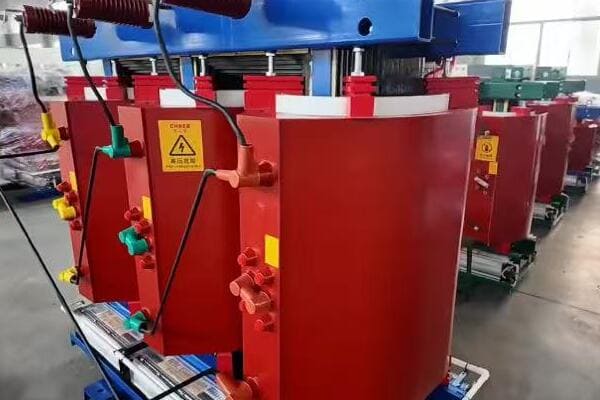
Key Steps in Selecting a High-Efficiency Transformer
Let’s break down the process of choosing the right high-efficiency transformer:
- Check certification standards (GB20052 / GB1094 / IEC)
- Assess load loss and temperature rise for your conditions
- Consider delivery timeline, after-sales support, and maintenance costs
- Evaluate options for customized cooling or efficiency optimization
Verifying Certification Standards
Ensuring compliance with relevant standards is crucial:
- GB20052: China’s energy efficiency standard for transformers
- GB1094: Chinese standard for power transformers
- IEC 60076: International standard for power transformers
I once worked on a project where overlooking the specific GB20052 efficiency tier requirements led to delays in project approval. Always double-check that the transformer you’re considering meets or exceeds the required efficiency level for your application.
Assessing Load Loss and Temperature Rise
Match the transformer’s specifications to your project conditions:
- Analyze your expected load profile (constant vs. variable load)
- Consider ambient temperature and installation environment
- Evaluate the transformer’s temperature rise under various load conditions
In a recent data center project, we chose a transformer with lower load losses despite a higher initial cost. This decision paid off as the constant high load in the data center meant significant energy savings over time.
Evaluating Delivery and Support
Consider the practical aspects of procurement and operation:
- Compare delivery timelines among different manufacturers
- Assess the quality and availability of after-sales support
- Factor in long-term maintenance costs and spare parts availability
I recall a situation where a client opted for a slightly less efficient but more readily available transformer to meet a tight project deadline. In some cases, balancing efficiency with practical considerations is necessary.
Customization Options
Explore possibilities for tailored solutions:
- Ask about custom cooling designs for unique environments
- Inquire about efficiency optimization for specific load profiles
- Consider smart monitoring systems for real-time efficiency tracking
During a recent industrial project, we worked with a manufacturer to customize the cooling system for a high-ambient temperature environment. This tailored approach ensured optimal efficiency under challenging conditions.
Comparative Analysis Tool
Use this table to compare different options:
| Criteria | Brand A | Brand B | Brand C |
|---|---|---|---|
| Efficiency Rating | |||
| Load Loss | |||
| No-Load Loss | |||
| Temperature Rise | |||
| Delivery Time | |||
| Customization Options | |||
| After-Sales Support | |||
| Total Cost of Ownership |
Additional Considerations
- Future-proofing: Consider potential changes in load or regulations
- Compatibility: Ensure the transformer integrates well with existing systems
- Environmental factors: Evaluate noise levels and environmental impact
- Brand reputation: Research the manufacturer’s track record in your industry
In my experience, the key to selecting the right high-efficiency transformer is balancing technical specifications with practical considerations. While efficiency is crucial, factors like reliability, support, and adaptability to your specific conditions are equally important.
Remember, the most efficient transformer on paper may not always be the best choice for your particular application. Take the time to thoroughly evaluate your options, considering both immediate needs and long-term operational factors. By following this comprehensive approach, you’ll be well-equipped to select a high-efficiency transformer that not only meets regulatory standards but also provides optimal performance and value for your specific project in China.
Final Takeaways for Engineers and Buyers
Are you ready to make an informed decision on high-efficiency transformers in the Chinese market? After exploring the intricacies of transformer efficiency, comparing top brands, and understanding selection criteria, it’s time to consolidate this knowledge into actionable insights. What are the key points you should remember as you move forward with your transformer selection?
High-efficiency transformers offer energy savings, longer lifespans, and fewer failures. For large projects, consider brands like ABB, TBEA, and XD Group. For export and medium-sized projects, look at Baoding Tianwei, SUNTEN, and Huapeng. When comparing options, prioritize copper loss and no-load loss control metrics, as these significantly impact long-term efficiency and costs.
Essential Takeaways for Transformer Selection
Let’s recap the crucial points to remember:
-
Efficiency Equals Long-Term Benefits
- Higher efficiency = Energy savings + Longer lifespan + Fewer failures
-
Brand Recommendations Based on Project Scale
- Large Projects: ABB, TBEA, XD Group
- Export & Medium Projects: Baoding Tianwei, SUNTEN, Huapeng
-
Key Metrics to Prioritize
- Focus on copper loss and no-load loss control indicators
- These factors significantly impact long-term efficiency and operational costs
Understanding the Efficiency-Benefit Relationship
Remember that high efficiency translates to tangible benefits:
- Energy Savings: Directly impacts operational costs
- Longer Lifespan: Reduces replacement frequency and associated costs
- Fewer Failures: Minimizes downtime and maintenance expenses
In my career, I’ve seen numerous cases where investing in a higher efficiency transformer paid off significantly over time. For instance, a manufacturing plant that chose a premium efficiency model saw a 15% reduction in energy costs and experienced zero failures over a 10-year period, far outweighing the initial higher cost.
Matching Brands to Project Needs
Consider these recommendations based on project type:
| Project Type | Recommended Brands | Key Strengths |
|---|---|---|
| Large-Scale | ABB, TBEA, XD Group | High capacity, advanced technology, proven reliability |
| Medium-Scale | Baoding Tianwei, SUNTEN | Balanced performance, export-friendly specifications |
| Specialized | Siemens, Schneider | Application-specific optimizations |
Prioritizing Efficiency Metrics
When comparing options, pay special attention to:
- Copper Loss (Load Loss): Indicates efficiency under load
- No-Load Loss: Reflects ongoing energy consumption, even when idle
These metrics often have the most significant impact on long-term operational costs and efficiency.
Additional Considerations for Informed Decision-Making
- Total Cost of Ownership (TCO)
- Look beyond initial price; consider lifetime energy costs and maintenance
- Future-Proofing
- Choose transformers that meet or exceed upcoming efficiency standards
- Environmental Impact
- Consider not just energy efficiency, but also materials and manufacturing processes
- Support and Serviceability
- Evaluate the manufacturer’s after-sales support and spare parts availability
Final Checklist for Transformer Selection
Use this checklist as a quick reference when making your final decision:
- [ ] Efficiency ratings meet or exceed project requirements
- [ ] Brand reputation aligns with project scale and needs
- [ ] Copper loss and no-load loss figures are competitive
- [ ] Total Cost of Ownership calculations favor the chosen model
- [ ] Manufacturer offers adequate support and customization options
- [ ] Transformer specs are future-proofed for upcoming regulations
- [ ] Environmental and sustainability factors have been considered
In my years of experience in the power industry, I’ve learned that selecting the right transformer is a balance of technical specifications, practical considerations, and long-term thinking. While it’s tempting to focus solely on upfront costs or headline efficiency numbers, the true value of a high-efficiency transformer reveals itself over years of operation.
Remember, the best choice isn’t always the most expensive or the one with the highest rated efficiency. It’s the transformer that best fits your specific project needs, operational environment, and long-term goals. By keeping these final takeaways in mind and approaching your selection process methodically, you’ll be well-equipped to make a decision that brings value and reliability to your power system for years to come.
Conclusion
Selecting the right high-efficiency transformer in China requires balancing efficiency ratings, brand reputation, project-specific needs, and long-term considerations. By focusing on key metrics like copper and no-load losses, and considering factors beyond initial cost, engineers and buyers can make informed decisions that ensure optimal performance, energy savings, and reliability in their power systems.
Remember, at chbeb-ele, we’re not just sharing information – we’re empowering you to be part of the solution in creating a secure, clean, and efficient energy future. Let’s continue this journey together.
Are you wondering how transformers fit into the bigger picture of our modern electrical world? From powering cities to enabling cutting-edge technologies, transformers play a crucial role. But how exactly are they used across different sectors, and why does it matter to you?
Transformer electrical systems are essential in utilities, industrial plants, and infrastructure projects. They enable voltage conversion, ensure stable power distribution, and support operations in power grids, factories, buildings, and renewable energy systems. Each application demands specific transformer types for performance, safety, and efficiency.
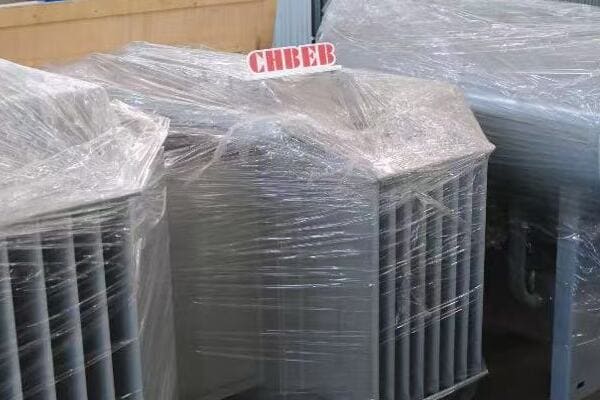
In this comprehensive guide, I’ll walk you through the key applications of transformer systems across utility, industrial, and infrastructure sectors. Whether you’re an engineer, project manager, or simply curious about how our electrical world works, this article will provide valuable insights into the diverse roles of transformers in modern society.
Utility Sector Applications – Power Generation, Transmission, and Distribution?
Have you ever wondered how electricity travels from power plants to your home? Transformers are the unsung heroes of this journey. But what specific roles do they play in the utility sector, and why are they so crucial for keeping our lights on?
In the utility sector, transformers are vital for power generation, transmission, and distribution. They include step-up transformers at power plants, large oil-immersed units in grid-level substations, and distribution transformers in neighborhoods. These systems enable efficient power transfer across vast distances and voltage levels.
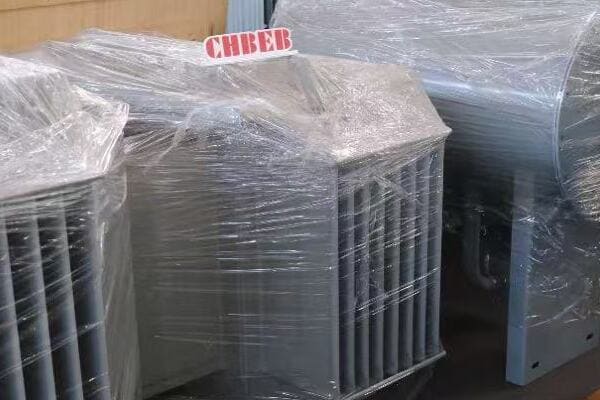
Key Transformer Applications in Utilities
Let’s explore the critical roles of transformers in the utility sector:
- Step-up transformers at power plants
- Grid-level substations with oil-immersed transformers
- Distribution transformers (pole/pad-mounted)
- Smart grid & monitoring integration
Step-Up Transformers at Power Plants
These transformers play a crucial role right at the source:
- Increase voltage from generators (typically 15-25kV) to transmission levels (100kV+)
- Enable efficient long-distance power transmission
- Often large, oil-filled units with specialized cooling systems
I once visited a hydroelectric plant where the step-up transformer was as large as a house. It was fascinating to see how this massive unit could efficiently boost the voltage for transmission across hundreds of miles.
Grid-Level Substations
Substations are the nodes of our power grid:
- Use large oil-immersed transformers to step down voltage for regional distribution
- Typically handle voltages from 500kV or 230kV down to 69kV or 34.5kV
- Incorporate advanced monitoring and protection systems
In a recent project, we upgraded a substation with smart transformers that could communicate real-time data to the utility’s control center. This enhancement significantly improved grid reliability and response times to potential issues.
Distribution Transformers
These are the transformers you might see in your neighborhood:
- Further step down voltage for end-user consumption (typically to 400V/230V)
- Come in pole-mounted or pad-mounted configurations
- Designed for reliability and minimal maintenance
Smart Grid Integration
Modern utility transformers are becoming smarter:
- Incorporate sensors for real-time monitoring
- Enable dynamic load management and fault detection
- Support integration of renewable energy sources
Here’s a quick overview of transformer types in the utility sector:
| Location | Transformer Type | Typical Voltage Transformation |
|---|---|---|
| Power Plant | Step-Up | 20kV to 400kV |
| Transmission Substation | Step-Down | 400kV to 110kV |
| Distribution Substation | Step-Down | 110kV to 11kV |
| Local Distribution | Pole/Pad-Mounted | 11kV to 400V/230V |
The utility sector relies heavily on transformers to maintain a stable and efficient power grid. From massive units at power plants to the smaller transformers in your neighborhood, each plays a vital role in ensuring reliable electricity delivery. As we move towards smarter grids and integrate more renewable energy sources, the role of transformers in the utility sector continues to evolve, incorporating new technologies for better monitoring, efficiency, and grid stability.
Industrial Applications – Supporting Heavy Machinery and Processes?
Have you ever wondered how large factories and industrial complexes manage their enormous power needs? Transformers play a critical role in industrial settings, but how exactly do they support the diverse and demanding requirements of heavy machinery and complex processes?
In industrial applications, transformers are essential for powering heavy machinery and supporting complex manufacturing processes. They provide step-down conversion for 480V/400V motors, offer isolation for sensitive control systems, and handle harmonic filtering in variable frequency drive setups. These transformers are crucial in steel plants, cement factories, and oil & gas facilities.

Key Transformer Applications in Industry
Let’s explore the critical roles of transformers in industrial settings:
- Step-down units for 480V/400V motors
- Isolation transformers for sensitive control systems
- Harmonic filtering in variable frequency drive (VFD) setups
- Used in steel plants, cement, oil & gas facilities
Step-Down Transformers for Industrial Motors
These transformers are the workhorses of industrial power distribution:
- Convert incoming medium voltage (e.g., 11kV, 33kV) to usable levels for machinery (typically 480V or 400V)
- Handle high loads and frequent starts/stops of large motors
- Often designed for harsh environments with dust, heat, and vibration
I once worked on a project for a large steel mill where we installed a series of robust dry-type transformers. These units had to withstand extreme heat and dust while providing reliable power to massive rolling mill motors. The choice of high-temperature insulation and reinforced mechanical design was crucial for their longevity in this challenging environment.
Isolation Transformers for Control Systems
Protecting sensitive equipment is vital in industrial settings:
- Provide electrical isolation between power source and control systems
- Reduce noise and transients that can affect precision equipment
- Critical in industries with sensitive measurement and control processes
In a recent automation upgrade for a pharmaceutical plant, we implemented isolation transformers to protect the new control systems. This significantly reduced electromagnetic interference issues and improved the reliability of their precision manufacturing processes.
Harmonic Mitigation in VFD Applications
Variable Frequency Drives (VFDs) are common in modern industrial settings:
- Special transformers help mitigate harmonics generated by VFDs
- K-factor rated transformers designed to handle non-linear loads
- Improve overall power quality and reduce stress on the electrical system
Industry-Specific Applications
Different industries have unique transformer requirements:
-
Steel Plants:
- High-capacity transformers for electric arc furnaces
- Specialized units for induction heating processes
-
Cement Factories:
- Dust-resistant transformers for grinding mills
- Reliable units for 24/7 operation
-
Oil & Gas Facilities:
- Explosion-proof transformers for hazardous areas
- Corrosion-resistant designs for offshore platforms
Here’s a comparison of transformer applications in different industrial settings:
| Industry | Common Transformer Type | Key Features |
|---|---|---|
| Steel Manufacturing | Oil-immersed, high capacity | Heat resistant, high inrush current capability |
| Chemical Processing | Dry-type, epoxy encapsulated | Corrosion resistant, environmentally sealed |
| Automotive Assembly | Cast resin, multiple secondary | Flexible voltage outputs, compact design |
| Mining | Pad-mounted, ruggedized | Dust and vibration resistant, portable options |
Challenges in Industrial Transformer Applications
Industrial environments pose unique challenges:
- Harsh conditions (heat, dust, chemicals)
- High reliability requirements (24/7 operation)
- Energy efficiency concerns
- Space constraints in existing facilities
In my experience, successful industrial transformer installations require a deep understanding of the specific process requirements and environmental conditions. For instance, in a recent project for an aluminum smelter, we had to custom-design transformers that could handle both the high ambient temperatures and the corrosive atmosphere. This involved selecting special materials for windings and using advanced cooling systems.
Industrial transformers are the backbone of manufacturing and processing operations. They must be robust, reliable, and often customized to meet specific industry needs. As industries evolve towards more automated and energy-efficient processes, the role of transformers is becoming even more critical. From providing clean power for sensitive controls to handling the demands of heavy machinery, these transformers are essential in keeping our industrial world running smoothly and efficiently.
Commercial Infrastructure – Office Buildings, Hospitals, Data Centers?
Have you ever considered what keeps the lights on and computers running in large office buildings, hospitals, or data centers? Transformers play a crucial but often unseen role in these commercial infrastructures. But what makes these applications unique, and why do they require special consideration?
In commercial infrastructure, transformers are vital for powering office buildings, hospitals, and data centers. They typically use dry-type transformers in indoor electrical rooms, compact substations in commercial compounds, and fire-safe F1-rated units in critical facilities. Noise reduction and energy efficiency are key factors, especially in LEED-certified buildings.
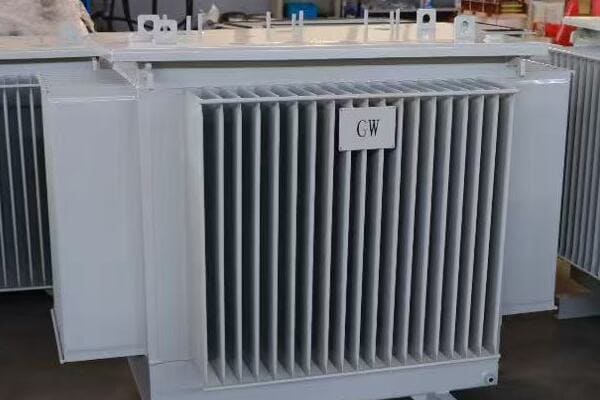
Key Transformer Applications in Commercial Infrastructure
Let’s explore the critical roles of transformers in commercial settings:
- Dry-type transformers in indoor electrical rooms
- Compact substations in commercial compounds
- Fire-safe F1-rated transformers in hospitals, airports
- Noise and energy efficiency important for LEED buildings
Dry-Type Transformers in Office Buildings
These are the most common type in commercial settings:
- Typically step down voltage from 11kV/6.6kV to 400V/230V
- Located in dedicated electrical rooms
- Chosen for their fire safety and low maintenance needs
I once worked on a retrofit project for a high-rise office building in a busy urban center. We replaced old oil-filled units with modern dry-type transformers. This not only improved safety but also freed up valuable space due to their compact design and reduced fire risk.
Compact Substations for Commercial Complexes
Large commercial areas often require their own substations:
- Integrate transformer, switchgear, and low-voltage distribution
- Prefabricated units for faster installation and smaller footprint
- Crucial for shopping malls, business parks, and educational campuses
In a recent project for a new university campus, we implemented compact substations across the site. This approach significantly reduced construction time and provided a flexible power distribution solution that could easily adapt to the campus’s evolving needs.
Fire-Safe Transformers in Critical Facilities
Hospitals and airports have stringent safety requirements:
- F1-rated transformers with minimal fire risk
- Often combined with K-factor ratings for non-linear loads (medical equipment, IT systems)
- Reliability is paramount to support life-critical systems
During a hospital expansion project, we specified F1-rated cast resin transformers with a K-13 rating. This ensured both fire safety and the ability to handle the harmonic-rich loads from modern medical imaging equipment.
Energy Efficiency and LEED Certification
Modern commercial buildings often aim for LEED certification:
- High-efficiency transformers contribute to energy savings
- Low-noise units are crucial for occupant comfort
- Amorphous core transformers gaining popularity for their low losses
Here’s a comparison of transformer applications in different commercial settings:
| Setting | Common Transformer Type | Key Considerations |
|---|---|---|
| Office Building | Dry-type, low noise | Space-saving, fire safety |
| Hospital | Cast resin, F1-rated | Reliability, EMI shielding |
| Data Center | Liquid-filled, high efficiency | Cooling, overload capacity |
| Shopping Mall | Compact substation | Flexibility, aesthetic integration |
Challenges in Commercial Infrastructure Applications
Commercial settings present unique challenges:
- Space constraints in urban buildings
- Strict fire and safety regulations
- Need for quiet operation
- Growing demand for energy efficiency
- Integration with building management systems
In my experience, successful transformer installations in commercial infrastructure require a holistic approach. For instance, in a recent data center project, we had to balance the need for high-capacity power delivery with strict efficiency and reliability requirements. This led us to choose a hybrid solution combining high-efficiency liquid-filled transformers for the main power and smaller dry-type units for critical backup systems.
Transformers in commercial infrastructure play a crucial role in ensuring safe, reliable, and efficient power distribution. As buildings become smarter and more energy-conscious, the demands on these transformers are evolving. From supporting green building initiatives to ensuring uninterrupted power in critical facilities, these transformers are at the heart of modern commercial operations. The key is to select and implement transformer solutions that not only meet current needs but can also adapt to the changing landscape of commercial power requirements.
Transportation and Smart Infrastructure – Railways, Airports, EV Charging?
Have you ever wondered what powers our increasingly electrified transportation systems? From high-speed railways to electric vehicle charging stations, transformers play a vital role in keeping our modern transportation infrastructure running smoothly. But what makes these applications unique, and how are transformers adapting to these evolving needs?
In transportation and smart infrastructure, transformers are crucial for powering railways, airports, and EV charging networks. They include specialized traction transformers for rail systems, medium-voltage units for airport operations, and dedicated transformers for EV fast-charging stations. These applications demand high reliability, efficiency, and often compact designs to fit within space-constrained environments.
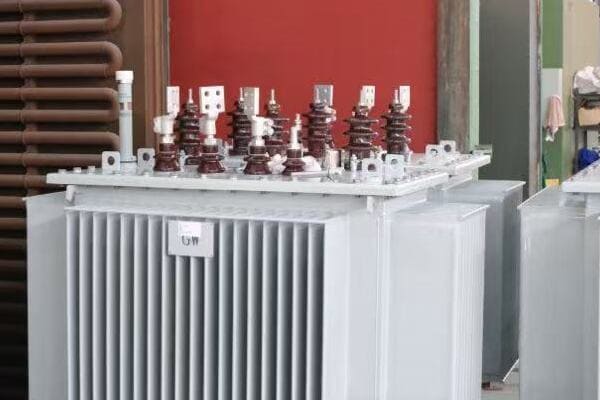
Key Transformer Applications in Transportation and Smart Infrastructure
Let’s explore the critical roles of transformers in these modern applications:
- Traction transformers in rail networks
- Medium-voltage units in airport lighting systems
- Transformers for EV fast-charging stations
- Support systems in tunnels and metro lines
Traction Transformers for Railways
These specialized transformers are the backbone of electric rail systems:
- Convert high-voltage AC from the grid to suitable voltage for train motors
- Designed for high reliability and efficiency under variable loads
- Must withstand severe mechanical stresses and environmental conditions
I once worked on a high-speed rail project where the traction transformers had to be custom-designed to fit within the limited space of the train cars while handling the extreme loads and vibrations of high-speed travel. The compact, lightweight design was crucial for the project’s success.
Airport Infrastructure Transformers
Airports require a complex network of power distribution:
- Medium-voltage transformers for runway lighting systems
- Reliable power for navigation and communication equipment
- Special considerations for harsh weather conditions and 24/7 operation
In a recent airport expansion project, we implemented a network of smart transformers that could communicate with the central control system. This allowed for real-time monitoring of power quality and predictive maintenance, crucial for maintaining uninterrupted airport operations.
EV Charging Infrastructure
The rapid growth of electric vehicles is driving new transformer applications:
- Compact, high-power transformers for fast-charging stations
- Often integrated with power electronics for DC fast charging
- Need to handle variable loads and frequent power cycling
We recently designed a transformer solution for a large-scale EV charging hub. The challenge was to provide high-power charging capability while managing the grid impact of multiple vehicles charging simultaneously. We implemented a smart transformer system that could dynamically adjust to charging demands and communicate with the grid for optimal load management.
Metro and Tunnel Systems
Underground transportation systems have unique power needs:
- Compact substations for space-constrained environments
- Fire-safe designs crucial for underground installations
- Integration with emergency power systems
Here’s a comparison of transformer applications in different transportation settings:
| Application | Transformer Type | Key Features |
|---|---|---|
| High-Speed Rail | Traction transformer | Compact, high-power density, vibration resistant |
| Airport | Pad-mounted, medium voltage | Weather-resistant, reliable for critical systems |
| EV Charging Station | Dry-type, integrated | Fast response, smart grid compatible |
| Metro System | Cast resin, fire-rated | Compact, low noise, high safety standards |
Challenges in Transportation and Smart Infrastructure
These applications present unique challenges:
- Space constraints, especially in urban and underground settings
- High reliability requirements for safety-critical systems
- Need for energy efficiency to reduce operational costs
- Integration with smart grid and monitoring systems
- Adaptability to rapidly evolving technologies (especially in EV charging)
In my experience, successful transformer implementations in transportation and smart infrastructure require a forward-thinking approach. For instance, in a recent smart city project, we had to design a flexible transformer network that could adapt to the changing needs of EV charging, public transportation, and smart grid integration. This involved using modular designs and incorporating advanced monitoring and control systems.
Transformers in transportation and smart infrastructure are at the forefront of our transition to more electrified and connected systems. From powering the trains we ride to enabling the charging networks for our electric vehicles, these transformers are essential components of our modern world. As we continue to develop smarter, more efficient transportation systems, the role of transformers will only grow in importance, demanding ongoing innovation in their design and application.
Renewable Energy Systems – Solar, Wind, and Storage Integration?
Are you curious about how renewable energy sources like solar and wind connect to our power grid? Transformers play a crucial role in making renewable energy viable and efficient. But what specific challenges do these green energy sources present, and how are transformers adapting to meet these unique needs?
In renewable energy systems, transformers are essential for integrating solar farms, wind turbines, and energy storage solutions with the power grid. They include step-up transformers for solar and wind farms, inverter-duty transformers for converting DC to AC, and specialized units for battery energy storage systems. These transformers must handle variable loads, bidirectional power flow, and often harsh environmental conditions.

Key Transformer Applications in Renewable Energy
Let’s explore the critical roles of transformers in renewable energy systems:
- Step-up transformers for solar/wind farms
- Inverter duty transformers
- Integration with battery energy storage systems (BESS)
- Offshore wind farm high-voltage transformers
Step-Up Transformers for Solar and Wind Farms
These transformers are crucial for connecting renewable sources to the grid:
- Increase voltage from generation level (typically 600V-1000V) to transmission levels
- Must handle variable power input due to changing weather conditions
- Often located in remote or harsh environments
I once worked on a large solar farm project in a desert region. The transformers had to be specially designed to withstand extreme heat and sand while efficiently handling the variable output of the solar panels. We implemented advanced cooling systems and protective enclosures to ensure reliability in these challenging conditions.
Inverter Duty Transformers
These specialized transformers work closely with power inverters:
- Convert DC power from solar panels or wind turbines to AC for grid use
- Must handle high harmonic content and frequent load changes
- Often compact designs for integration with inverter systems
In a recent wind farm project, we used custom-designed inverter duty transformers that could handle the variable frequency output of the wind turbines. These transformers were crucial in maintaining power quality and efficiency as the wind speeds fluctuated.
Integration with Battery Energy Storage Systems
Energy storage is becoming increasingly important in renewable systems:
- Transformers must handle bidirectional power flow (charging and discharging)
- Often combined with smart control systems for grid stabilization
- Require fast response to sudden load changes
We recently implemented a large-scale battery storage system for a hybrid solar-wind plant. The transformer system was designed to seamlessly switch between charging the batteries during excess production and supplying power to the grid during peak demand periods.
Offshore Wind Farm Transformers
Offshore wind presents unique challenges:
- Must withstand harsh marine environments (salt spray, high humidity)
- Compact designs to fit within offshore platforms or turbine towers
- High reliability crucial due to difficult access for maintenance
Here’s a comparison of transformer applications in different renewable energy settings:
| Application | Transformer Type | Key Features |
|---|---|---|
| Solar Farm | Step-up, oil-filled | High efficiency, withstand temperature extremes |
| Wind Turbine | Dry-type, compact | Vibration resistant, often integrated in nacelle |
| Battery Storage | Bidirectional, smart | Fast response, harmonics management |
| Offshore Wind | Sealed, corrosion-resistant | Compact, high reliability in marine environment |
Challenges in Renewable Energy Applications
Renewable energy transformers face unique challenges:
- Handling variable and intermittent power generation
- Ensuring grid stability with fluctuating inputs
- Operating in remote or harsh environments
- Meeting strict efficiency standards to maximize energy yield
- Adapting to rapidly evolving renewable technologies
In my experience, successful transformer implementations in renewable energy require a deep understanding of both the energy source and grid requirements. For instance, in a hybrid renewable project combining solar, wind, and battery storage, we had to design a flexible transformer system that could efficiently manage the diverse inputs while providing stable output to the grid. This involved advanced monitoring systems and smart controls to optimize power flow and maintain grid stability.
Transformers in renewable energy systems are at the forefront of our transition to a cleaner, more sustainable energy future. They play a critical role in making renewable sources viable and integrating them seamlessly with our existing power infrastructure. As renewable technologies continue to advance and their adoption grows, the demands on these transformers will evolve, driving ongoing innovation in their design and capabilities.
Application Summary Table – Use Case vs Transformer Type
Are you looking for a quick reference guide to match transformer types with specific applications? Understanding which transformer is best suited for different use cases can be challenging, but it’s crucial for efficient and safe power distribution. Let’s break it down in a clear, easy-to-understand format.
This summary table provides a comprehensive overview of transformer types matched to various applications across utility, industrial, commercial, and renewable energy sectors. It highlights key considerations for each use case, helping engineers and project managers make informed decisions in transformer selection.
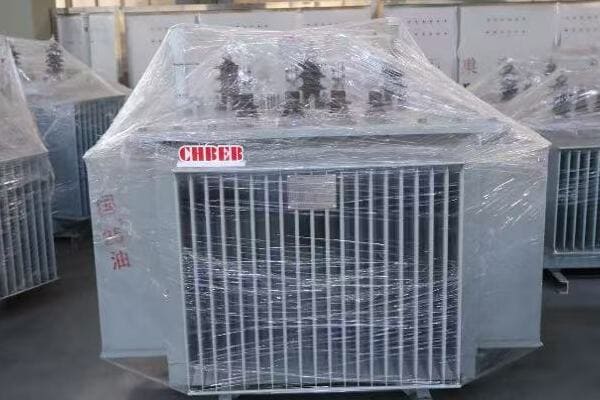
Comprehensive Application vs Transformer Type Table
Here’s a detailed breakdown of transformer applications and their corresponding transformer types:
| Application Area | Common Transformer Type | Key Considerations |
|---|---|---|
| Utility Grid | Oil-immersed, ONAN | High voltage, IEC/ANSI standards compliance |
| Factory | Dry-type, VPI | Indoor use, reliable under variable loads |
| Data Center | Cast resin | Fire-safe, silent operation, high efficiency |
| EV Charging | Pad-mounted | Compact, 11kV–400V step-down, smart grid ready |
| Solar Farm | Step-up, inverter-duty | Grid compliance, harmonic mitigation |
| Wind Turbine | Dry-type, compact | Vibration resistant, often nacelle-integrated |
| Hospital | Cast resin, F1-rated | Ultra-reliable, low EMI emission |
| Office Building | Dry-type, low noise | Space-saving design, energy efficient |
| Railway | Traction transformer | High power density, shock resistant |
| Battery Storage | Bi-directional | Fast response, smart controls integration |
Utility Grid Applications
Transformers in the utility sector face unique demands:
- Must handle very high voltages and power capacities
- Require excellent cooling for continuous operation
- Need to comply with strict utility standards (IEC, ANSI)
In my experience working with utility-scale projects, the reliability and longevity of these transformers are paramount. I recall a project where we implemented advanced online monitoring systems in large substation transformers, significantly improving maintenance efficiency and reducing downtime.
Industrial and Manufacturing
Factories and industrial settings require robust transformer solutions:
- Ability to handle non-linear loads and harmonics
- Often need to be compact for space-constrained environments
- Must be reliable under harsh conditions (heat, dust, vibrations)
I once worked on upgrading the power system for a large automotive plant. We chose VPI (Vacuum Pressure Impregnated) dry-type transformers for their excellent performance in dusty environments and ability to handle the variable loads of robotic assembly lines.
Commercial and Data Centers
Modern commercial buildings and data centers have specific needs:
- Fire safety is often the top priority
- Low noise operation for occupied spaces
- High efficiency to reduce operational costs and meet green building standards
In a recent data center project, we opted for cast resin transformers due to their excellent fire safety ratings and low noise characteristics. This choice was crucial in meeting the stringent safety requirements while ensuring minimal disruption to the sensitive IT equipment.
Renewable Energy Systems
Transformers for renewable energy face unique challenges:
- Must handle variable inputs from solar or wind sources
- Often exposed to harsh environmental conditions
- Need to integrate with smart grid technologies
During the development of a large offshore wind farm, we designed custom transformers that could withstand the corrosive sea environment while efficiently handling the variable power output of the wind turbines. This required innovative sealing techniques and advanced monitoring systems.
Transportation and EV Infrastructure
The growing electric vehicle market demands specialized transformer solutions:
- Compact designs for urban charging stations
- Ability to handle frequent load changes
- Integration with smart charging management systems
In a recent project for a city-wide EV charging network, we implemented smart pad-mounted transformers that could communicate with the charging stations to optimize power distribution and manage peak loads effectively.
This summary table and the accompanying insights serve as a valuable reference for anyone involved in electrical system design or project management. By understanding the specific requirements of each application and matching them with the appropriate transformer type, you can ensure optimal performance, safety, and efficiency in your power distribution systems. Remember, while this guide provides a general overview, each project may have unique requirements that necessitate consultation with transformer experts for the best results.
Conclusion
Transformers play crucial roles across various sectors, from utility power distribution to renewable energy integration. Understanding the specific needs of each application is key to selecting the right transformer type, ensuring efficient, safe, and reliable power systems in our increasingly electrified world.
Remember, at chbeb-ele, we’re not just sharing information – we’re empowering you to be part of the solution in creating a secure, clean, and efficient energy future. Let’s continue this journey together.
Are you struggling to select the perfect transformer for your project? You’re not alone. Many engineers and project managers find themselves overwhelmed by the myriad of options and technical specifications. But what if you could navigate this complex decision with confidence and ease?
Choosing the correct transformer rating involves matching your voltage requirements, load profile, and application type. This guide explains how to calculate kVA, align input/output voltage, and select the appropriate transformer type to ensure safe, efficient, and compliant power distribution.
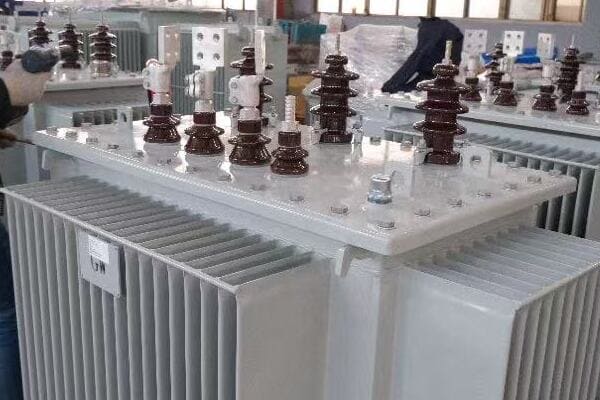
In this comprehensive guide, I’ll walk you through the step-by-step process of selecting the right transformer rating. Whether you’re working on a small commercial project or a large industrial installation, this article will equip you with the knowledge to make an informed decision and avoid costly mistakes.
What Does Transformer Rating Mean?
Have you ever wondered what all those numbers and letters on a transformer nameplate actually mean? Understanding transformer ratings is crucial for selecting the right equipment, but it can be confusing if you’re not familiar with the terminology. So, what exactly does a transformer rating tell us?
A transformer rating encompasses key parameters including voltage (primary & secondary), kVA capacity (power rating), frequency (Hz), and phase (single or three-phase). These ratings define the transformer’s operational limits and capabilities, ensuring it matches your specific power distribution needs.
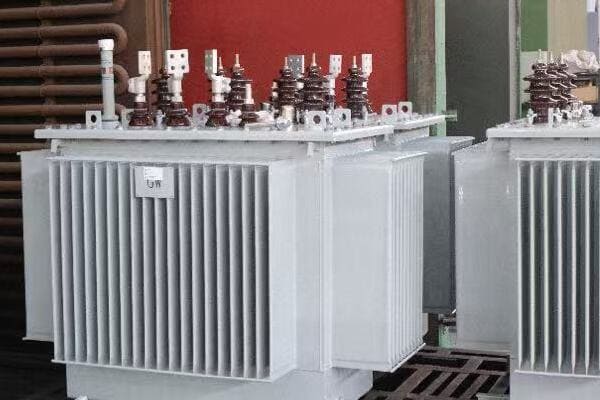
Diving Deeper into Transformer Ratings
Let’s break down the main components of a transformer rating:
Voltage Rating
This specifies the input (primary) and output (secondary) voltages:
- Primary voltage: Matches your supply voltage (e.g., 11kV, 13.2kV)
- Secondary voltage: Aligns with your equipment needs (e.g., 400V, 480V)
I once worked on a project where the wrong voltage rating was specified, resulting in equipment damage. This experience taught me the critical importance of double-checking voltage ratings against both supply and load requirements.
kVA Capacity
The kilovolt-ampere (kVA) rating indicates the transformer’s power capacity:
- Determines the maximum load the transformer can handle
- Crucial for ensuring the transformer isn’t overloaded or underutilized
Frequency Rating
Specifies the operating frequency, typically 50Hz or 60Hz:
- Must match your local power grid frequency
- Affects core design and efficiency
Phase Rating
Indicates whether the transformer is single-phase or three-phase:
- Single-phase: Common in residential and light commercial applications
- Three-phase: Standard for industrial and larger commercial installations
Additional Rating Factors
Other important ratings include:
- Impedance: Affects short-circuit current and voltage regulation
- Temperature rise: Indicates thermal performance
- Insulation class: Determines temperature limits and lifespan
Here’s a quick reference table for common transformer ratings:
| Rating Type | Example Values | Importance |
|---|---|---|
| Primary Voltage | 11kV, 33kV | Must match supply |
| Secondary Voltage | 400V, 480V | Must match load |
| kVA Capacity | 100kVA, 1000kVA | Determines max load |
| Frequency | 50Hz, 60Hz | Matches grid frequency |
| Phase | Single, Three | Matches system configuration |
| Impedance | 4%, 5.75% | Affects system performance |
Understanding these ratings is crucial for proper transformer selection. In my experience, mismatched ratings are a common cause of transformer failures and system inefficiencies. By carefully considering each aspect of the transformer rating, you can ensure that your chosen transformer will operate safely, efficiently, and reliably in your specific application.
Step 1 – Calculate Your Load Requirements (in kW or kVA)
Are you unsure about how much power your transformer needs to handle? Accurately calculating your load requirements is the crucial first step in selecting the right transformer. But how do you go about determining this, especially when dealing with diverse equipment and varying load profiles?
Calculating load requirements involves summing all connected loads (motors, lighting, HVAC, etc.), applying a safety margin (typically 20%), and converting between kW and kVA. This process ensures your transformer can handle peak demands while providing room for future expansion.
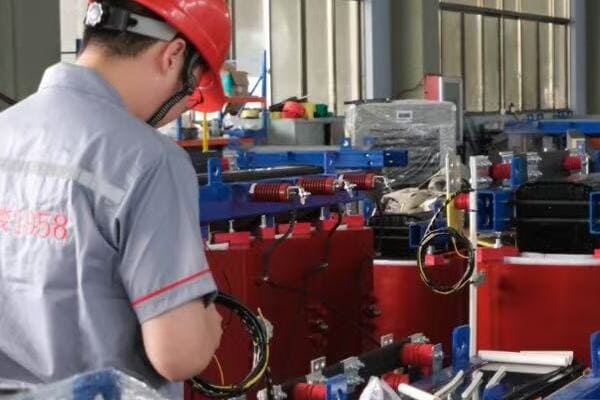
Key Steps in Load Calculation
Let’s break down the process of calculating your load requirements:
- Sum all connected loads (motors, lighting, HVAC, etc.)
- Apply safety margin (typically 20%)
- Use formulas:
- For kVA: kW ÷ PF
- For amps: kVA × 1000 ÷ (Voltage × √3 for 3-phase)
Identifying and Summing Connected Loads
Start by listing all electrical equipment that will be powered by the transformer:
- Motors: Check nameplate ratings
- Lighting: Sum total wattage
- HVAC systems: Include compressors and fan motors
- Office equipment: Computers, printers, etc.
- Future expansions: Estimate additional loads
I once worked on a project where the client forgot to account for a planned expansion. We had to replace the transformer just a year later, which was costly and disruptive. This experience taught me to always discuss future plans with clients during the load calculation phase.
Applying a Safety Margin
Adding a safety margin is crucial for several reasons:
- Accounts for simultaneous peak loads
- Provides capacity for unforeseen additions
- Compensates for potential calculation errors
A typical safety margin is 20%, but this can vary based on the application:
- Commercial buildings: 15-20%
- Industrial facilities: 20-30%
- Data centers: Up to 40% due to critical nature
Using Formulas for Conversion
Converting between different units is often necessary:
-
kW to kVA conversion:
kVA = kW ÷ Power Factor (PF)Example: 100kW load with 0.8 PF
kVA = 100 ÷ 0.8 = 125kVA -
kVA to Amperes (for 3-phase systems):
Amps = (kVA × 1000) ÷ (Voltage × √3)Example: 125kVA at 400V
Amps = (125 × 1000) ÷ (400 × 1.732) = 180.4A
Practical Tips for Accurate Load Calculation
- Use actual measured data when available
- Consider load diversity factors
- Account for power factor correction equipment
- Don’t forget about harmonic loads (e.g., VFDs, UPS systems)
Here’s a simple load calculation table example:
| Equipment | Quantity | Unit kW | Total kW |
|---|---|---|---|
| Motors | 5 | 10 | 50 |
| Lighting | 100 | 0.1 | 10 |
| HVAC | 2 | 25 | 50 |
| Office Equipment | 50 | 0.5 | 25 |
| Subtotal | 135 | ||
| Safety Margin (20%) | 27 | ||
| Total Load | 162 kW |
Assuming a power factor of 0.85:
Total kVA = 162 kW ÷ 0.85 = 190.6 kVA
In this case, you might choose a 200kVA transformer to adequately cover the load requirements.
Accurate load calculation is the foundation of proper transformer sizing. In my experience, taking the time to thoroughly assess and document all loads, including potential future needs, can save significant costs and headaches down the line. Remember, it’s always better to have a slightly oversized transformer than one that’s too small for your needs.
Step 2 – Match Primary and Secondary Voltages
Have you ever wondered why voltage matching is so crucial in transformer selection? Mismatched voltages can lead to equipment failure, inefficiency, and even safety hazards. But how do you ensure you’re choosing the right voltage ratings for both the primary and secondary sides of your transformer?
Matching primary and secondary voltages involves aligning the transformer’s input with your local utility supply (e.g., 11kV, 13.2kV) and its output with your equipment needs (e.g., 400V, 480V, 230V). This step is critical for ensuring compatibility with both the power grid and your electrical systems.
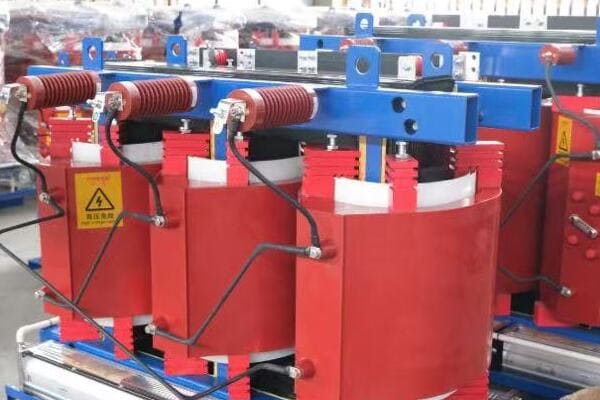
Key Considerations in Voltage Matching
Let’s explore the essential aspects of matching primary and secondary voltages:
- Local utility input (e.g., 11kV, 13.2kV)
- Equipment voltage (e.g., 400V, 480V, 230V)
- Common step-down and step-up combinations
- Reference international voltage standards
Understanding Primary Voltage
The primary voltage must match your local utility supply:
- Common medium voltage levels: 11kV, 13.2kV, 33kV
- Verify with your local power company
- Consider future changes in utility supply voltage
I once worked on a project where the client assumed the utility voltage without checking. This led to ordering a transformer with the wrong primary voltage, causing significant delays and additional costs. Always verify the actual supply voltage with the utility company.
Selecting Secondary Voltage
Secondary voltage should align with your equipment needs:
- Common low voltage levels: 400V, 480V, 230V
- Check equipment specifications carefully
- Consider voltage drop in long cable runs
Common Voltage Combinations
Familiarize yourself with standard step-down ratios:
- 11kV/400V: Common in many countries
- 13.2kV/480V: Typical in parts of North America
- 33kV/11kV: Used in sub-transmission systems
International Voltage Standards
Reference relevant standards for your region:
- IEC 60038: International voltage standards
- ANSI C84.1: North American voltage ratings
- BS 7671: British standard for electrical installations
Here’s a quick reference table for common voltage combinations:
| Primary Voltage | Secondary Voltage | Typical Application |
|---|---|---|
| 11kV | 400V | Commercial/light industrial |
| 13.2kV | 480V | Industrial (North America) |
| 33kV | 11kV | Sub-transmission |
| 400V | 230V | Step-down for single-phase loads |
Practical Tips for Voltage Matching
- Always confirm utility supply voltage in writing
- Consider voltage regulation requirements
- Account for tap changer ranges if applicable
- Be aware of special voltage requirements for sensitive equipment
Voltage Matching Challenges
Some common challenges in voltage matching include:
- Non-standard voltages in older facilities
- Mixed voltage requirements in the same installation
- Dealing with international equipment with different voltage standards
In a recent project, we encountered a facility with both 400V and 480V equipment due to a mix of European and North American machinery. We solved this by using a transformer with dual secondary windings, providing both voltages from a single unit.
Impact of Incorrect Voltage Matching
Choosing the wrong voltage ratings can have serious consequences:
- Equipment damage due to overvoltage
- Poor performance or failure due to undervoltage
- Increased energy losses and operating costs
- Safety hazards from improper insulation levels
Proper voltage matching is crucial for the safe and efficient operation of your electrical system. In my experience, taking the time to thoroughly verify and document voltage requirements at both the supply and load ends can prevent costly mistakes and ensure optimal transformer performance. Remember, when in doubt, always consult with a qualified electrical engineer or the transformer manufacturer to confirm your voltage selections.
Step 3 – Select the Right Transformer Type for Your Application
Are you confused about which type of transformer best suits your needs? With so many options available, choosing the right transformer type can be overwhelming. But what if you could easily match your application requirements to the ideal transformer design?
Selecting the right transformer type involves considering factors like installation environment, load characteristics, and safety requirements. Options include dry-type for indoor and fire-sensitive areas, oil-immersed for outdoor and heavy industrial loads, and specialized types like isolation or autotransformers for specific applications.
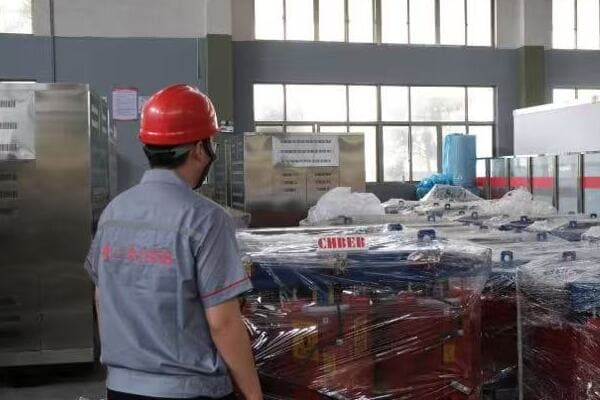
Key Transformer Types and Their Applications
Let’s explore the main types of transformers and their ideal use cases:
- Dry-type: indoor, fire-safe, commercial buildings
- Oil-immersed: outdoor, heavy industrial loads
- Isolation / autotransformers / step-up or step-down
- Pad-mounted, pole-mounted, or substation
Dry-Type Transformers
Ideal for indoor and fire-sensitive applications:
- No fire risk from combustible liquids
- Suitable for commercial buildings, hospitals, schools
- Available in cast resin or vacuum pressure impregnated (VPI) designs
I once recommended a dry-type transformer for a hospital expansion project. Its fire-safe characteristics and low maintenance needs made it perfect for the sensitive healthcare environment.
Oil-Immersed Transformers
Best for outdoor and heavy industrial applications:
- Excellent cooling properties for high capacity needs
- Suitable for harsh environments
- Requires containment measures for environmental protection
Specialized Transformer Types
-
Isolation Transformers:
- Provide electrical isolation between circuits
- Used in sensitive equipment protection
-
Autotransformers:
- Compact design for small voltage changes
- Common in motor starting applications
-
Step-Up/Step-Down Transformers:
- Specifically designed for voltage increase or decrease
- Used in renewable energy systems and grid connections
Mounting Options
-
Pad-Mounted:
- Ground-level installation
- Common in urban and commercial areas
-
Pole-Mounted:
- Elevated installation on utility poles
- Typical for rural power distribution
-
Substation:
- Large, high-capacity transformers
- Used in power transmission and distribution networks
Here’s a comparison table of transformer types:
| Type | Advantages | Best For | Considerations |
|---|---|---|---|
| Dry-Type | Fire-safe, low maintenance | Indoor, commercial | Higher initial cost |
| Oil-Immersed | High capacity, efficient cooling | Outdoor, industrial | Environmental concerns |
| Isolation | Circuit protection, noise reduction | Sensitive equipment | Larger size |
| Autotransformer | Compact, economical | Small voltage adjustments | Limited isolation |
Factors to Consider in Type Selection
When choosing a transformer type, consider:
- Installation environment (indoor/outdoor)
- Load characteristics (continuous/intermittent)
- Safety requirements (fire risk, environmental concerns)
- Maintenance capabilities and access
- Future expansion needs
- Local regulations and standards
In a recent industrial project, we initially considered oil-immersed transformers for their high capacity. However, strict environmental regulations in the area led us to opt for high-capacity dry-type units instead. This decision satisfied both the power requirements and compliance needs.
Common Mistakes in Type Selection
Avoid these pitfalls:
- Choosing based on initial cost alone
- Overlooking environmental factors
- Underestimating future load growth
- Ignoring maintenance requirements
Selecting the right transformer type is crucial for the success of your power distribution system. In my experience, carefully matching the transformer type to your specific application needs leads to better performance, longer equipment life, and fewer operational issues. Remember, the cheapest option isn’t always the most cost-effective in the long run. Consider the total lifecycle cost, including maintenance and potential upgrades, when making your decision.
Step 4 – Consider Environmental and Compliance Factors
Are you aware of how environmental conditions and regulatory requirements can impact your transformer choice? Overlooking these factors can lead to premature failure, legal issues, and safety hazards. But how do you ensure your transformer selection meets all necessary environmental and compliance standards?
Considering environmental and compliance factors is crucial in transformer selection. This includes adhering to standards like RoHS, REACH, UL, IEC, and ISO, as well as considering cooling needs, IP ratings, and installation location (indoor vs outdoor). Proper consideration ensures safety, reliability, and legal compliance.
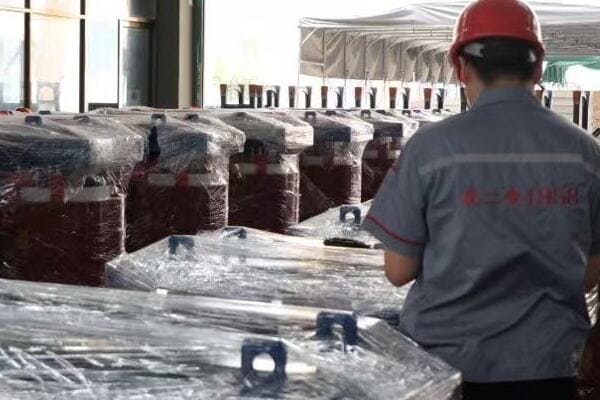
Key Environmental and Compliance Considerations
Let’s explore the critical factors to consider:
- RoHS / REACH / UL / IEC / ISO compliance
- Cooling needs (ONAN, AN, ONAF…)
- IP enclosure rating
- Indoor vs outdoor installation
Regulatory Compliance
Adhering to relevant standards is non-negotiable:
- RoHS (Restriction of Hazardous Substances): Ensures the transformer is free from restricted materials
- REACH (Registration, Evaluation, Authorization and Restriction of Chemicals): Addresses the production and use of chemical substances
- UL (Underwriters Laboratories): Safety certification, especially important in North America
- IEC (International Electrotechnical Commission): Global standards for electrical equipment
- ISO (International Organization for Standardization): Quality management standards
I once worked on a project where overlooking RoHS compliance led to issues with exporting the equipment to Europe. This experience taught me to always verify compliance requirements early in the selection process.
Cooling Systems
Proper cooling is essential for transformer longevity:
- ONAN (Oil Natural Air Natural): Common in oil-filled transformers
- AN (Air Natural): Used in dry-type transformers
- ONAF (Oil Natural Air Forced): For higher capacity oil-filled units
- AF (Air Forced): For high-capacity dry-type transformers
The choice of cooling system depends on load, environment, and maintenance capabilities. In a recent data center project, we opted for ONAF cooling to handle the high, continuous loads while minimizing noise.
IP Enclosure Rating
IP (Ingress Protection) ratings define protection against solids and liquids:
- First digit: Protection against solid objects (0-6)
- Second digit: Protection against liquids (0-8)
Common ratings include:
- IP23: Typical for indoor dry-type transformers
- IP54: Suitable for dusty environments
- IP65: Protects against water jets, used in outdoor installations
Indoor vs Outdoor Installation
Installation location significantly impacts transformer design:
- Indoor: Focus on fire safety, noise reduction, and space efficiency
- Outdoor: Emphasis on weather resistance, vandalism protection, and environmental containment
Here’s a comparison table for environmental and compliance factors:
| Factor | Indoor Consideration | Outdoor Consideration |
|---|---|---|
| Temperature | HVAC impact | Extreme weather |
| Humidity | Condensation risk | Corrosion protection |
| Pollution | Dust accumulation | Salt spray, industrial pollutants |
| Noise | Acoustic enclosures | Less critical |
| Safety | Fire resistance | Lightning protection |
Additional Environmental Considerations
- Altitude: Affects cooling efficiency and insulation requirements
- Seismic activity: May require special mounting and structural considerations
- Electromagnetic compatibility (EMC): Important in sensitive environments like hospitals or data centers
Compliance Documentation
Always ensure you have proper documentation:
- Certificates of compliance
- Test reports
- Material declarations
Common Mistakes in Environmental and Compliance Considerations
Avoid these pitfalls:
- Assuming one-size-fits-all for different regions
- Overlooking local environmental regulations
- Underestimating the impact of extreme weather conditions
- Neglecting future compliance requirements
In a recent project for a coastal industrial facility, we initially overlooked the corrosive effects of salt spray. This led to premature degradation of the transformer enclosure. We resolved the issue by specifying a higher IP rating and additional corrosion-resistant coatings, but it was a costly lesson in the importance of thorough environmental assessment.
Considering environmental factors and compliance requirements is not just about meeting regulations; it’s about ensuring the long-term reliability and safety of your power distribution system. In my experience, a thorough analysis of these factors early in the selection process can prevent costly modifications or replacements down the line. Remember, a transformer that works perfectly in one environment may fail prematurely in another. Always consider the specific conditions of your installation site and the relevant regulatory landscape.
Final Checklist – Confirm Before You Order
Are you ready to place your transformer order but worried you might have overlooked something crucial? This final step is your safety net, ensuring all key factors have been considered before making your purchase. But what exactly should you double-check to avoid costly mistakes?
Before ordering a transformer, it’s essential to confirm all critical parameters. This includes verifying voltage levels, load capacity, transformer type, compliance certifications, and delivery timeline. A final checklist ensures that all aspects of your transformer selection align with your project requirements and specifications.
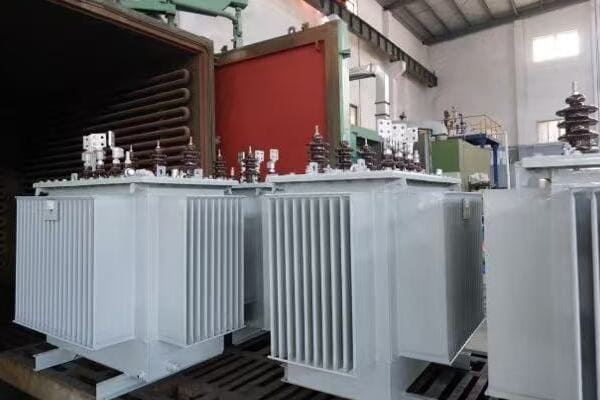
Comprehensive Final Checklist
Use this checklist to ensure you’ve covered all bases before placing your order:
| Item | Description | Checked |
|---|---|---|
| Voltage levels | Primary & secondary clearly defined | ☐ |
| Load capacity | kVA rating covers total + buffer | ☐ |
| Transformer type | Matches environment & load type | ☐ |
| Compliance | Meets local codes & certifications | ☐ |
| Delivery time | Aligns with project schedule | ☐ |
Let’s dive deeper into each of these critical items:
Voltage Levels
Confirm both primary and secondary voltages:
- Primary voltage matches utility supply
- Secondary voltage meets equipment needs
- Consider voltage regulation requirements
I once encountered a project where the secondary voltage was incorrectly specified as 400V instead of 415V. This small error led to significant issues with equipment performance. Always double-check voltage specifications against both utility documentation and equipment requirements.
Load Capacity
Ensure the kVA rating is sufficient:
- Covers calculated load plus safety margin
- Accounts for future expansion if planned
- Verify if overload capacity is required
Transformer Type
Confirm the selected type suits your application:
- Dry-type vs. oil-filled
- Core and winding configuration
- Special types (e.g., isolation, autotransformer)
Compliance and Certifications
Verify all necessary certifications are in place:
- Relevant standards (IEC, ANSI, BS, etc.)
- Environmental compliance (RoHS, REACH)
- Safety certifications (UL, CE)
In a recent international project, we almost overlooked a country-specific certification requirement. Catching this during the final checklist review saved us from potential legal issues and project delays.
Delivery Timeline
Ensure the delivery aligns with your project schedule:
- Confirm lead time with manufacturer
- Account for shipping and customs clearance if applicable
- Consider any site preparation requirements
Additional Checklist Items
Consider adding these items based on your specific project needs:
- [ ] Cooling system type (ONAN, ONAF, etc.)
- [ ] Impedance value
- [ ] Tap changer details (if applicable)
- [ ] Noise level requirements
- [ ] Physical dimensions and weight
- [ ] Special features (e.g., monitoring systems)
- [ ] Warranty terms
Common Oversights to Avoid
Be particularly vigilant about these often-overlooked aspects:
- Altitude considerations for installations above 1000m
- Harmonic load handling capabilities
- Seismic requirements for earthquake-prone areas
- Specific paint or finish requirements for corrosive environments
Documentation Review
Ensure you have all necessary documentation:
- Detailed technical specifications
- Compliance certificates
- Test reports
- Warranty information
I always recommend creating a project-specific checklist that incorporates any unique requirements of your installation. This tailored approach has helped me catch potential issues that generic checklists might miss.
By thoroughly reviewing this final checklist, you can significantly reduce the risk of ordering an unsuitable transformer. In my experience, the time spent on this final verification step is minimal compared to the potential costs and delays of correcting mistakes after the order is placed. Remember, it’s always better to delay an order by a day for thorough checking than to face weeks or months of project setbacks due to an incorrect specification.
Conclusion
Selecting the right transformer rating involves careful consideration of load requirements, voltage matching, transformer type, and environmental factors. By following this step-by-step guide and using the final checklist, you can ensure your transformer choice meets your project’s needs, complies with regulations, and operates efficiently and safely for years to come.
Remember, at chbeb-ele, we’re not just sharing information – we’re empowering you to be part of the solution in creating a secure, clean, and efficient energy future. Let’s continue this journey together.
Have you ever wondered what’s inside a transformer and how it actually works? You’re not alone. Many engineers and technicians find transformers mysterious, despite their crucial role in power systems. But what if you could understand these devices from the inside out?
Transformers consist of key electrical components including the magnetic core, windings, insulation, tap changers, and bushings. Each part plays a vital role in voltage regulation, energy transfer, and electrical safety. Understanding these elements helps in selecting, operating, and maintaining transformers efficiently.
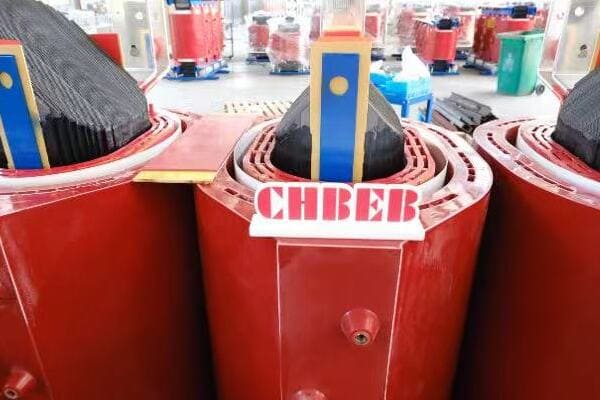
In this comprehensive guide, I’ll walk you through the main components of a transformer, explaining their functions and how they work together. Whether you’re a seasoned engineer or just starting in the field, this article will deepen your understanding of these essential power system devices.
What Are the Main Parts of a Transformer?
Have you ever looked at a transformer and wondered what’s inside that metal box or tank? Understanding the main components is crucial for anyone working with electrical systems. But what exactly are these parts, and why are they so important?
**The main parts of a transformer include:
- Magnetic Core
- Primary & Secondary Windings
- Insulation System
- Tap Changer (if present)
- Bushing Terminals
- Tank / Enclosure (for oil type)**
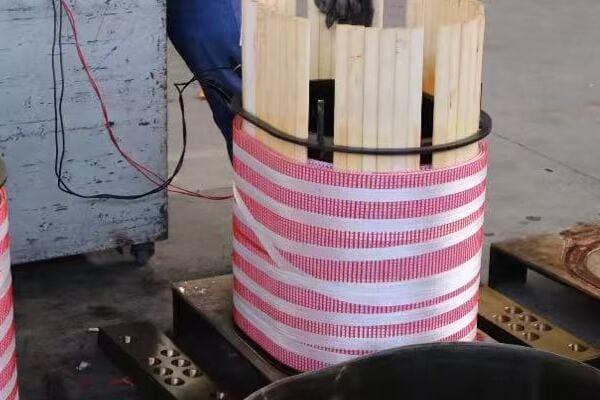
Diving Deeper into Transformer Components
Let’s explore each of these components in more detail:
Magnetic Core
The core is the heart of the transformer:
- Made from thin laminations of silicon steel
- Provides a path for magnetic flux
- Crucial for energy transfer between windings
Primary & Secondary Windings
Windings are the transformer’s electrical conductors:
- Usually made of copper or aluminum
- Primary winding receives input voltage
- Secondary winding delivers output voltage
- Number of turns determines voltage transformation ratio
Insulation System
Insulation is critical for safety and efficiency:
- Prevents short circuits between windings and core
- Can be air, oil, or solid materials like resin
- Quality of insulation affects transformer lifespan
Tap Changer
Not all transformers have tap changers, but they’re important for voltage regulation:
- Allows adjustment of turns ratio
- Can be on-load or off-load type
- Critical for maintaining stable output voltage
Bushing Terminals
Bushings are the connection points to the outside world:
- Insulated passages for conductors
- Allow safe connection of high voltage cables
- Often made of porcelain or composite materials
Tank / Enclosure
For oil-filled transformers, the tank is crucial:
- Contains the insulating oil
- Provides structural support
- Helps in heat dissipation
I once worked on a project where we had to troubleshoot a faulty transformer. By understanding these components, we quickly identified that the issue was with the tap changer, not the core or windings as initially suspected. This knowledge saved significant time and resources in the repair process.
Understanding these main components is just the beginning. Each part plays a crucial role in the transformer’s operation and efficiency. In the following sections, we’ll dive deeper into each component, exploring their functions and importance in more detail.
Transformer Core: The Magnetic Heart of the Device
Have you ever wondered why transformer cores are so heavy and what makes them so special? The core is often called the heart of the transformer, but why is it so crucial to the device’s operation?
The transformer core is made from laminated silicon steel sheets, designed to guide magnetic flux efficiently. It reduces eddy current losses and plays a vital role in energy transfer. There are several core types, including shell-type, core-type, and toroidal, each with specific advantages for different applications.

Key Aspects of Transformer Cores
Let’s explore the critical features of transformer cores:
- Made from laminated silicon steel
- Guides magnetic flux efficiently
- Reduces eddy current losses
- Types: Shell-type, Core-type, Toroidal
Core Material and Construction
Transformer cores are typically made from silicon steel, also known as electrical steel:
- Silicon content reduces eddy current losses
- Laminated construction further minimizes losses
- Thickness of laminations can be as little as 0.23mm
I once visited a transformer manufacturing plant where I saw the meticulous process of assembling these cores. The precision required in stacking the laminations was impressive, highlighting the importance of core construction in transformer efficiency.
Magnetic Flux Guidance
The core’s primary function is to guide magnetic flux:
- Provides a low-reluctance path for magnetic fields
- Ensures efficient energy transfer between windings
- Shape and design optimize flux distribution
Eddy Current Loss Reduction
Minimizing eddy current losses is crucial for efficiency:
- Laminations break up eddy current paths
- Grain-oriented steel aligns magnetic domains
- Proper core design can significantly reduce overall losses
Types of Transformer Cores
Different core types suit various applications:
-
Shell-type Core:
- Windings surrounded by core material
- Good for high-current, low-voltage applications
-
Core-type:
- Core surrounded by windings
- Common in distribution transformers
-
Toroidal Core:
- Donut-shaped core with windings around the circumference
- Highly efficient, often used in small-scale applications
In a recent project, we had to choose between core-type and shell-type designs for a large power transformer. We opted for the shell-type due to its better short-circuit strength, which was crucial for the high-current application.
Core Performance Factors
Several factors influence core performance:
| Factor | Impact on Performance |
|---|---|
| Material Quality | Affects magnetic properties and losses |
| Lamination Thickness | Thinner laminations reduce eddy currents |
| Core Shape | Influences flux distribution and efficiency |
| Assembly Method | Affects overall magnetic circuit quality |
Understanding these core characteristics is essential for transformer design and selection. The core’s quality and design directly impact the transformer’s efficiency, size, and overall performance. In my experience, a well-designed core can make the difference between an average transformer and an exceptional one, especially in high-efficiency applications.
Windings: How Electricity Flows Through the Transformer
Have you ever wondered how transformers actually change voltage levels? The secret lies in the windings. But what exactly are these windings, and how do they perform this seemingly magical feat of voltage transformation?
Transformer windings are coils of wire, typically made of copper or aluminum, that carry the electric current. The number of turns in the primary and secondary windings determines the voltage ratio. These windings are insulated and designed to handle specific current loads, directly impacting the transformer’s efficiency and heat dissipation.
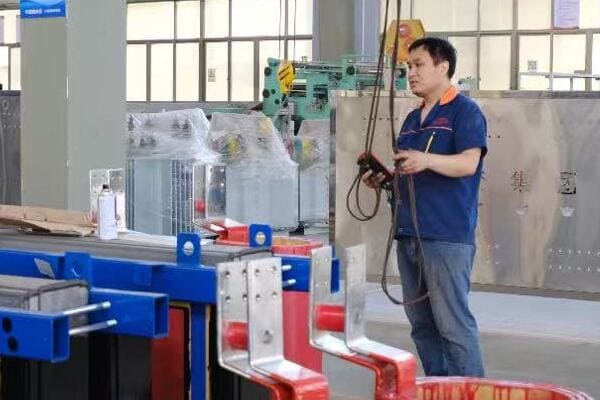
Key Aspects of Transformer Windings
Let’s explore the critical features of transformer windings:
- Made of copper or aluminum
- Determines voltage ratio
- Insulated with varnish or paper
- Impact efficiency & heat dissipation
Winding Materials
The choice of winding material is crucial:
- Copper: Higher conductivity, often used in high-performance transformers
- Aluminum: Lighter and less expensive, common in distribution transformers
I once worked on a project where we had to decide between copper and aluminum windings. We chose copper for its superior conductivity, which allowed for a more compact design in a space-constrained substation.
Voltage Ratio and Turns Ratio
The fundamental principle of transformer operation lies in the turns ratio:
- Primary to secondary turns ratio determines voltage transformation
- Voltage ratio = Turns ratio (in an ideal transformer)
- Example: 100 turns primary, 10 turns secondary = 10:1 step-down ratio
Winding Insulation
Proper insulation is critical for safety and longevity:
- Each turn is insulated to prevent short circuits
- Common insulation materials include enamel, paper, and synthetic materials
- Insulation class (e.g., Class F, Class H) determines temperature ratings
In a recent transformer repair, we discovered that degraded insulation was the root cause of a failure. This experience highlighted the importance of selecting appropriate insulation materials for the operating environment.
Winding Types and Arrangements
Different winding types suit various applications:
-
Layer Winding:
- Used in low-voltage applications
- Easy to manufacture
-
Disc Winding:
- Common in high-voltage transformers
- Better impulse voltage distribution
-
Helical Winding:
- Used for high-current applications
- Excellent cooling properties
Efficiency and Heat Dissipation
Winding design significantly impacts transformer efficiency:
- Larger conductor cross-sections reduce resistance losses
- Proper spacing allows for better cooling
- Winding arrangement affects leakage reactance
Here’s a comparison of winding characteristics:
| Characteristic | Copper Windings | Aluminum Windings |
|---|---|---|
| Conductivity | Higher | Lower |
| Weight | Heavier | Lighter |
| Cost | Higher | Lower |
| Durability | Excellent | Good |
| Heat Dissipation | Better | Good |
Understanding winding design and materials is crucial for optimizing transformer performance. In my experience, careful consideration of winding parameters can lead to significant improvements in efficiency, reliability, and lifespan of transformers. Whether you’re designing, selecting, or maintaining transformers, a solid grasp of winding principles is essential for making informed decisions.
Insulation System: Ensuring Electrical Safety and Longevity
Have you ever considered what keeps the high-voltage parts of a transformer from short-circuiting? The answer lies in the insulation system. But why is this system so critical, and how does it contribute to the safety and longevity of transformers?
The insulation system in transformers is crucial for electrical safety and operational longevity. It includes materials like Class F/H insulation for dry-type transformers, resin-encapsulated windings for cast resin types, and paper/oil combinations for oil-immersed units. Proper insulation prevents arcing, flashover, and failure, ensuring safe and efficient transformer operation.
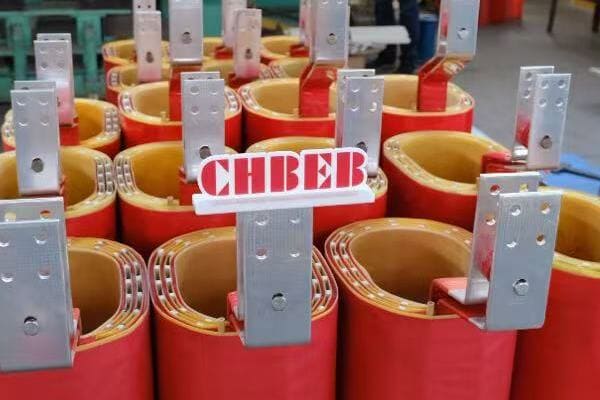
Key Aspects of Transformer Insulation Systems
Let’s explore the critical features of transformer insulation:
- Class F/H insulation for dry-type
- Resin encapsulated windings (for cast resin)
- Paper/oil for oil-immersed units
- Prevents arc, flashover, or failure
Insulation Classes
Insulation classes define temperature capabilities:
- Class F: Rated for 155°C
- Class H: Rated for 180°C
- Higher classes allow for higher operating temperatures
I once worked on upgrading a transformer from Class F to Class H insulation. This change allowed the transformer to handle higher loads without overheating, significantly improving its capacity and efficiency.
Dry-Type Transformer Insulation
Dry-type transformers use solid insulation systems:
- Typically use Class F or H insulation materials
- Often include epoxy resin impregnation or encapsulation
- Provides excellent fire safety and environmental benefits
Cast Resin Transformers
Cast resin transformers offer unique insulation properties:
- Windings are encapsulated in epoxy resin
- Provides excellent moisture and pollution resistance
- Ideal for harsh environments or indoor installations
In a recent project for a coastal industrial facility, we chose cast resin transformers specifically for their resistance to salt air and humidity, ensuring long-term reliability in the challenging environment.
Oil-Immersed Transformer Insulation
Oil-immersed transformers use a combination of solid and liquid insulation:
- Paper insulation on windings
- Mineral oil or synthetic fluids as insulating and cooling medium
- Offers excellent heat dissipation properties
Insulation System Components
A comprehensive insulation system includes:
- Turn-to-turn insulation
- Layer-to-layer insulation
- Winding-to-core insulation
- Winding-to-tank insulation (for oil-type)
Environmental and Safety Considerations
Modern insulation systems focus on safety and environmental aspects:
- Fire-resistant materials in dry-type transformers
- Biodegradable oils in some liquid-filled transformers
- Reduced use of harmful substances (e.g., PCBs)
Here’s a comparison of insulation types:
| Insulation Type | Advantages | Considerations |
|---|---|---|
| Dry-Type (Class F/H) | Fire-resistant, environmentally friendly | Limited overload capacity |
| Cast Resin | Excellent for harsh environments | Higher initial cost |
| Oil-Immersed | High overload capacity, efficient cooling | Requires oil maintenance |
Understanding insulation systems is crucial for ensuring transformer reliability and safety. In my experience, proper insulation selection and maintenance can significantly extend a transformer’s lifespan and prevent catastrophic failures. Whether you’re specifying a new transformer or maintaining existing ones, considering the insulation system is key to ensuring long-term performance and safety.
Other Key Components: Tap Changers, Bushings, Cooling Systems
Have you ever wondered how transformers maintain stable output voltages or connect to power lines safely? The answer lies in components like tap changers and bushings. But what exactly are these parts, and how do they contribute to a transformer’s functionality?
Transformers incorporate several key components beyond the core and windings. Tap changers adjust voltage ratios, bushings provide insulated connections for high/low voltage lines, and cooling systems manage heat dissipation. These components are crucial for voltage regulation, safe operation, and efficient performance of the transformer.
Essential Auxiliary Components of Transformers
Let’s explore these critical components:
- Tap Changer – Adjusts voltage ratio
- Bushings – Insulated terminals for HV/LV connection
- Cooling System – AN, AF, ONAN, ONAF, ANAF, etc.
Tap Changers
Tap changers are vital for voltage regulation:
- Allow adjustment of turns ratio
- Can be on-load (OLTC) or off-load type
- Critical for maintaining stable output voltage under varying load conditions
I once worked on a project where implementing an on-load tap changer significantly improved voltage stability in a rural distribution network, reducing complaints about voltage fluctuations.
Bushings
Bushings are crucial for safe electrical connections:
- Provide insulated passage for conductors through transformer tank or enclosure
- Come in various types: solid, oil-filled, or gas-filled
- Rated for specific voltage levels and current capacities
In a recent high-voltage transformer installation, selecting the right bushings was critical. We chose composite bushings over traditional porcelain for their better seismic performance and reduced maintenance needs.
Cooling Systems
Efficient cooling is essential for transformer performance and longevity:
- Types include:
- AN (Air Natural)
- AF (Air Forced)
- ONAN (Oil Natural Air Natural)
- ONAF (Oil Natural Air Forced)
- OFAF (Oil Forced Air Forced)
- Choice depends on transformer size, load, and environment
During a transformer upgrade project, we switched from ONAN to ONAF cooling, which allowed for a 20% increase in capacity without changing the core and windings.
Comparison of Auxiliary Components
Here’s a quick overview of these components:
| Component | Function | Types | Considerations |
|---|---|---|---|
| Tap Changer | Voltage adjustment | OLTC, Off-load | Load requirements, regulation needs |
| Bushings | Insulated connections | Solid, Oil-filled, Gas-filled | Voltage rating, environmental factors |
| Cooling System | Heat dissipation | AN, AF, ONAN, ONAF, OFAF | Load profile, ambient conditions |
Additional Important Components
Other key components include:
- Pressure Relief Devices: Protect against internal pressure build-up
- Buchholz Relay (for oil-type): Detects gas accumulation or oil loss
- Temperature Indicators: Monitor winding and oil temperatures
- Oil Preservation Systems: Maintain oil quality in oil-type transformers
Understanding these auxiliary components is crucial for proper transformer operation and maintenance. In my experience, paying attention to these elements can significantly enhance a transformer’s performance, reliability, and lifespan. Whether you’re designing a new installation or managing existing transformers, knowledge of these components is essential for making informed decisions and ensuring optimal operation.
Visual Diagram: Inside a Power Transformer
Have you ever wished you could see inside a power transformer to understand how all its components fit together? While opening up a live transformer is obviously not an option, a detailed visual diagram can provide invaluable insights into its internal structure and operation.
A comprehensive visual diagram of a power transformer reveals the intricate arrangement of its core, windings, insulation, and auxiliary components. This visual representation helps in understanding the spatial relationships between parts, the flow of magnetic flux, and the overall design principles that make transformers such efficient devices for voltage transformation.
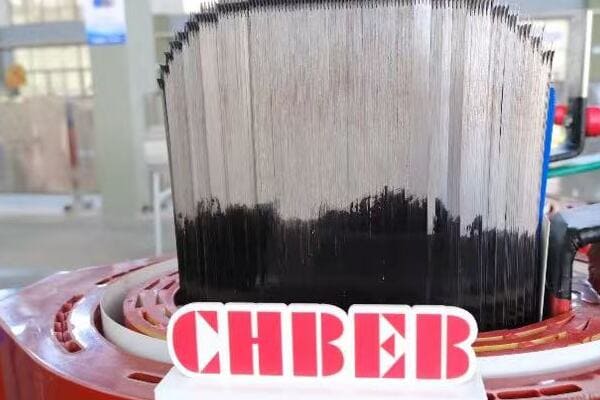
Key Elements in a Power Transformer Diagram
Let’s explore the essential components typically shown in a transformer diagram:
- Magnetic Core
- Primary and Secondary Windings
- Insulation Layers
- Cooling Ducts
- Tap Changer Mechanism
- Bushings
- Tank or Enclosure
- Cooling Radiators (for oil-filled types)
Understanding the Diagram
A well-designed transformer diagram offers several insights:
- Spatial Arrangement: Shows how components are positioned relative to each other
- Flux Path: Illustrates the magnetic circuit through the core
- Insulation Placement: Highlights critical areas of electrical isolation
- Cooling Mechanisms: Demonstrates how heat is dissipated
I once used a detailed transformer diagram to explain to a client why a particular design was more suitable for their application. The visual representation made it much easier to convey complex concepts about flux distribution and cooling efficiency.
Core and Winding Configuration
The diagram typically shows:
- Core shape (e.g., shell-type, core-type)
- Winding arrangement (concentric or sandwich)
- Relation between primary and secondary windings
Insulation and Cooling
Key features to observe:
- Insulation layers between windings and core
- Oil flow paths in oil-immersed transformers
- Air gaps for cooling in dry-type units
Auxiliary Components
Look for these important elements:
- Tap changer location and mechanism
- Bushing placements and design
- Cooling radiators or fans
Interpreting the Diagram
Here’s how different aspects of the diagram relate to transformer function:
| Diagram Element | Functional Significance |
|---|---|
| Core Shape | Influences magnetic flux path and efficiency |
| Winding Layout | Affects voltage regulation and short-circuit strength |
| Insulation Placement | Critical for preventing electrical breakdown |
| Cooling Paths | Determines heat dissipation capacity |
| Tap Changer Position | Indicates voltage adjustment capability |
Practical Applications of Transformer Diagrams
Understanding these diagrams is crucial for several reasons:
- Design Optimization: Engineers use them to refine transformer designs
- Maintenance Planning: Technicians refer to them for servicing procedures
- Fault Diagnosis: Helps in identifying potential failure points
- Education and Training: Excellent tools for teaching transformer principles
In my experience, a good transformer diagram is worth a thousand words when it comes to understanding these complex devices. Whether you’re a student learning about transformers for the first time or an experienced engineer working on advanced designs, a clear, comprehensive diagram is an invaluable resource.
Summary Table – Transformer Components and Their Functions
Are you looking for a quick reference guide to transformer components and their roles? Understanding the function of each part is crucial for anyone working with or studying transformers. But how can we summarize this complex information in an easily digestible format?
This summary table provides a concise overview of key transformer components and their functions. From the core that conducts magnetic flux to the bushings that provide safe connections, each element plays a vital role in the transformer’s operation. This table serves as a quick reference for engineers, technicians, and students alike.

Comprehensive Component Function Table
Here’s a detailed breakdown of transformer components and their functions:
| Component | Material | Function |
|---|---|---|
| Core | Silicon steel | Conducts magnetic flux |
| Windings | Copper/aluminum | Carries electric current |
| Insulation | Resin, paper, oil | Prevents short circuits |
| Tap Changer | Mechanical/electronic | Regulates output voltage |
| Bushings | Porcelain/composite | Provides safe connections |
| Tank/Enclosure | Steel | Contains and protects internal components |
| Cooling System | Various | Dissipates heat |
| Pressure Relief Device | Mechanical | Protects against overpressure |
| Buchholz Relay | Mechanical/electronic | Detects faults in oil-filled transformers |
| Temperature Indicators | Electronic | Monitors operating temperature |
Practical Applications of This Table
This summary table is more than just a list; it’s a powerful tool for various applications:
- Quick Reference: Ideal for field technicians needing rapid information
- Educational Aid: Helps students grasp the basics of transformer construction
- Design Checklist: Useful for engineers ensuring all components are considered
- Maintenance Guide: Assists in identifying components during servicing
I often refer to a similar table when conducting transformer training sessions. It provides a structured way to introduce each component and its role in the overall system.
Component Interrelationships
Understanding how these components work together is crucial:
- Core and Windings: Form the heart of the transformer’s electromagnetic system
- Insulation and Cooling: Work in tandem to maintain safe operating temperatures
- Tap Changer and Bushings: Essential for voltage regulation and power distribution
Material Choices and Their Impact
The choice of materials for each component significantly affects performance:
- Core Material: Influences efficiency and losses
- Winding Material: Impacts current-carrying capacity and size
- Insulation Type: Determines temperature ratings and environmental suitability
Maintenance Considerations
Different components require varying levels of maintenance:
| Component | Maintenance Frequency | Key Checks |
|---|---|---|
| Core | Low | Insulation resistance |
| Windings | Low | Resistance measurements |
| Insulation | Medium | Dielectric strength tests |
| Tap Changer | High | Contact wear, oil quality |
| Bushings | Medium | Surface contamination, oil levels |
In my experience, understanding the function and maintenance needs of each component is crucial for effective transformer management. This table serves as an excellent starting point for developing comprehensive maintenance strategies.
By familiarizing yourself with this summary table, you’ll have a solid foundation for understanding transformer operation, troubleshooting issues, and making informed decisions in transformer selection and maintenance. Whether you’re a seasoned professional or new to the field, this overview of components and their functions is an invaluable resource in your transformer knowledge toolkit.
Conclusion
Understanding the key components of transformers – from the core and windings to insulation and auxiliary parts – is crucial for effective design, operation, and maintenance. Each element plays a vital role in the transformer’s functionality, efficiency, and safety. By grasping these fundamentals, you’re better equipped to work with and manage these essential power system devices.
Remember, at chbeb-ele, we’re not just sharing information – we’re empowering you to be part of the solution in creating a secure, clean, and efficient energy future. Let’s continue this journey together.
Are you worried about potential issues with your dry type transformer installation? You’re not alone. Many engineers and technicians face challenges when setting up these crucial pieces of equipment. But what if you could avoid the most common pitfalls and ensure a flawless installation?
Improper ventilation, grounding, cable termination, and installation in unsuitable environments are common mistakes when setting up dry-type transformers. This guide outlines the top 5 errors and shows how to prevent them—ensuring safer operation, longer service life, and compliance with electrical standards.
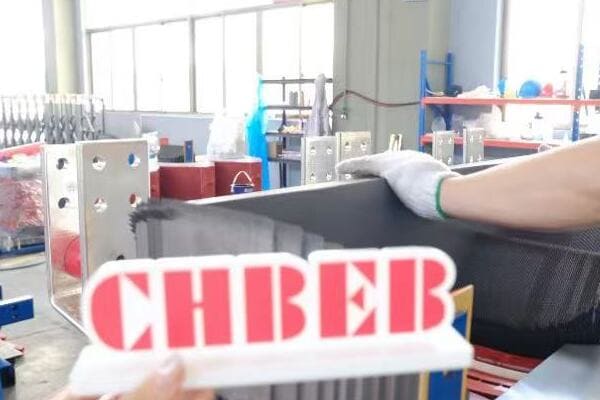
In this comprehensive guide, I’ll walk you through the five most common installation mistakes I’ve encountered in my years of experience with dry type transformers. More importantly, I’ll provide you with practical solutions to avoid these errors, ensuring your transformer operates safely and efficiently for years to come.
Mistake #1 – Ignoring Ventilation Requirements
Have you ever wondered why some transformers overheat even when they’re not overloaded? The answer often lies in poor ventilation. But why is proper airflow so crucial for dry type transformers, and how can you ensure your installation doesn’t fall into this common trap?
Adequate ventilation is critical for dry type transformers to dissipate heat effectively. Ignoring clearance requirements or obstructing airflow can lead to overheating, reduced efficiency, and premature failure. Proper installation requires following IEC 60076-11 specifications for air gaps and avoiding placement in sealed rooms or near heat sources.
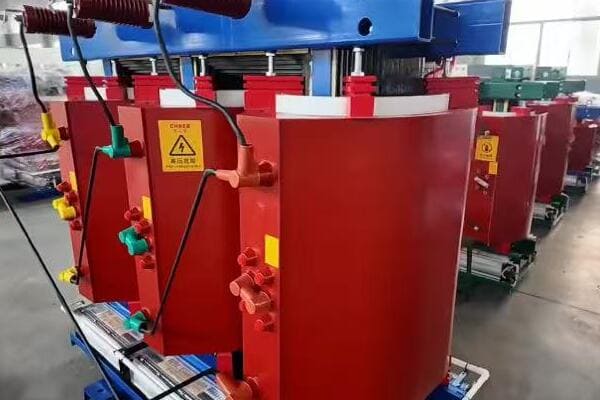
Key Ventilation Considerations
To ensure proper cooling of your dry type transformer, keep these points in mind:
- Transformers need minimum clearance on all sides
- Obstructed airflow = overheating risk
- Avoid placing in sealed rooms or near heat sources
- Follow IEC 60076-11 air gap specs
Understanding Clearance Requirements
Proper clearance is essential for effective heat dissipation:
- Top clearance: Usually the most critical, as heat rises
- Side clearances: Allow for convection currents
- Bottom clearance: Ensures air intake isn’t obstructed
I once consulted on a project where a transformer was installed in a tight utility closet. Despite being correctly sized for the load, it consistently overheated. The problem? Insufficient clearance on all sides, restricting airflow. We solved the issue by relocating the transformer to a more spacious area, immediately resolving the overheating problems.
Avoiding Airflow Obstructions
Even with proper clearance, obstructions can impede cooling:
- Keep areas around the transformer free of stored items
- Ensure ventilation openings in enclosures are not blocked
- Consider the impact of nearby equipment on air circulation
In a recent industrial installation, we discovered that large storage shelves had been placed too close to the transformer, blocking airflow on one side. This simple oversight led to localized overheating. Rearranging the storage area to maintain proper clearances solved the issue.
Environmental Considerations
The transformer’s environment plays a crucial role in cooling efficiency:
- Avoid sealed rooms without proper ventilation systems
- Be cautious of installing near heat-generating equipment
- Consider ambient temperature fluctuations in the installation area
I recall a data center project where a dry type transformer was initially placed near a bank of servers. The combined heat output created a hot spot, compromising the transformer’s efficiency. Relocating the transformer to a cooler area of the facility significantly improved its performance and lifespan.
Compliance with IEC 60076-11
Following international standards ensures optimal performance:
- Adhere to specified minimum clearances
- Consider using forced air cooling for high-load applications
- Regularly inspect and maintain ventilation systems
Here’s a quick reference table for typical clearance requirements:
| Position | Minimum Clearance | Recommended Clearance |
|---|---|---|
| Top | 300 mm | 500 mm |
| Sides | 200 mm | 300 mm |
| Front | 600 mm | 1000 mm |
| Rear | 200 mm | 300 mm |
Note: These are general guidelines. Always consult your transformer’s specific installation manual for exact requirements.
By paying close attention to ventilation requirements, you’re not just avoiding a common installation mistake; you’re ensuring the longevity and efficiency of your dry type transformer. Proper airflow is the key to maintaining optimal operating temperatures, preventing premature insulation breakdown, and ultimately, safeguarding your investment in this critical piece of equipment.
Mistake #2 – Incorrect Grounding Connections
Have you ever wondered why proper grounding is so crucial for dry type transformers? Many installers underestimate its importance, leading to potential safety hazards and equipment damage. But what exactly constitutes correct grounding, and how can you ensure your installation meets the necessary standards?
Correct grounding is essential for the safety and proper operation of dry type transformers. Using designated grounding lugs, ensuring continuity between the enclosure and system ground, and avoiding the use of mounting bolts for grounding are key. Poor grounding can lead to high fault currents, electric shock risks, and equipment failure.
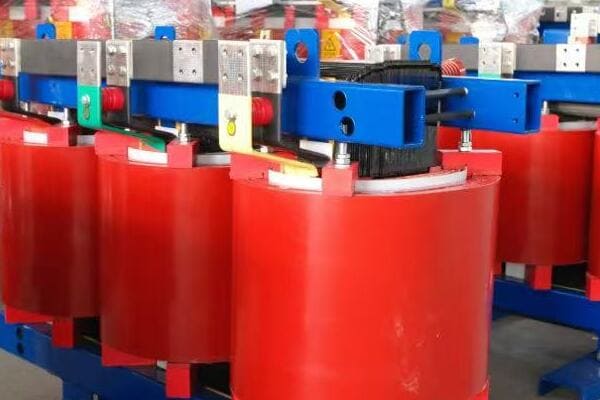
Essential Grounding Practices
To ensure proper grounding of your dry type transformer, keep these points in mind:
- Use designated grounding lugs, not mounting bolts
- Ensure continuity between enclosure and system ground
- Poor grounding = high fault current risk
Using Proper Grounding Points
Correct grounding starts with using the right connection points:
- Locate and use the designated grounding lugs or terminals
- Never rely on mounting bolts or structural components for grounding
- Ensure grounding points are clean and free of paint or corrosion
I once inspected a transformer installation where the technician had used a mounting bolt for grounding, assuming it provided a sufficient connection. This mistake could have led to dangerous voltage potentials on the transformer casing. We immediately corrected the issue by installing a proper ground connection to the designated lug.
Ensuring Ground Continuity
Continuity between the transformer enclosure and the system ground is crucial:
- Use appropriately sized grounding conductors
- Minimize the length of grounding cables to reduce impedance
- Regularly test ground continuity as part of maintenance routines
In a recent industrial project, we discovered intermittent ground faults. Upon investigation, we found that the grounding conductor was undersized for the application, leading to poor continuity. Upgrading to a larger gauge conductor resolved the issue and improved overall system safety.
Understanding the Risks of Poor Grounding
Inadequate grounding can lead to several serious issues:
- Increased risk of electric shock to personnel
- Potential for equipment damage during fault conditions
- Interference with sensitive electronic equipment
I recall a case where poor grounding led to mysterious equipment malfunctions in a nearby control room. The improperly grounded transformer was allowing stray currents to affect sensitive instrumentation. Correcting the grounding not only resolved the safety concern but also eliminated the operational issues.
Best Practices for Grounding Installation
Follow these guidelines to ensure proper grounding:
- Use copper conductors for grounding whenever possible
- Ensure all connections are tight and protected from corrosion
- Implement a regular inspection and testing schedule for ground connections
Here’s a quick reference table for grounding conductor sizing:
| Transformer kVA | Minimum Grounding Conductor Size (AWG/kcmil) |
|---|---|
| Up to 50 | 8 |
| 51-150 | 6 |
| 151-300 | 4 |
| 301-500 | 2 |
| Over 500 | 0 |
Note: Always consult local electrical codes and manufacturer specifications for exact requirements.
By paying close attention to grounding connections, you’re not just avoiding a common installation mistake; you’re ensuring the safety of personnel and the protection of your equipment. Proper grounding is fundamental to the safe and reliable operation of dry type transformers, providing a path for fault currents and helping to maintain stable voltage levels throughout your electrical system.
Mistake #3 – Improper Cable Termination
Are you confident that your transformer’s cable connections are secure and efficient? Many installers overlook the critical importance of proper cable termination, leading to potential hazards and performance issues. But what constitutes correct cable termination, and how can you ensure your installation meets the highest standards of safety and efficiency?
Proper cable termination is crucial for the safe and efficient operation of dry type transformers. This involves using the correct torque, avoiding cable stress, and ensuring clean, flush connections. Improper termination can lead to overheating, arcing, and even catastrophic failure of the transformer.
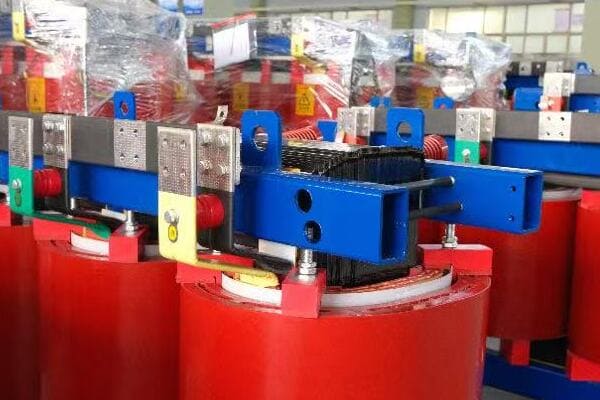
Key Aspects of Proper Cable Termination
To ensure correct cable termination for your dry type transformer, focus on these critical points:
- Use proper torque (as per terminal label)
- Avoid bending or stressing cable entries
- Ensure lug-to-bar contact is clean & flush
Applying Correct Torque
Using the right amount of torque is essential for secure connections:
- Always refer to the manufacturer’s specifications for torque values
- Use a calibrated torque wrench to achieve precise tightening
- Over-torquing can damage terminals, while under-torquing leads to loose connections
I once investigated a transformer failure where the primary cause was a loose connection due to under-torqued terminals. This simple oversight led to localized heating, eventually causing insulation breakdown and a costly outage. Since then, I always emphasize the importance of proper torque application in every installation.
Preventing Cable Stress
Proper cable management is crucial to prevent stress on terminations:
- Use appropriate cable support methods to reduce strain on connections
- Avoid sharp bends in cables, especially near termination points
- Allow sufficient slack in cables to accommodate thermal expansion and vibration
In a recent industrial installation, we observed premature cable insulation failure near the transformer terminals. Upon closer inspection, we found that the cables were installed with too tight a bend radius, causing stress and eventual breakdown. Rerouting the cables with proper support and gentler bends resolved the issue.
Ensuring Clean and Flush Connections
The quality of the physical connection is paramount:
- Clean all contact surfaces thoroughly before termination
- Ensure lugs are properly sized for the cable and terminal
- Verify that the lug-to-bar contact is flush and free of gaps
I recall a case where intermittent faults were traced back to contamination on the transformer terminals. A thin film of oil from the manufacturing process had been left on the terminals, preventing proper contact. A thorough cleaning and re-termination solved the problem, highlighting the importance of clean connections.
Best Practices for Cable Termination
Follow these guidelines to ensure optimal cable termination:
- Use compression lugs for larger cables to ensure better contact
- Implement a regular inspection schedule for all terminations
- Consider using infrared thermography to detect potential hot spots at connections
Here’s a quick reference table for common cable termination issues and solutions:
| Issue | Potential Consequences | Solution |
|---|---|---|
| Loose connections | Overheating, arcing | Apply correct torque, regular retightening |
| Contaminated surfaces | Poor contact, increased resistance | Clean thoroughly before termination |
| Improper lug size | Incomplete contact, overheating | Use correctly sized lugs for cable and terminal |
| Cable stress | Insulation damage, connection failure | Proper cable support and routing |
By paying close attention to cable termination details, you’re not just avoiding a common installation mistake; you’re ensuring the long-term reliability and safety of your dry type transformer. Proper termination is crucial for maintaining efficient power transfer, preventing localized heating, and ultimately, safeguarding your electrical system against failures and downtime.
Mistake #4 – Installing in Contaminated or Humid Locations
Have you considered how the environment affects your dry type transformer’s performance and lifespan? Many installers overlook the critical impact of location, leading to premature failures and reduced efficiency. But what exactly constitutes an unsuitable environment, and how can you ensure your transformer is protected against these challenges?
Installing dry type transformers in contaminated or humid environments without proper protection can lead to insulation degradation, reduced efficiency, and premature failure. Proper installation requires considering factors like air quality, humidity levels, and potential contaminants. Using appropriate enclosures or selecting transformers with enhanced environmental protection (e.g., E2, E3 ratings) is crucial for these challenging locations.
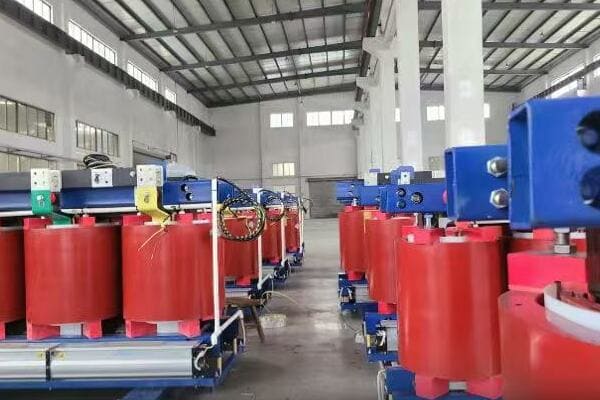
Key Considerations for Environmental Protection
When installing dry type transformers in challenging environments, keep these points in mind:
- Avoid corrosive gas/dust without E2 protection
- Use dry-type units with H-class resin for high humidity
- Add enclosures or filters if in industrial zones
Understanding Environmental Ratings
Dry type transformers come with different environmental protection ratings:
- E0: Basic protection, suitable for clean, dry environments
- E1: Light environmental protection
- E2: Enhanced protection against moisture and pollution
- E3: Highest level of protection for severe environments
I once consulted on a project where a standard E0-rated transformer was installed in a coastal industrial facility. Within months, we observed significant degradation due to salt air and industrial pollutants. Replacing it with an E2-rated unit resolved the issues and significantly extended the transformer’s lifespan.
Dealing with High Humidity
Humidity can be particularly challenging for dry type transformers:
- Consider using transformers with H-class insulation in high-humidity areas
- Implement dehumidification systems in transformer rooms if necessary
- Regular inspections for signs of moisture ingress are crucial
In a recent project in a tropical climate, we installed dry type transformers with H-class resin and additional enclosure ventilation. This combination effectively protected the units from the high ambient humidity, ensuring reliable operation in challenging conditions.
Protection Against Contaminants
Industrial environments often present risks from airborne contaminants:
- Use filtered enclosures in areas with high dust or particulate levels
- Consider sealed designs for environments with corrosive gases
- Regular cleaning and maintenance are essential in contaminated areas
I recall a case where a transformer in a cement plant was failing prematurely due to dust accumulation. We resolved the issue by installing a custom-designed filtered enclosure, which significantly improved the transformer’s performance and lifespan.
Best Practices for Challenging Environments
Follow these guidelines to protect your transformer in difficult conditions:
- Conduct a thorough environmental assessment before installation
- Choose the appropriate environmental rating based on the location
- Implement additional protective measures as needed (e.g., enclosures, filtration)
- Establish a rigorous maintenance schedule for transformers in harsh environments
Here’s a quick reference table for environmental considerations:
| Environmental Factor | Potential Impact | Protective Measure |
|---|---|---|
| High Humidity | Insulation degradation | H-class resin, dehumidification |
| Airborne Dust | Reduced cooling, insulation damage | Filtered enclosures, regular cleaning |
| Corrosive Gases | Accelerated component deterioration | Sealed designs, E2/E3 ratings |
| Salt Air | Corrosion of metal parts | Enhanced corrosion protection, E2/E3 ratings |
By carefully considering the installation environment and implementing appropriate protective measures, you’re not just avoiding a common mistake; you’re ensuring the longevity and reliability of your dry type transformer. Proper environmental protection is crucial for maintaining optimal performance, preventing premature failures, and ultimately, maximizing the return on your investment in this critical equipment.
Mistake #5 – Skipping Torque Checks and Final Testing
Are you confident that your newly installed dry type transformer is ready for safe, efficient operation? Many installers make the critical mistake of rushing through or completely skipping final checks and tests. But why are these final steps so crucial, and what risks do you run by overlooking them?
Skipping torque checks and final testing can lead to immediate failures or long-term reliability issues in dry type transformers. Proper installation requires verifying all connections with a torque wrench, performing insulation resistance tests, and conducting no-load tests before energization. These steps ensure safety, compliance, and optimal performance of the transformer.
Essential Final Checks and Tests
To ensure your dry type transformer is properly installed and ready for operation, focus on these critical steps:
- Check all terminals with torque wrench
- Perform insulation resistance tests
- Run no-load test before energization
- Document commissioning checklist
Importance of Torque Checks
Proper torque on all connections is crucial for safe and efficient operation:
- Use a calibrated torque wrench to verify all electrical connections
- Follow manufacturer’s specifications for torque values
- Re-check torque after initial heat cycles, as connections may loosen
I once investigated a transformer failure that occurred just weeks after installation. The root cause? A single loose connection that had been overlooked during final checks. This oversight led to localized heating, eventual arcing, and a costly shutdown. Since then, I always emphasize the critical importance of thorough torque checks as part of the final installation process.
Conducting Insulation Resistance Tests
Insulation resistance testing is crucial for verifying the integrity of the transformer’s insulation:
- Use a megohmmeter to test insulation resistance between windings and to ground
- Compare results to manufacturer’s specifications
- Investigate any unexpectedly low readings before energization
In a recent project, our insulation resistance test revealed unexpectedly low values. Further investigation uncovered moisture ingress during transportation. By identifying this issue before energization, we avoided potential insulation failure and were able to properly dry out the transformer before putting it into service.
Performing No-Load Tests
No-load testing provides valuable information about the transformer’s core performance:
- Measure input voltage, current, and power under no-load conditions
- Compare results to factory test reports
- Investigate any significant deviations from expected values
I recall a case where a no-load test revealed abnormally high current draw. This led us to discover a manufacturing defect in the core, which could have caused significant inefficiency and potential failure if not caught during this crucial test.
Documenting the Commissioning Process
Proper documentation is essential for future reference and maintenance:
- Create a comprehensive commissioning checklist
- Record all test results and observations
- Include photographs of key installation aspects
Here’s a sample commissioning checklist:
| Task | Verified (✔) | Notes |
|---|---|---|
| Clearance around unit | ☐ | |
| Grounding connections | ☐ | |
| Cable termination checked | ☐ | |
| Torque measurements | ☐ | |
| Insulation resistance test | ☐ | |
| No-load test | ☐ | |
| Visual inspection complete | ☐ |
Best Practices for Final Checks and Testing
Follow these guidelines to ensure thorough final checks:
- Allocate sufficient time for testing – rushing can lead to oversights
- Use calibrated test equipment for accurate results
- Have a second technician verify critical measurements
- Address any anomalies or unexpected results before energization
By meticulously performing these final checks and tests, you’re not just avoiding a common installation mistake; you’re ensuring the safety, reliability, and efficiency of your dry type transformer from day one. These steps are crucial for catching any issues that may have been overlooked during the installation process and provide a baseline for future maintenance and troubleshooting.
Installation Checklist for Dry Type Transformers
Are you looking for a comprehensive guide to ensure your dry type transformer installation is flawless? Look no further. This checklist covers all the critical steps you need to follow for a safe, efficient, and compliant installation.
A thorough installation checklist for dry type transformers includes verifying proper ventilation, correct grounding, secure cable terminations, environmental suitability, and comprehensive final testing. Following this checklist ensures optimal performance, safety compliance, and longevity of the transformer.
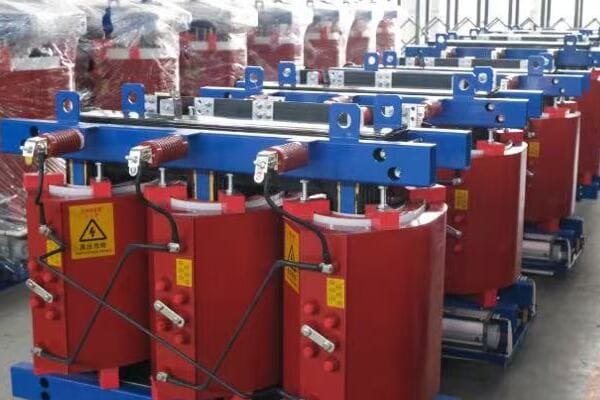
Complete Installation Checklist
Use this comprehensive checklist to guide your dry type transformer installation:
| Task | Verified (✔) | Notes |
|---|---|---|
| Ventilation and Clearance | ||
| Minimum clearance on all sides met | ☐ | |
| No obstructions to airflow | ☐ | |
| Room temperature within specs | ☐ | |
| Grounding | ||
| Proper grounding lug used | ☐ | |
| Grounding conductor sized correctly | ☐ | |
| Continuity to system ground verified | ☐ | |
| Cable Termination | ||
| Cables properly supported | ☐ | |
| Correct lugs used | ☐ | |
| Torque applied as per specs | ☐ | |
| Environmental Considerations | ||
| Transformer rating matches environment | ☐ | |
| Protection from contaminants in place | ☐ | |
| Humidity levels within acceptable range | ☐ | |
| Final Checks and Testing | ||
| All connections torque checked | ☐ | |
| Insulation resistance test performed | ☐ | |
| No-load test conducted | ☐ | |
| Visual inspection complete | ☐ | |
| Documentation | ||
| All test results recorded | ☐ | |
| Installation photos taken | ☐ | |
| Commissioning report completed | ☐ |
Using the Checklist Effectively
To make the most of this checklist:
- Review it before starting the installation to ensure you have all necessary tools and equipment.
- Use it as a step-by-step guide during the installation process.
- Have a second person verify each item for added safety and accuracy.
- Keep the completed checklist as part of your permanent installation records.
By following this comprehensive checklist, you’ll significantly reduce the risk of installation errors and ensure your dry type transformer is set up for optimal performance and longevity.
Conclusion
Avoiding these top 5 installation mistakes—improper ventilation, incorrect grounding, faulty cable termination, unsuitable environmental placement, and skipping final checks—is crucial for the safe and efficient operation of dry type transformers. By following the provided checklist and best practices, you can ensure a reliable, long-lasting installation that meets all safety and performance standards.
Remember, at chbeb-ele, we’re not just sharing information – we’re empowering you to be part of the solution in creating a secure, clean, and efficient energy future. Let’s continue this journey together.
Free CHBEB Transformer Catalog Download
Get the full range of CHBEB transformers in one catalog.
Includes oil-immersed, dry-type, pad-mounted, and custom solutions.
Quick Message
Request A free quote
We'd like to work with you
- +86 15558785111
- [email protected]
- +86 15558785111
What We Do
CHINA BEI ER BIAN (CHBEB) GROUP, with 218 million in registered capital, originated from Beijing Beierbian Transformer Group. Headquartered in Beijing for R&D, it operates major production bases in Nanjing and Yueqing, producing high-quality products.
Latest Product
address
BeiJing
No 3,RongJing East Road,BeiJing Economic Technological Development Area,BeiJing,China
JiangSu
No 7️Xiangfeng Road,Jiangning,NanJing,JiangSu,China
WenZhou
No.211, Wei 16 Road, Industrial Zone, Yueqing, Wenzhou, Zhejiang, China.
XiangYang Industrial Zone ,YueQing,WenZhou,ZheJiang,China
contact us
- [email protected]
- +86 13057780111
- +86 13057780111
- +86 15558785111
Copyright © Bei Er Bian Group

